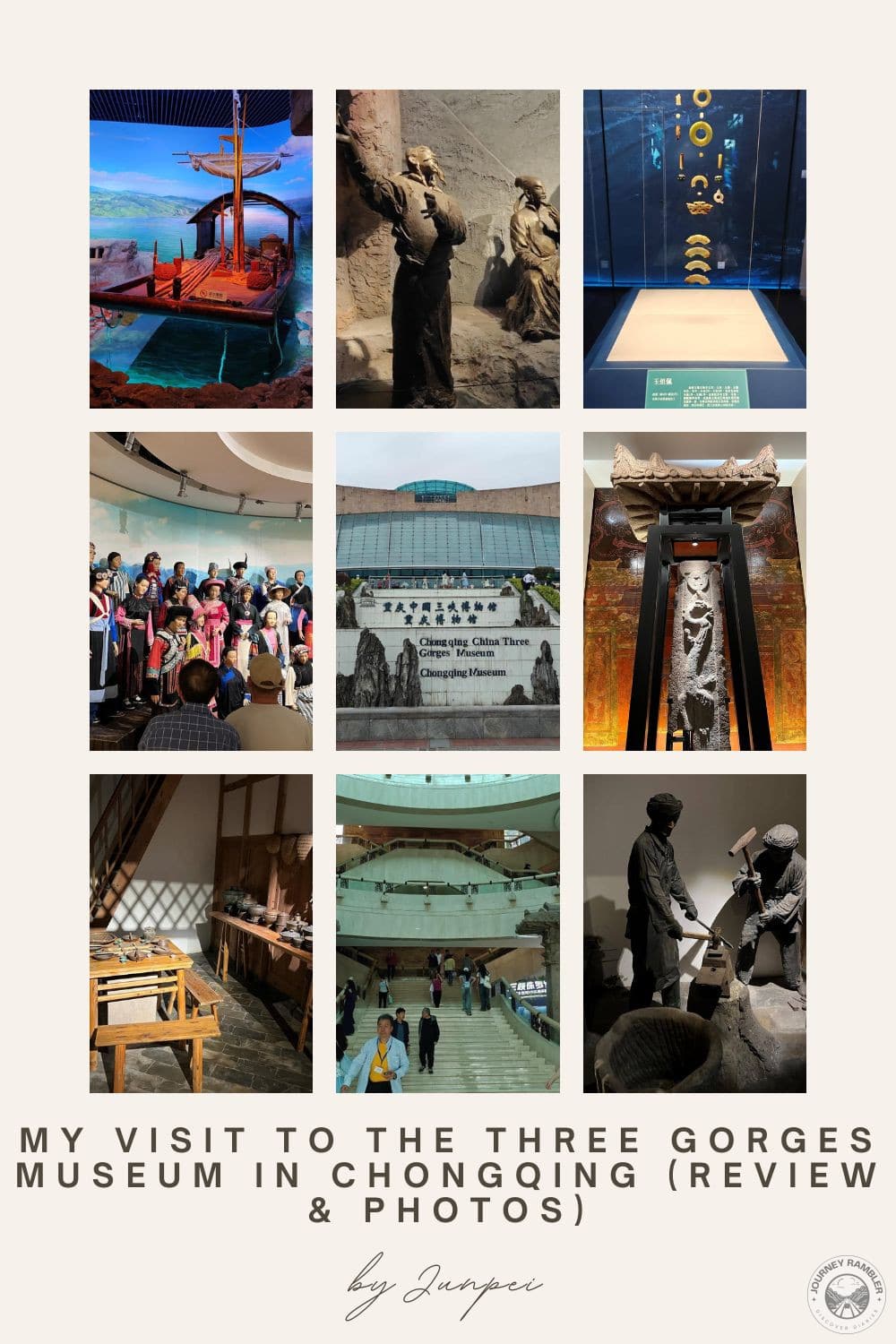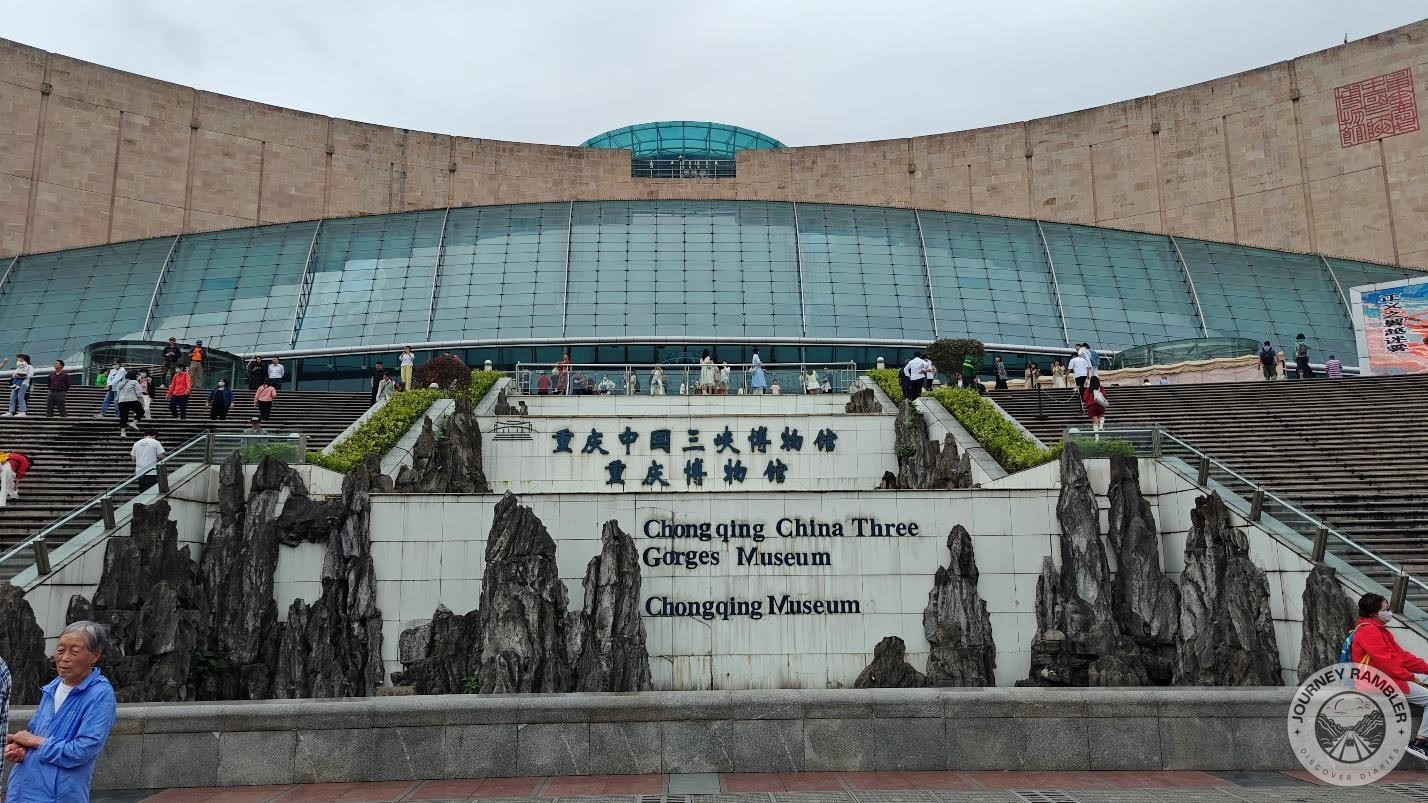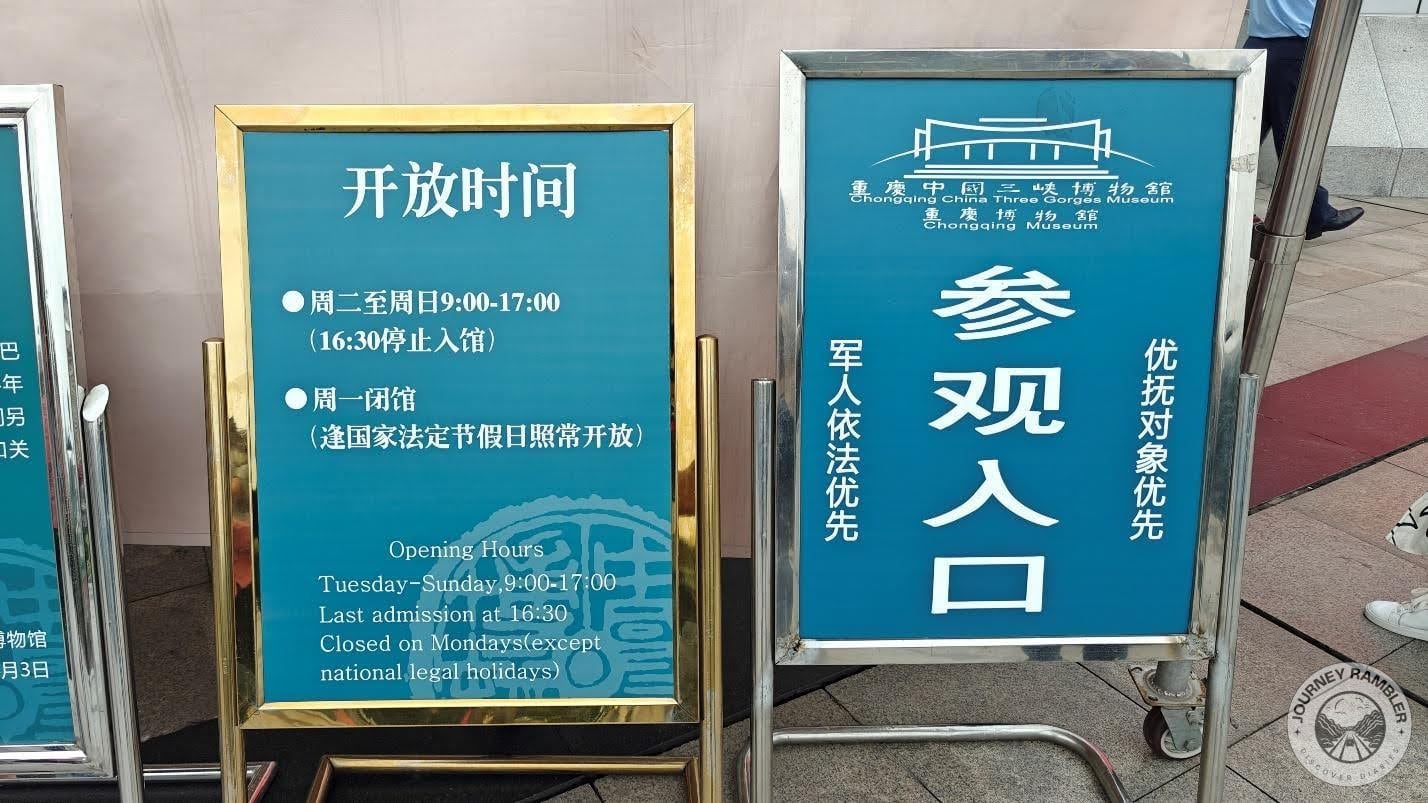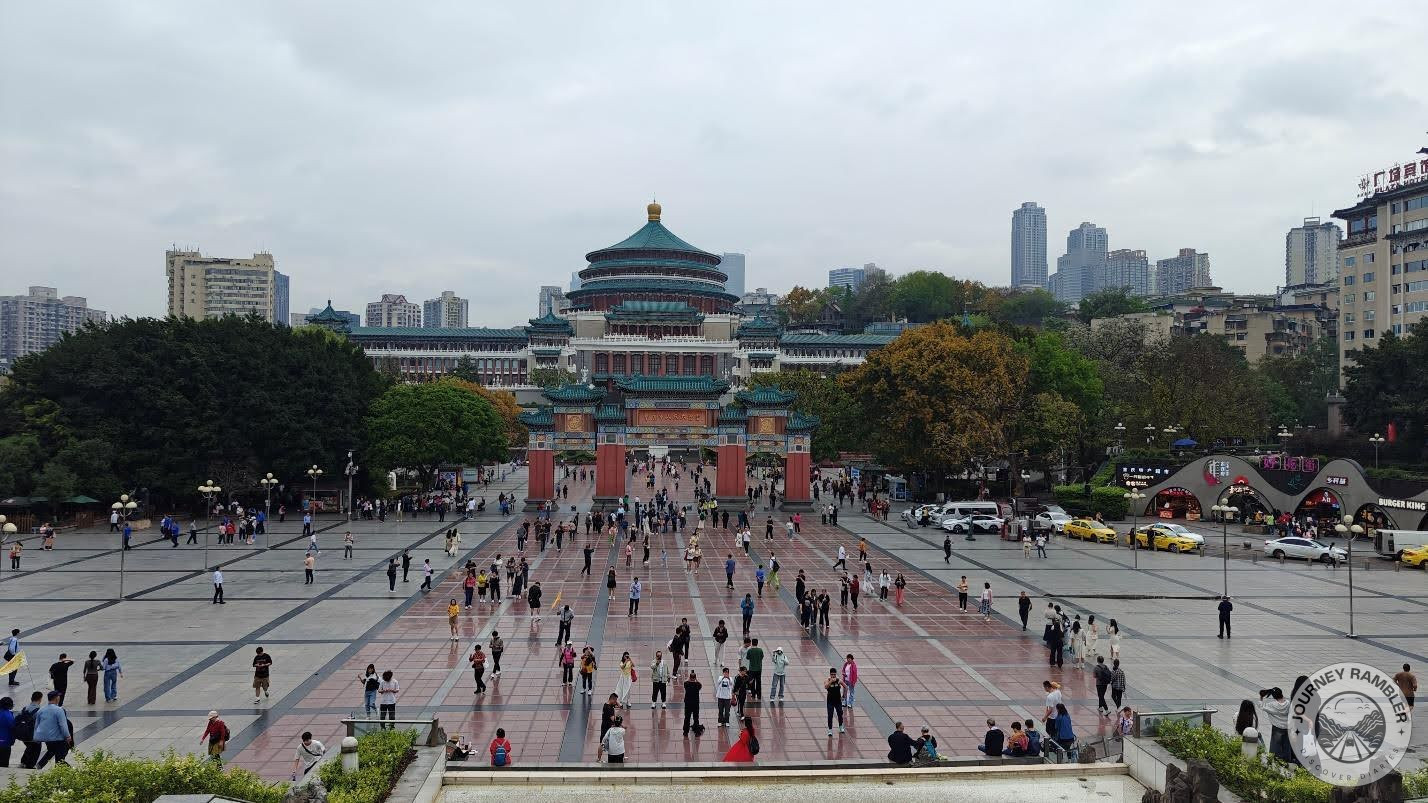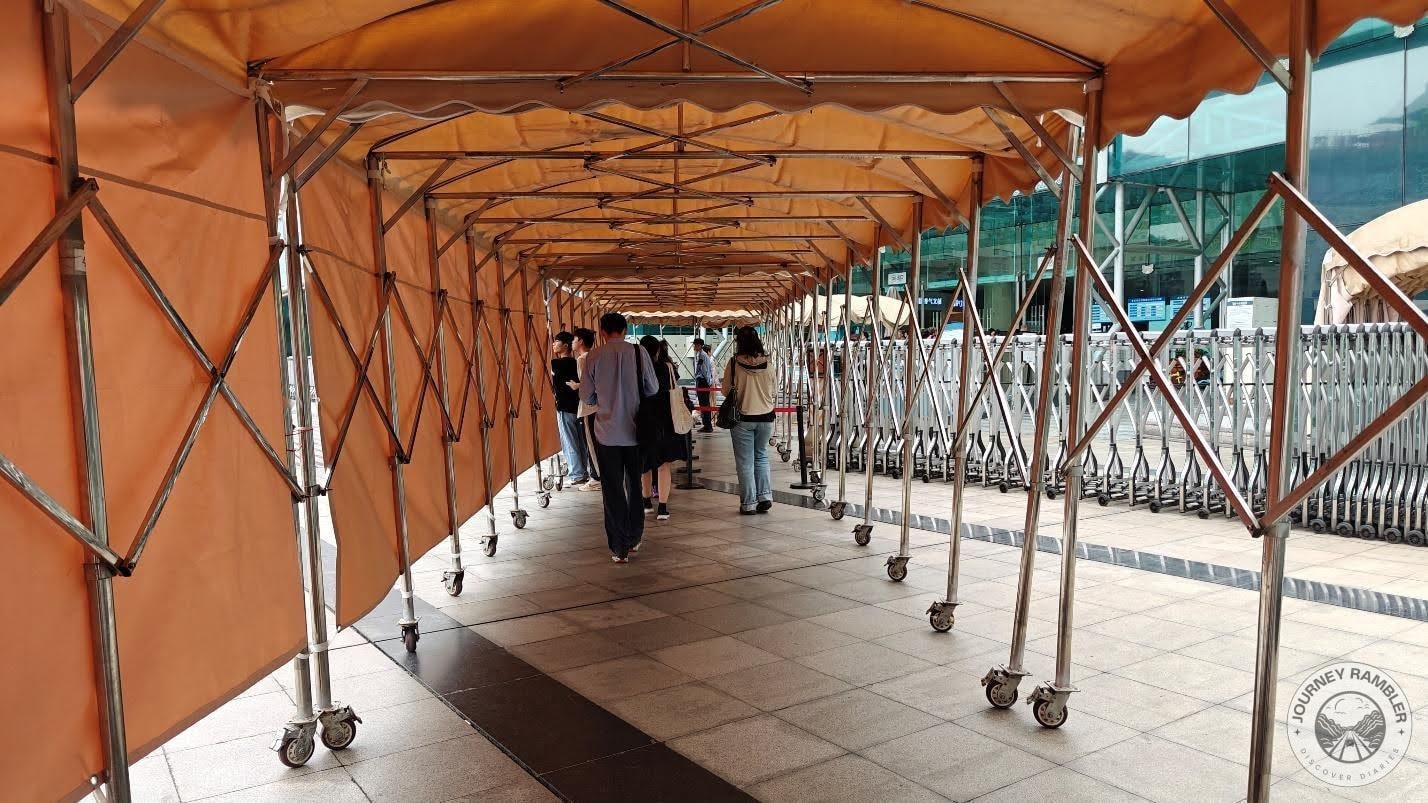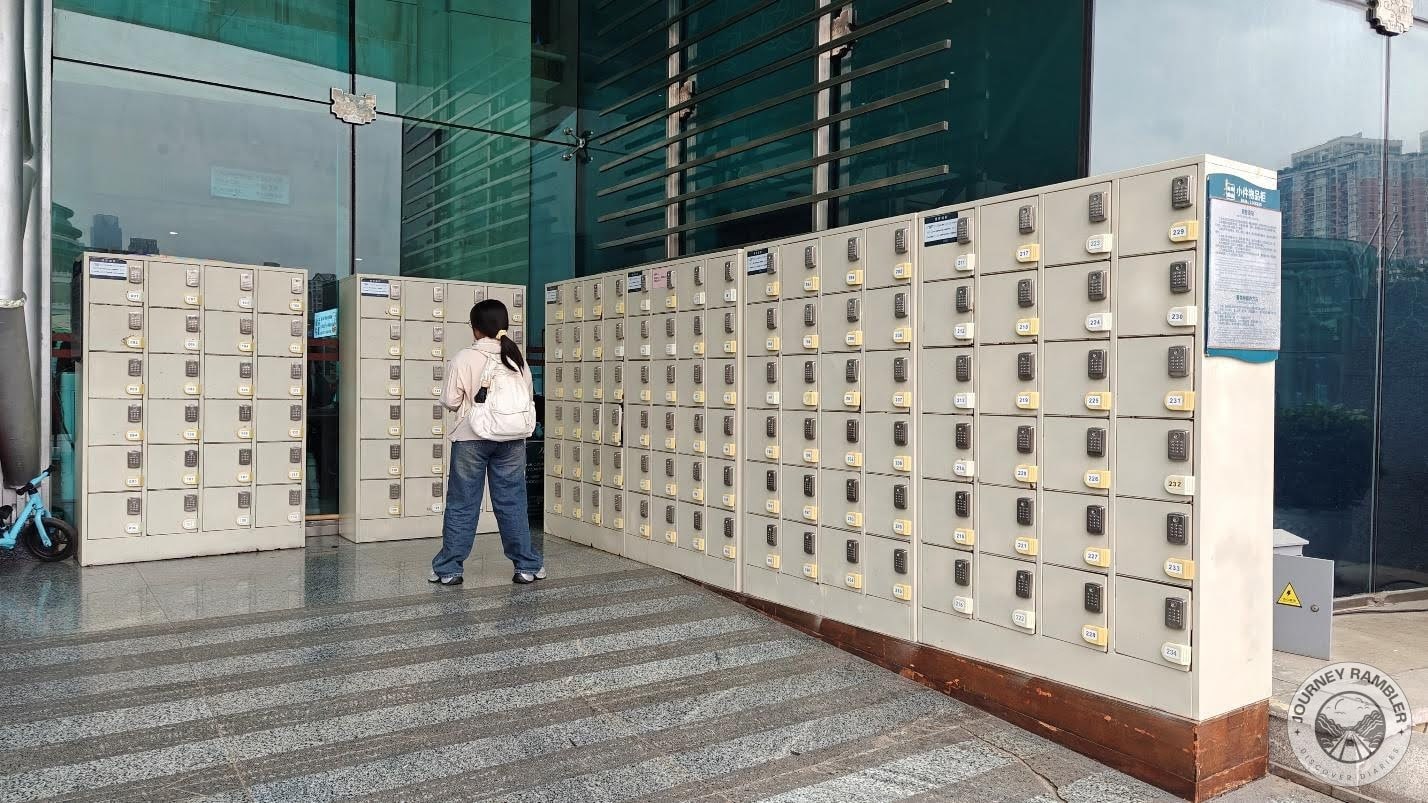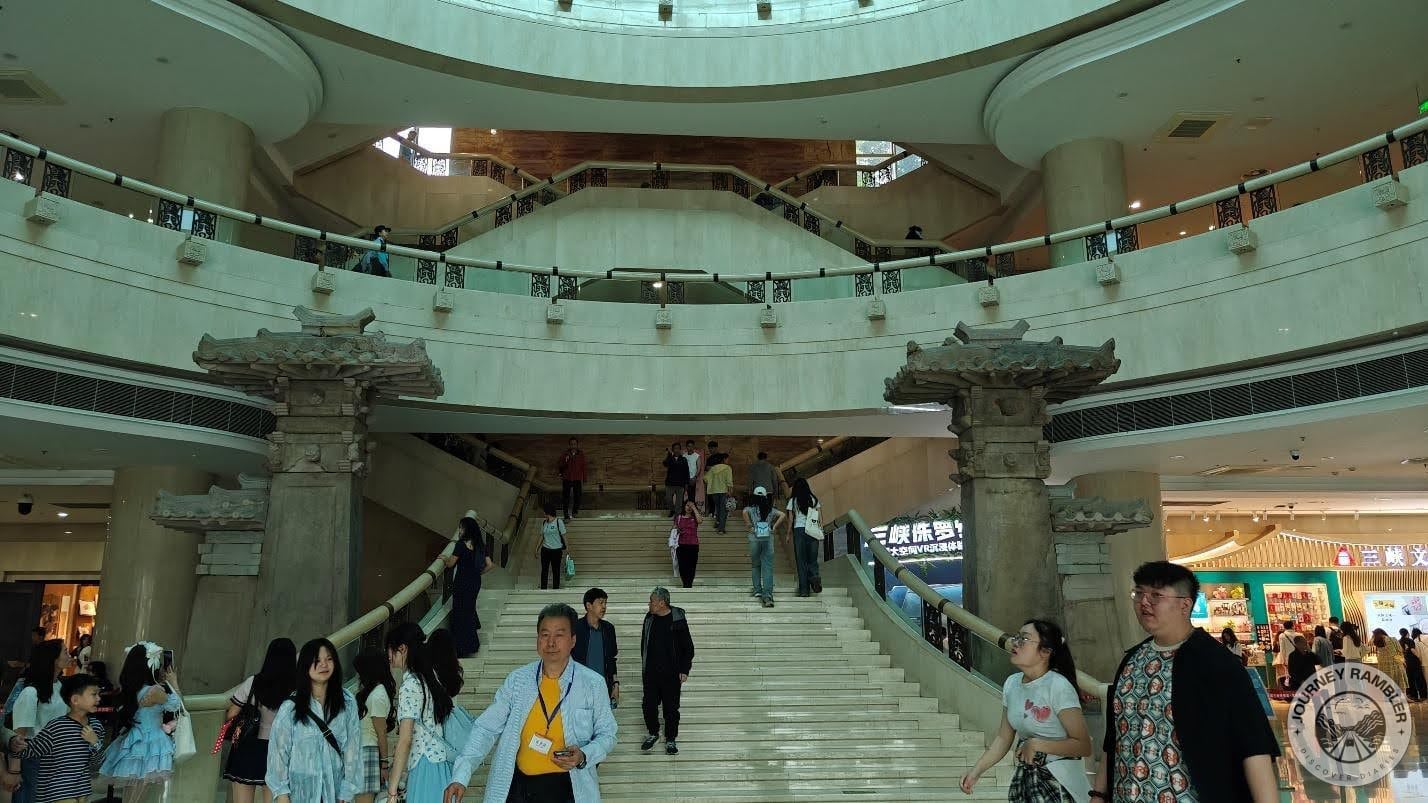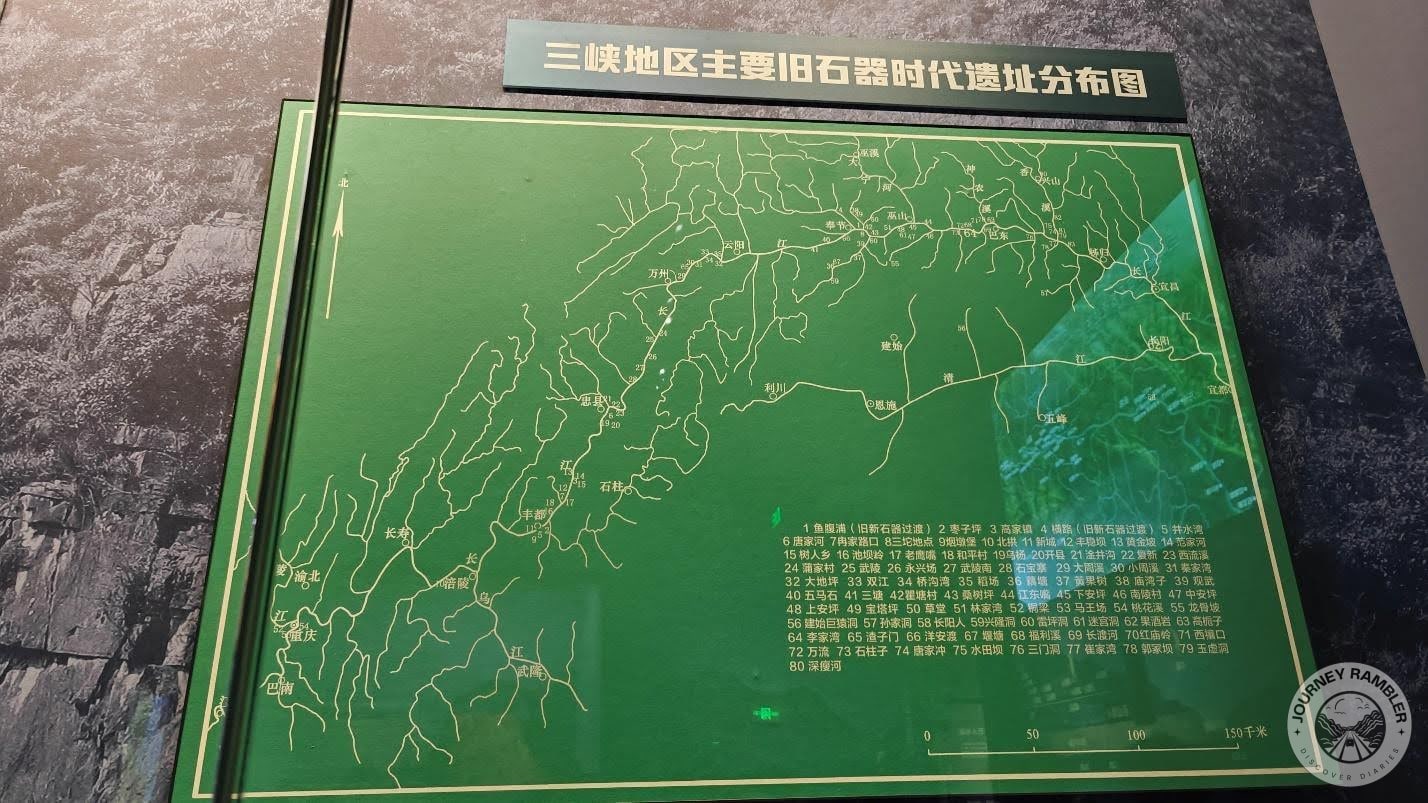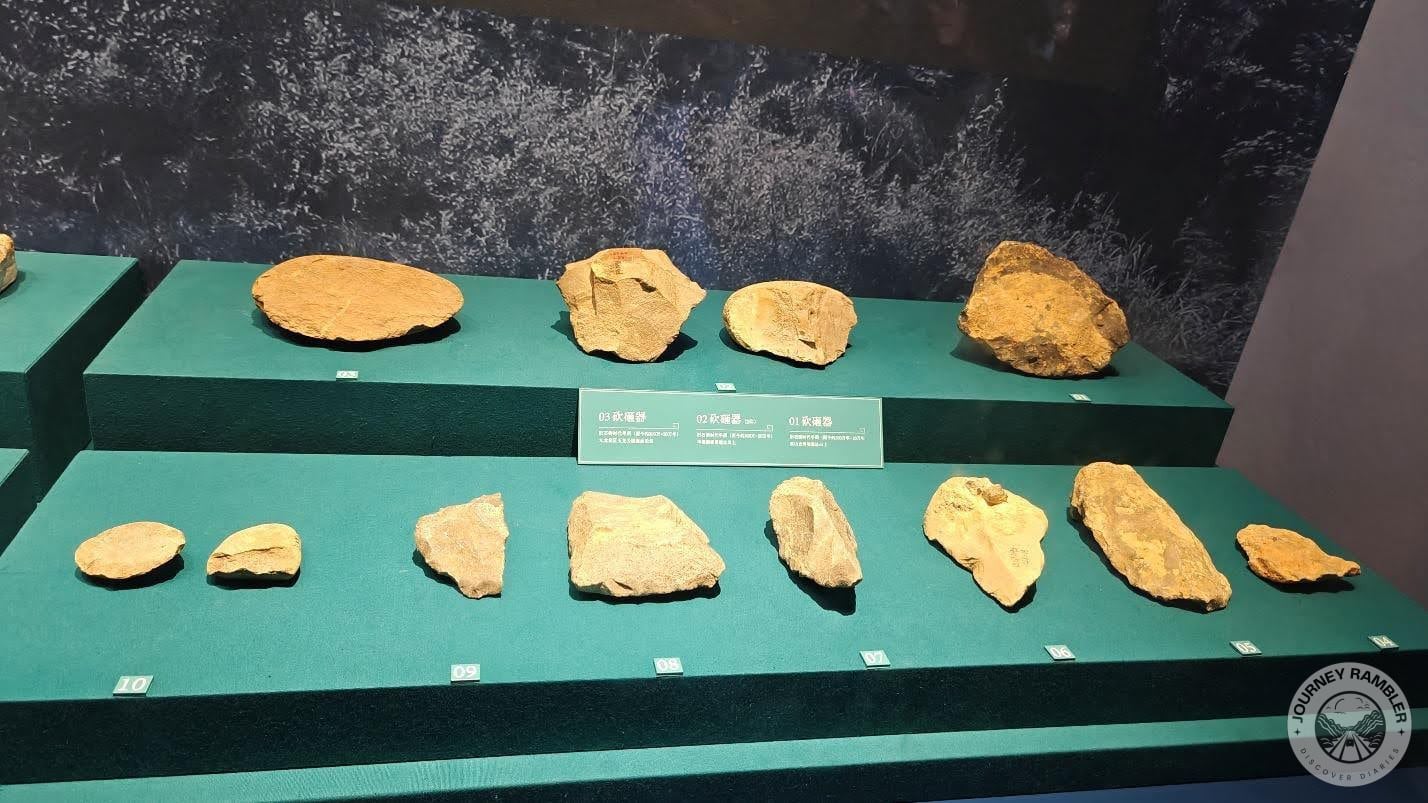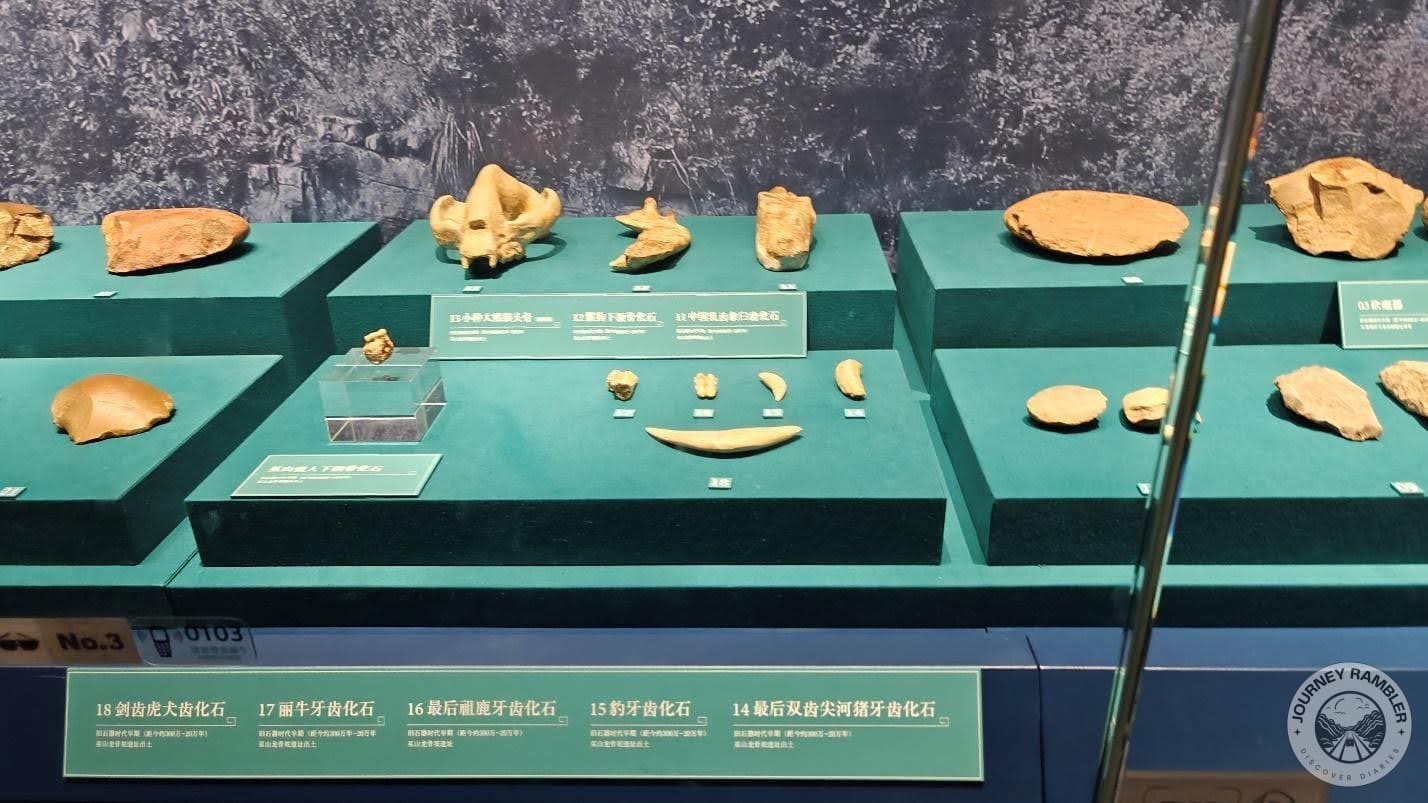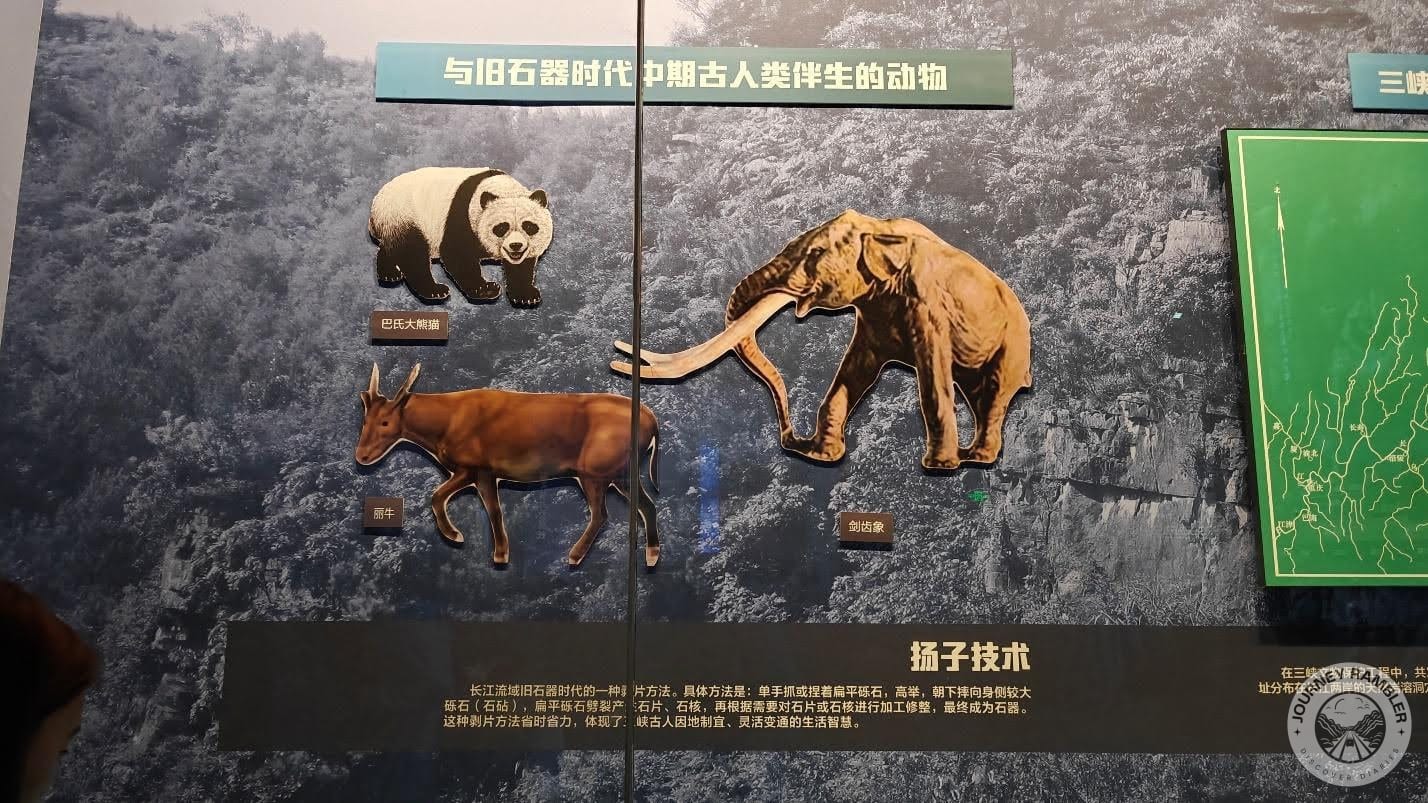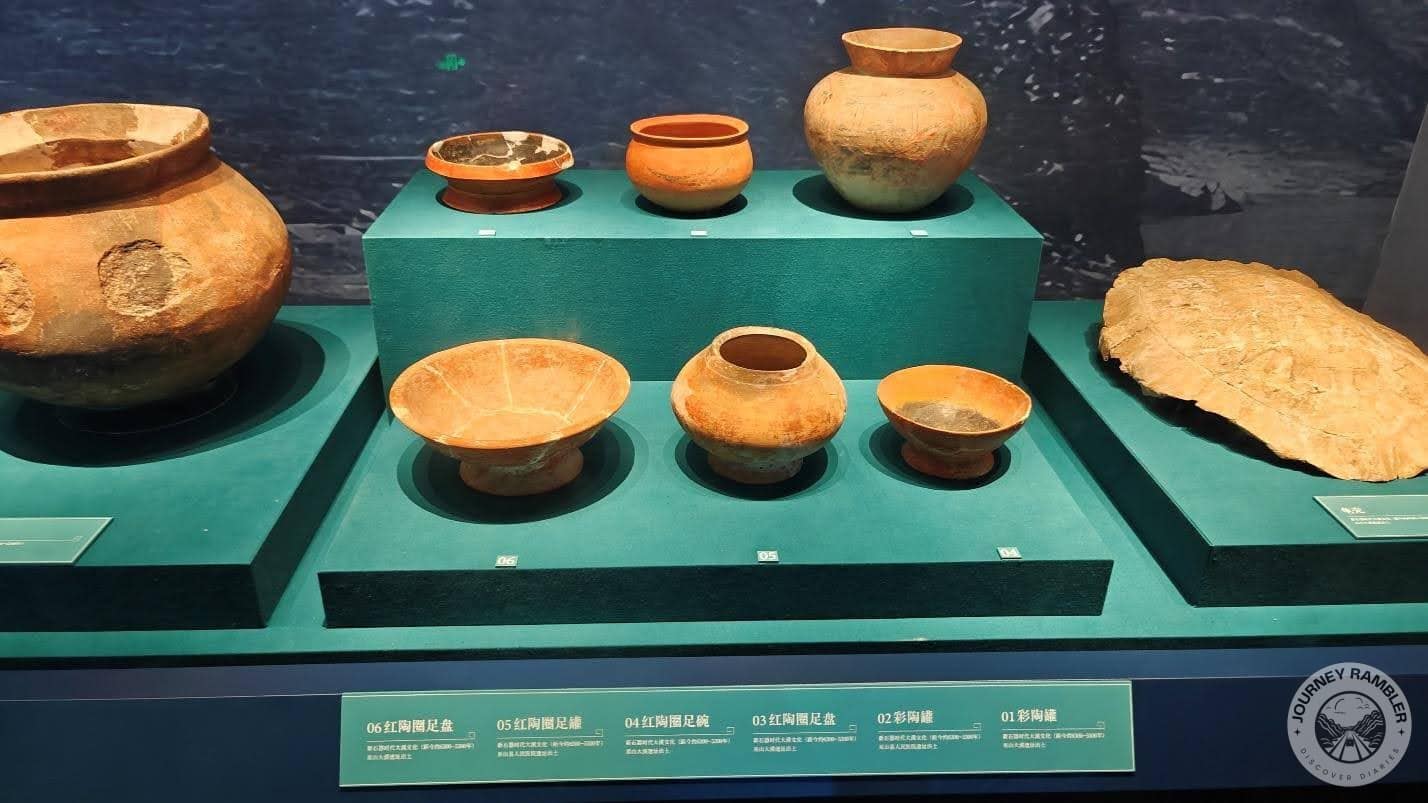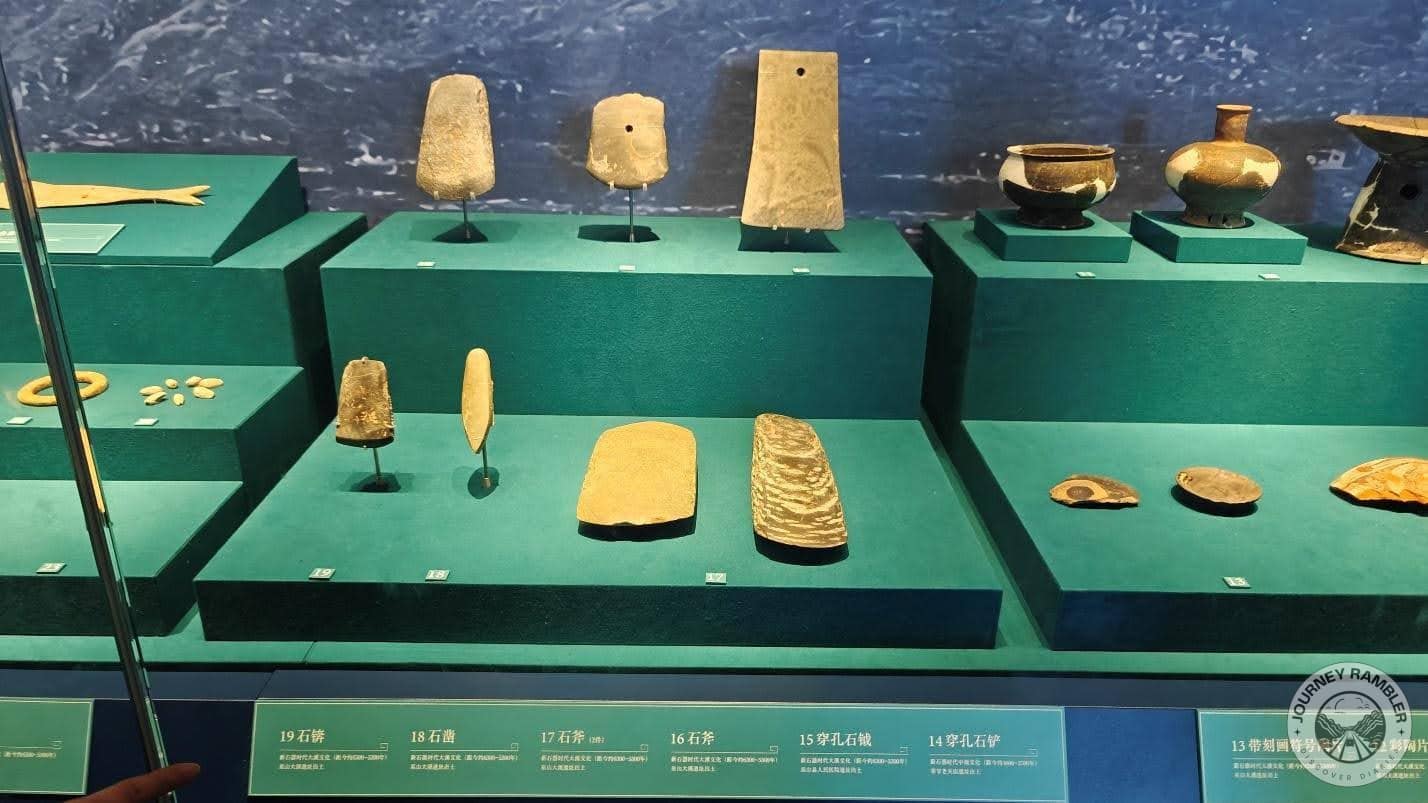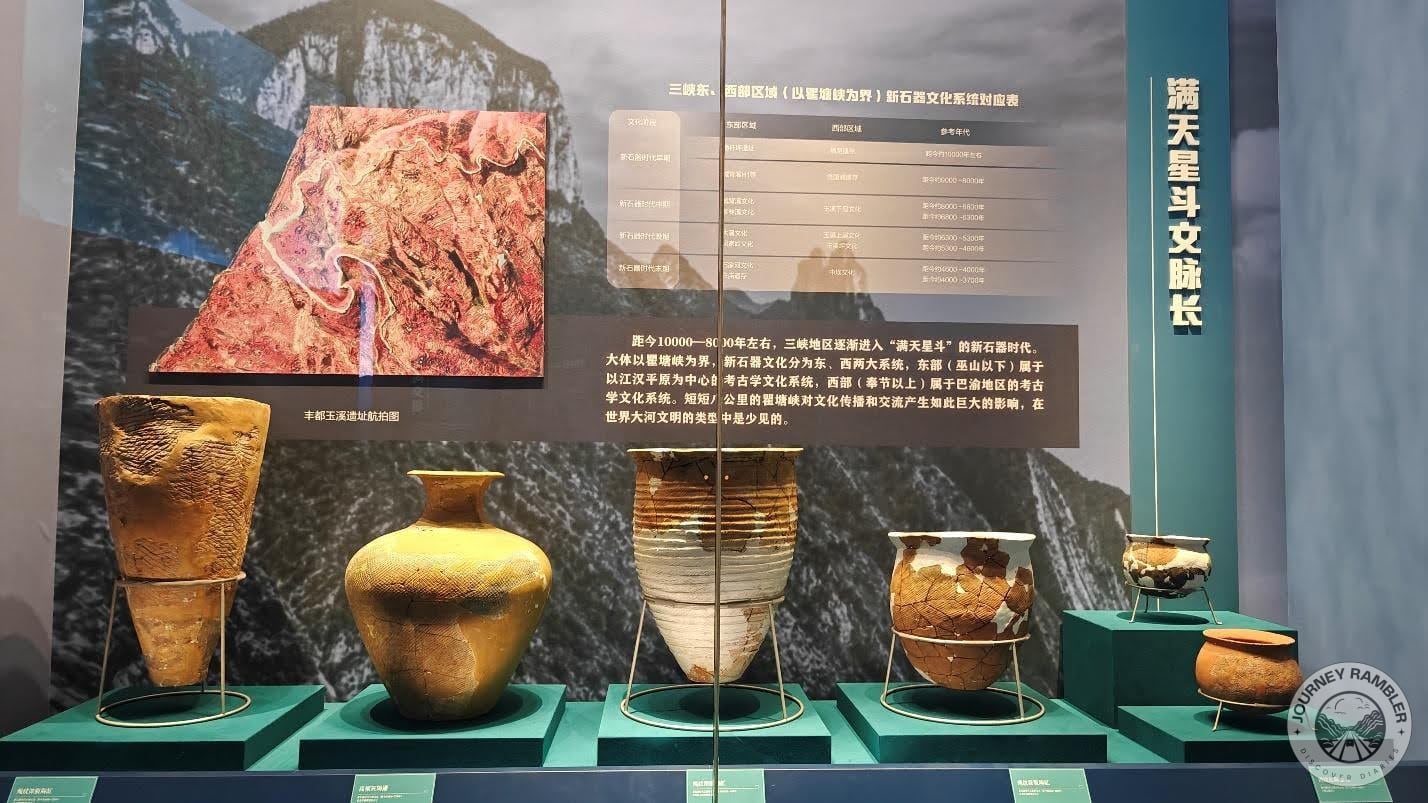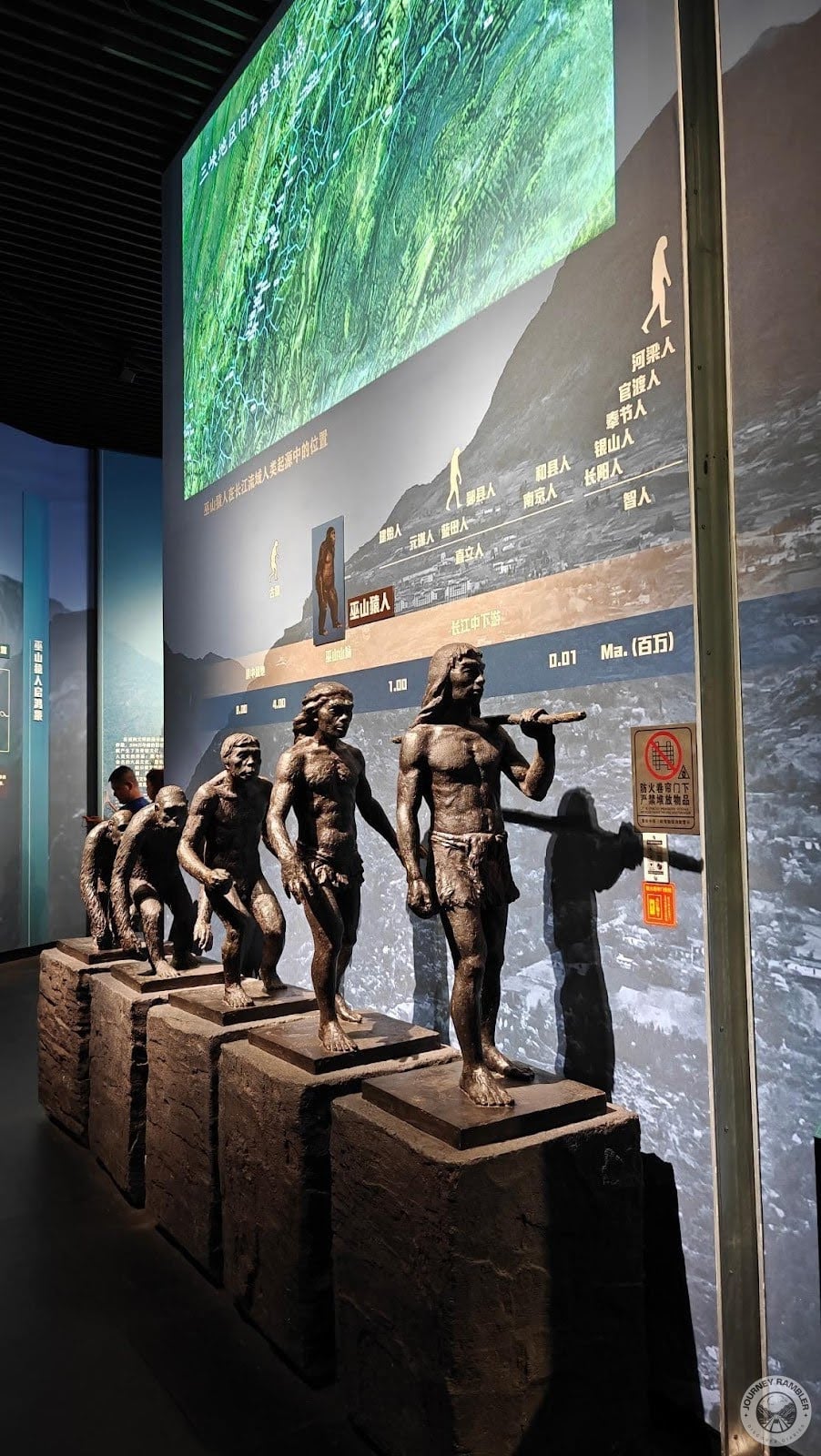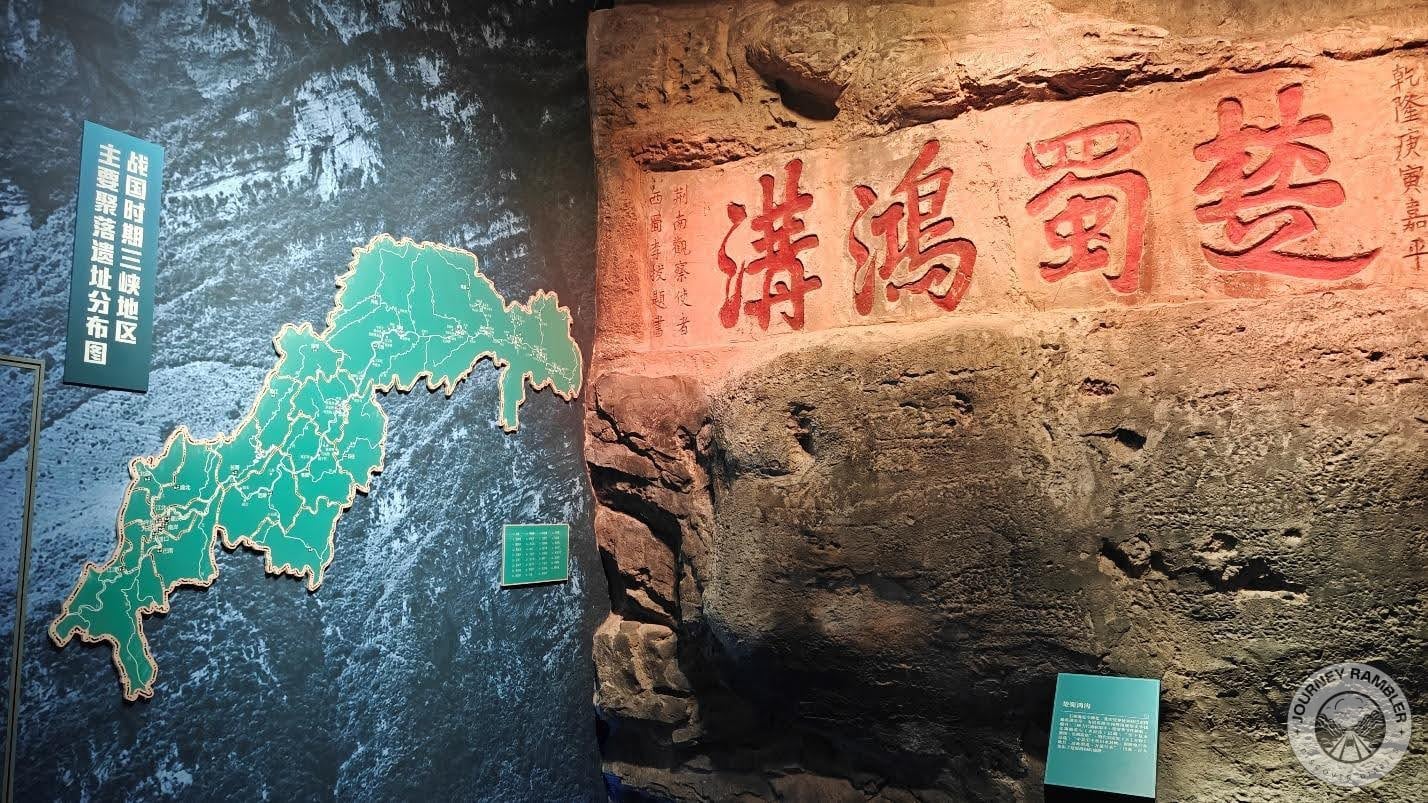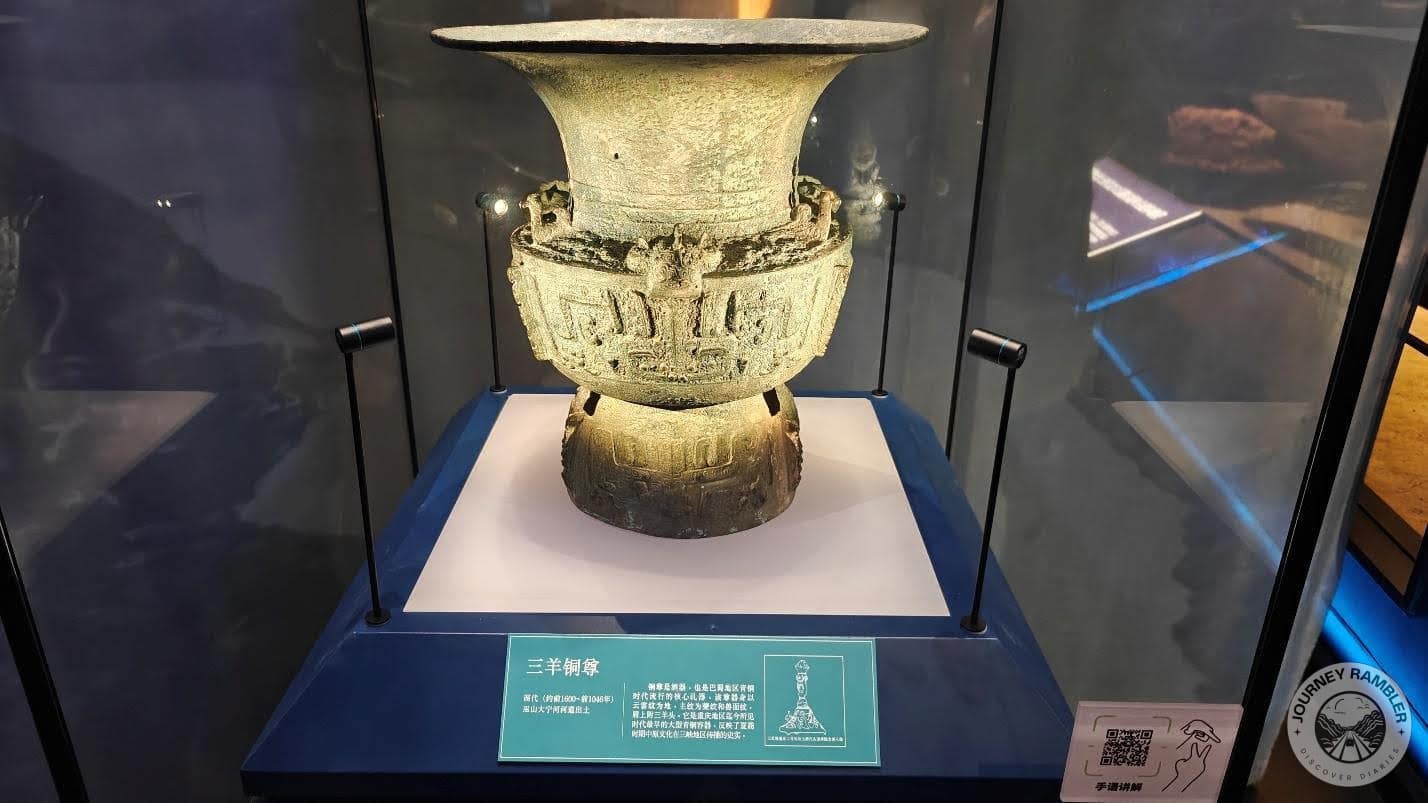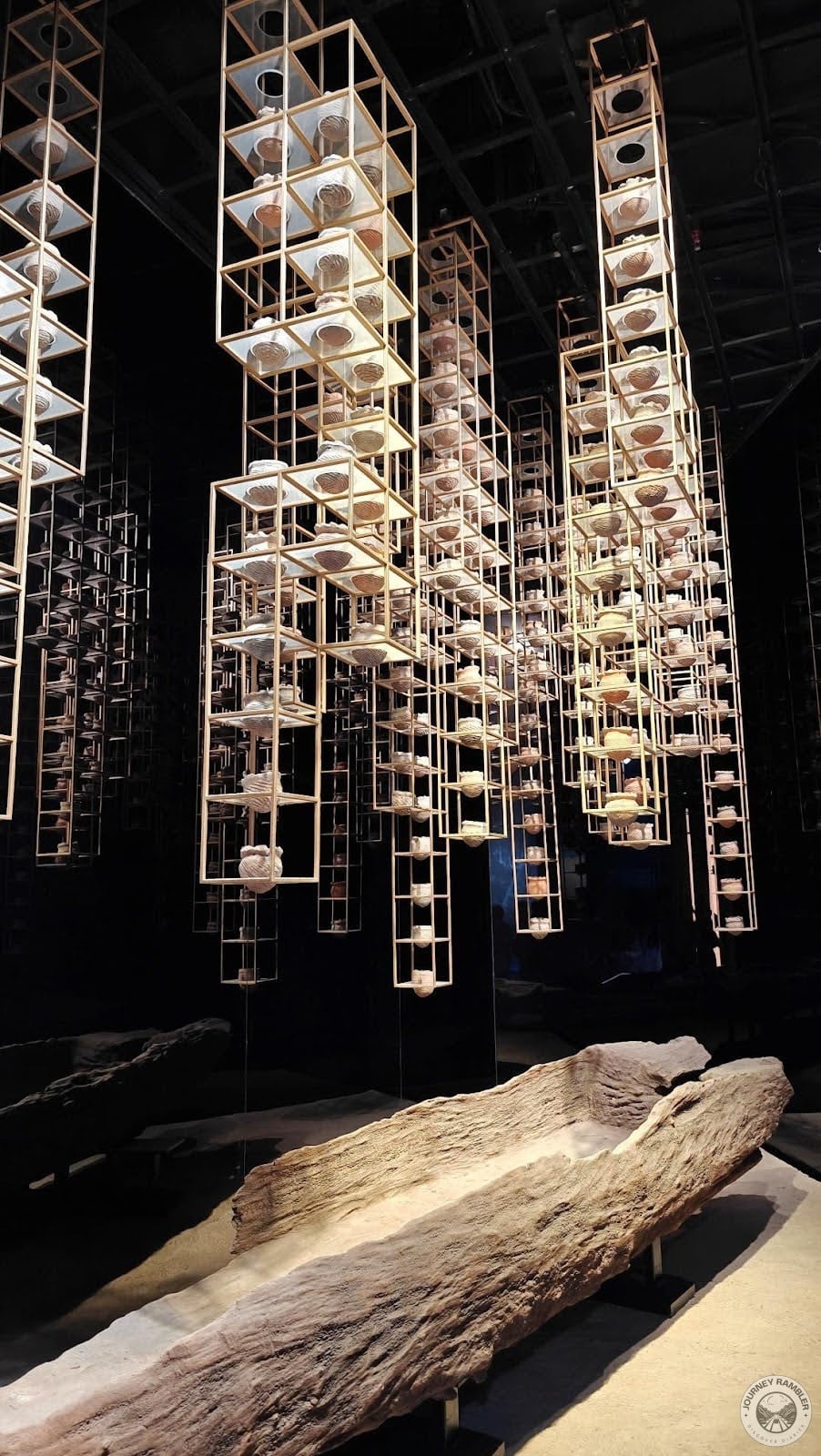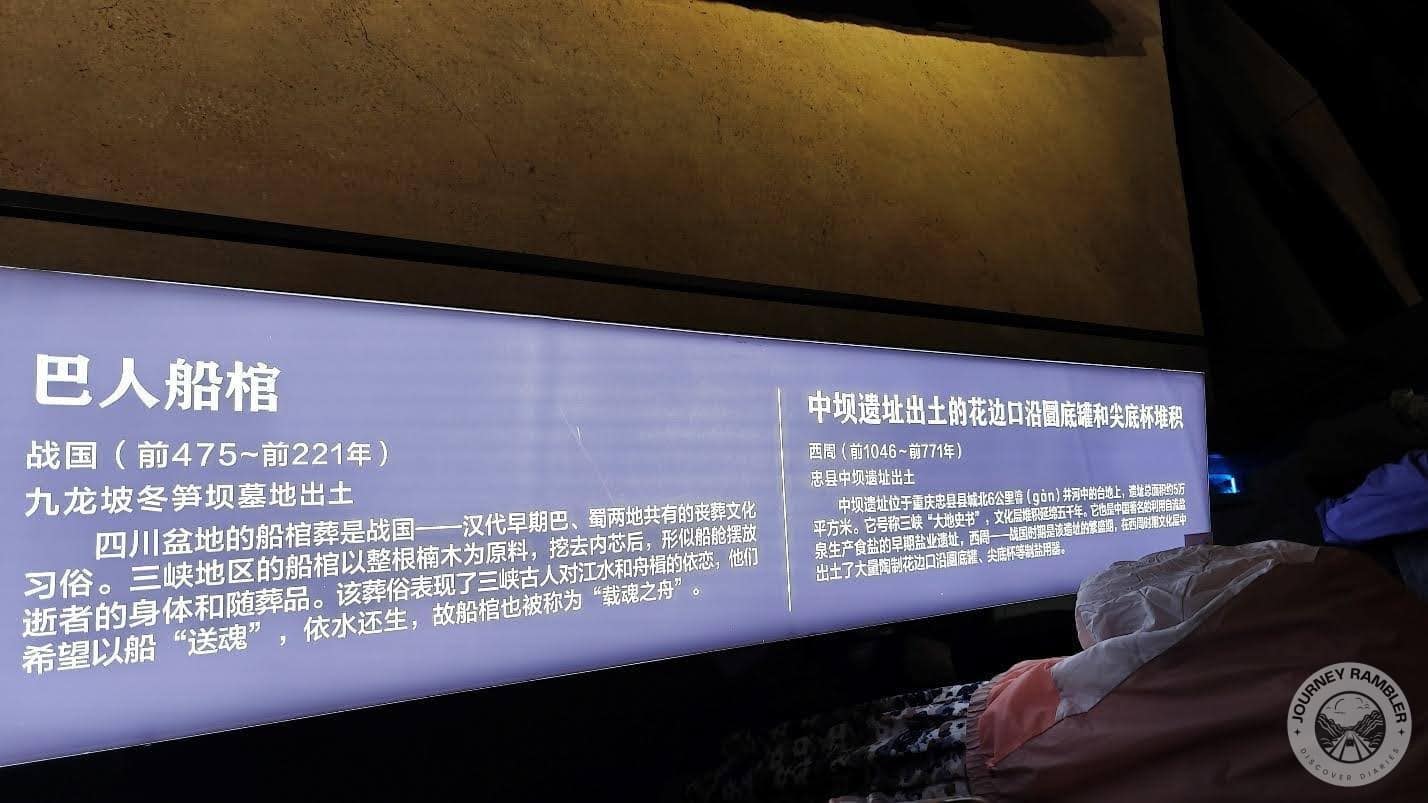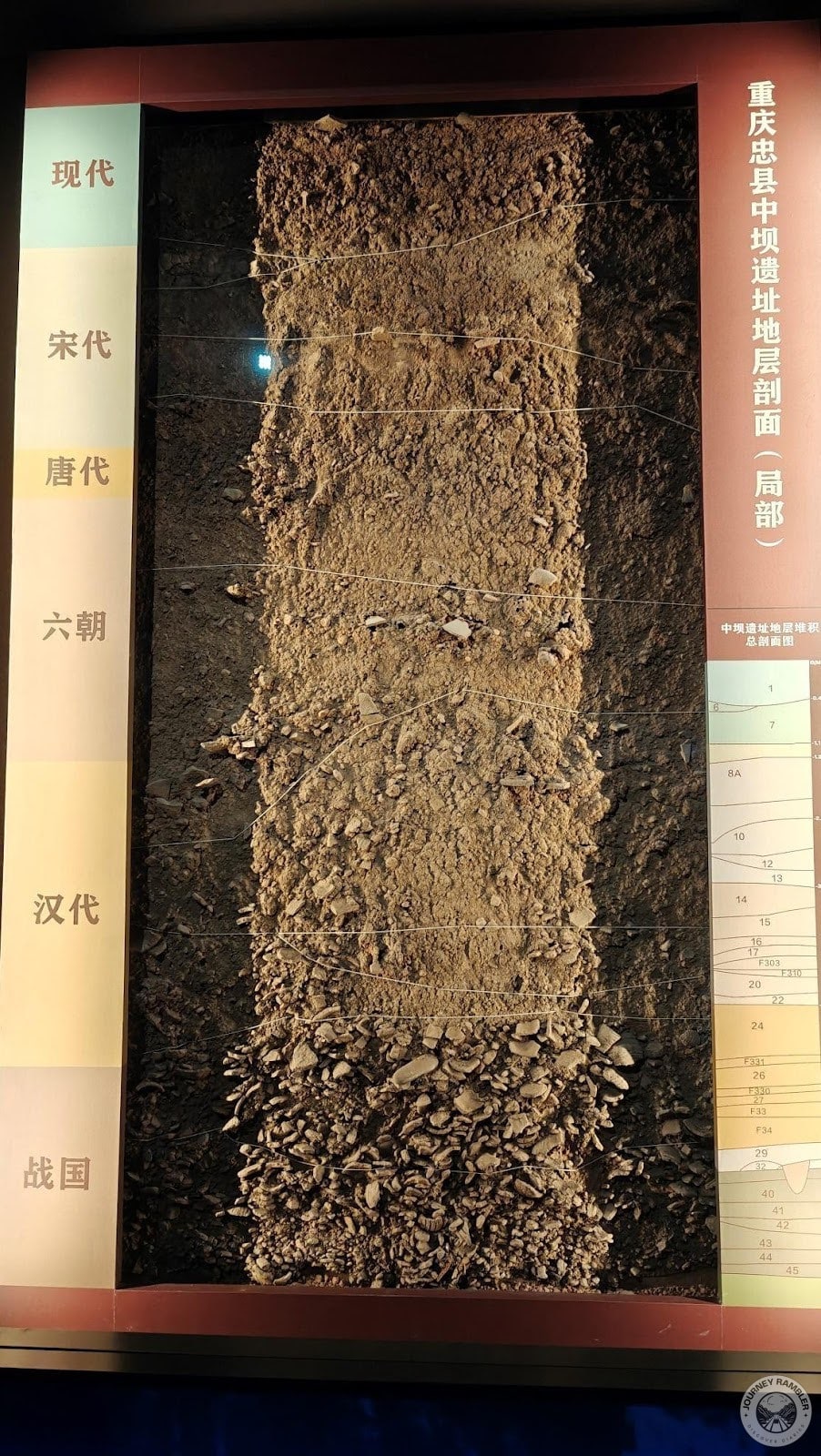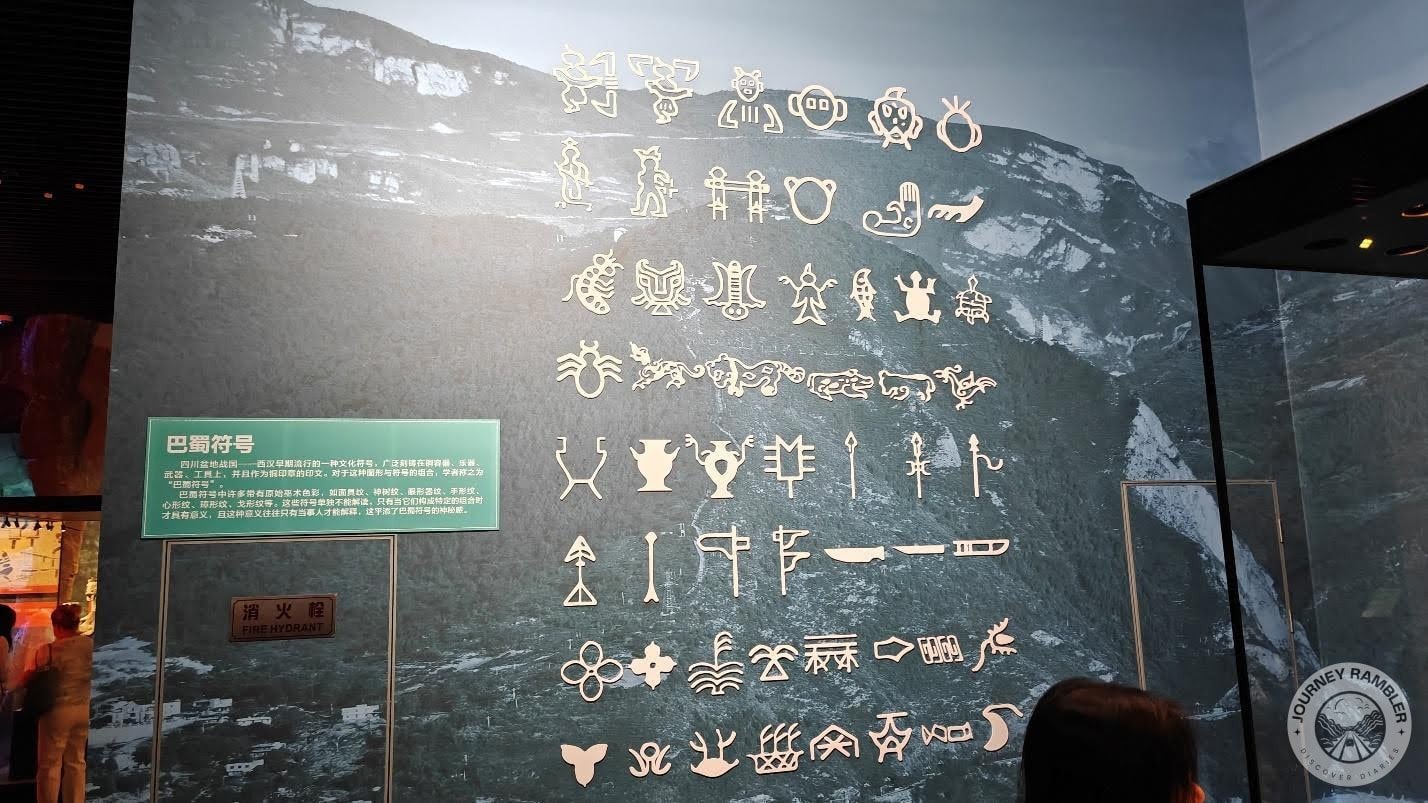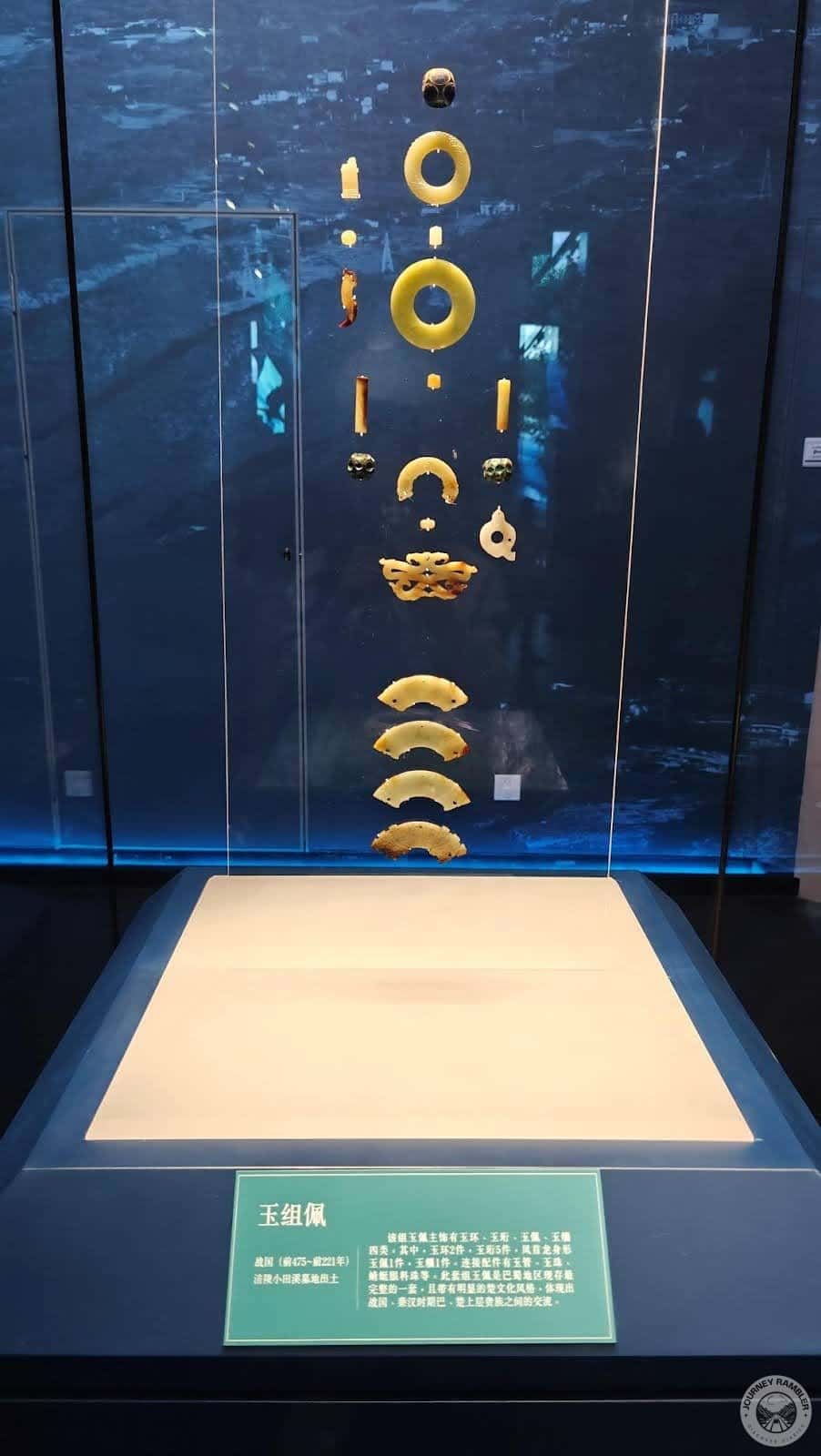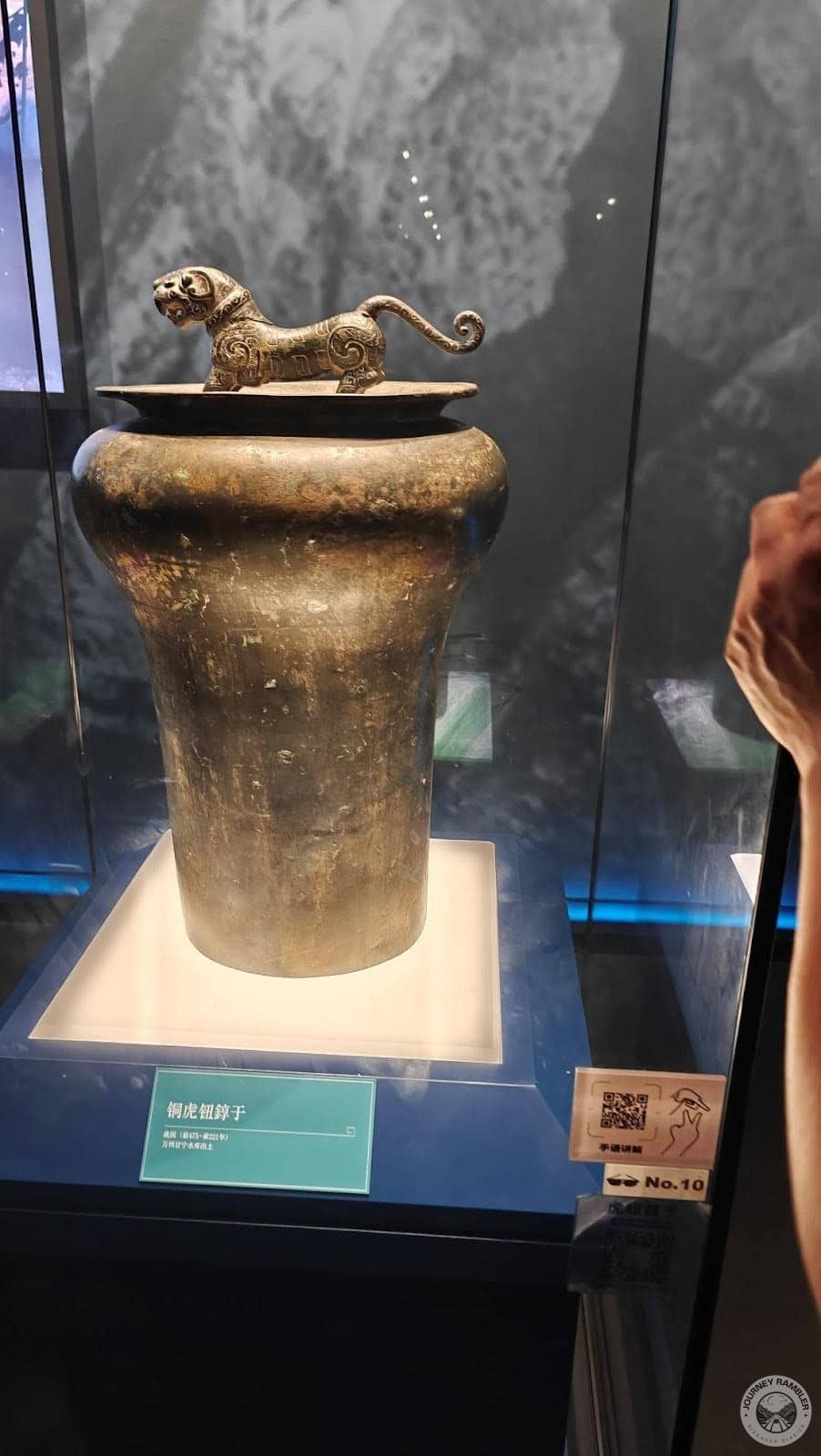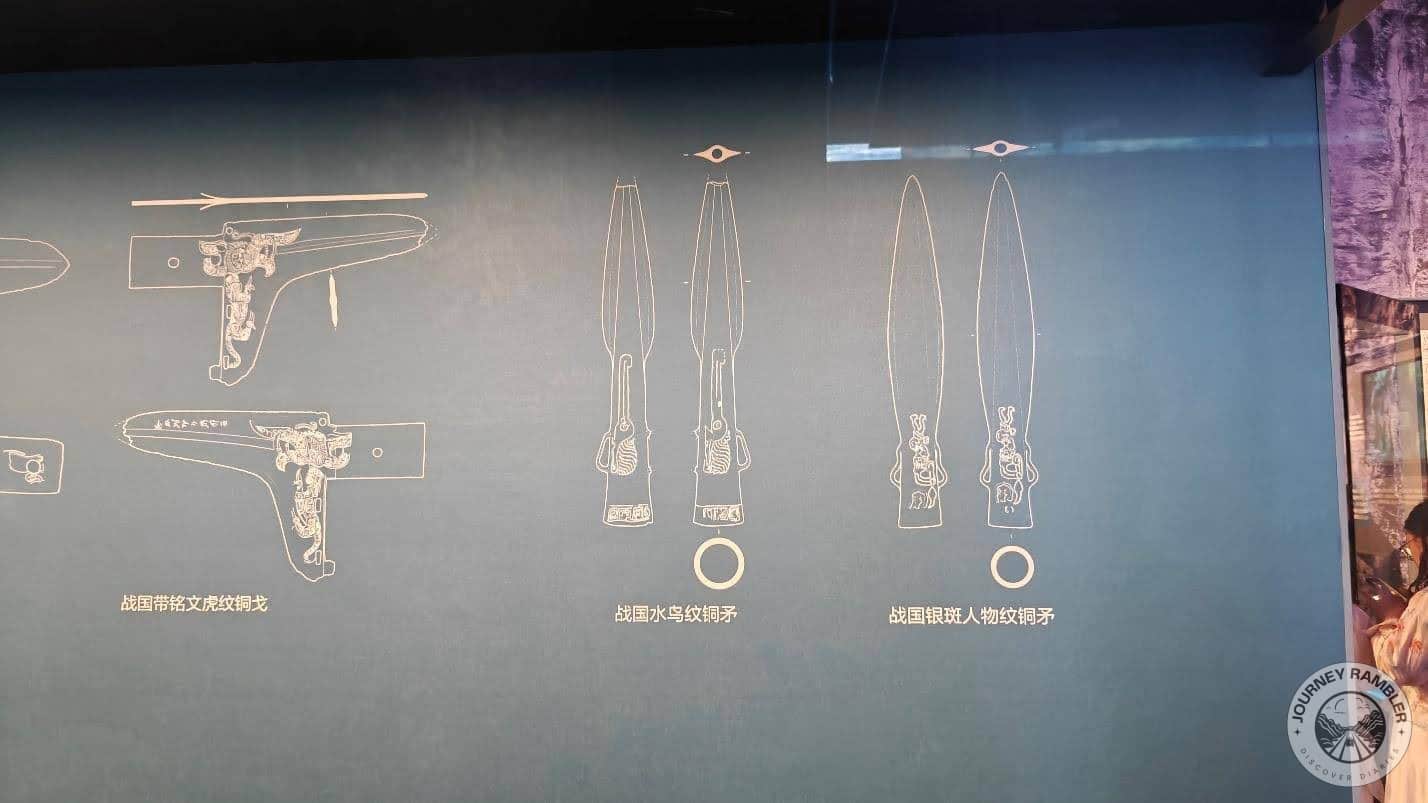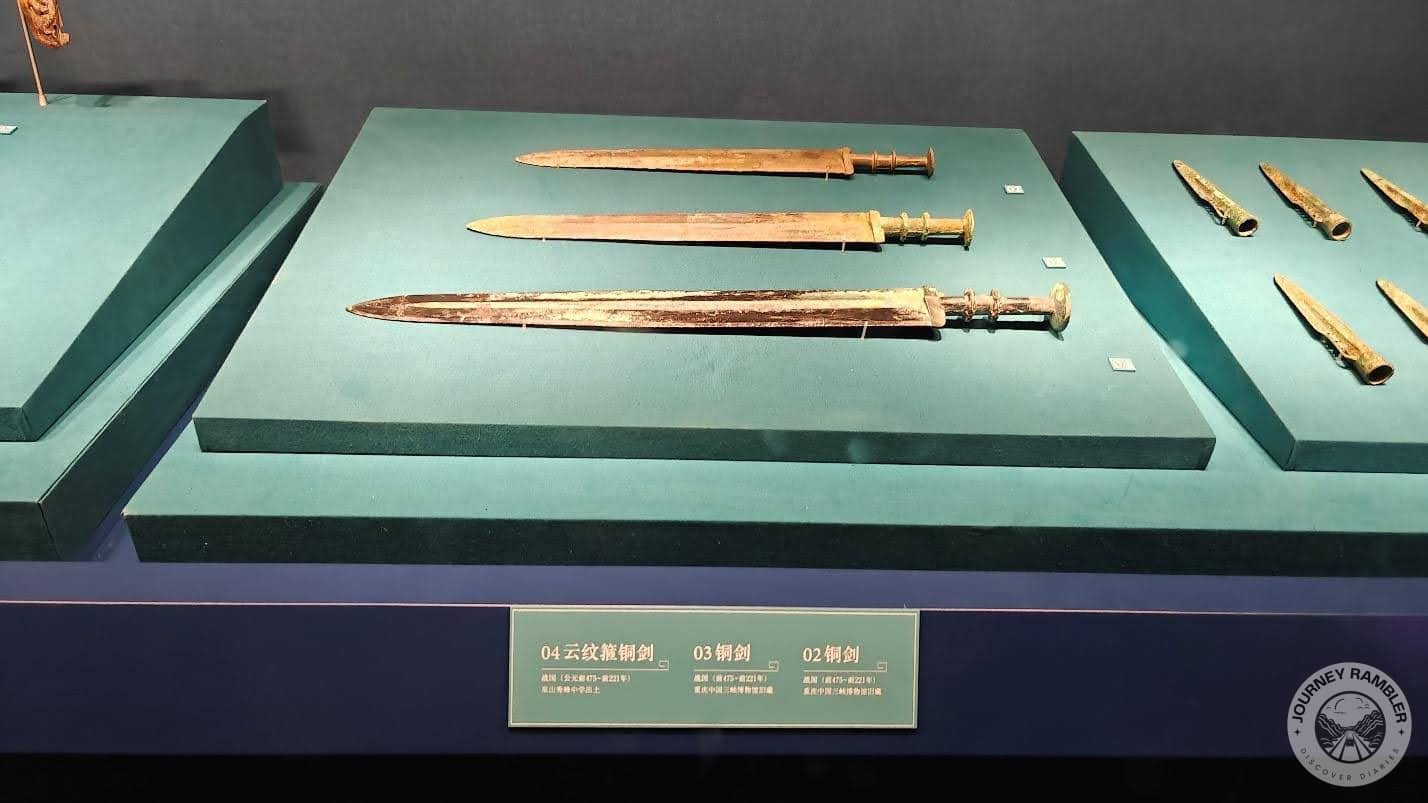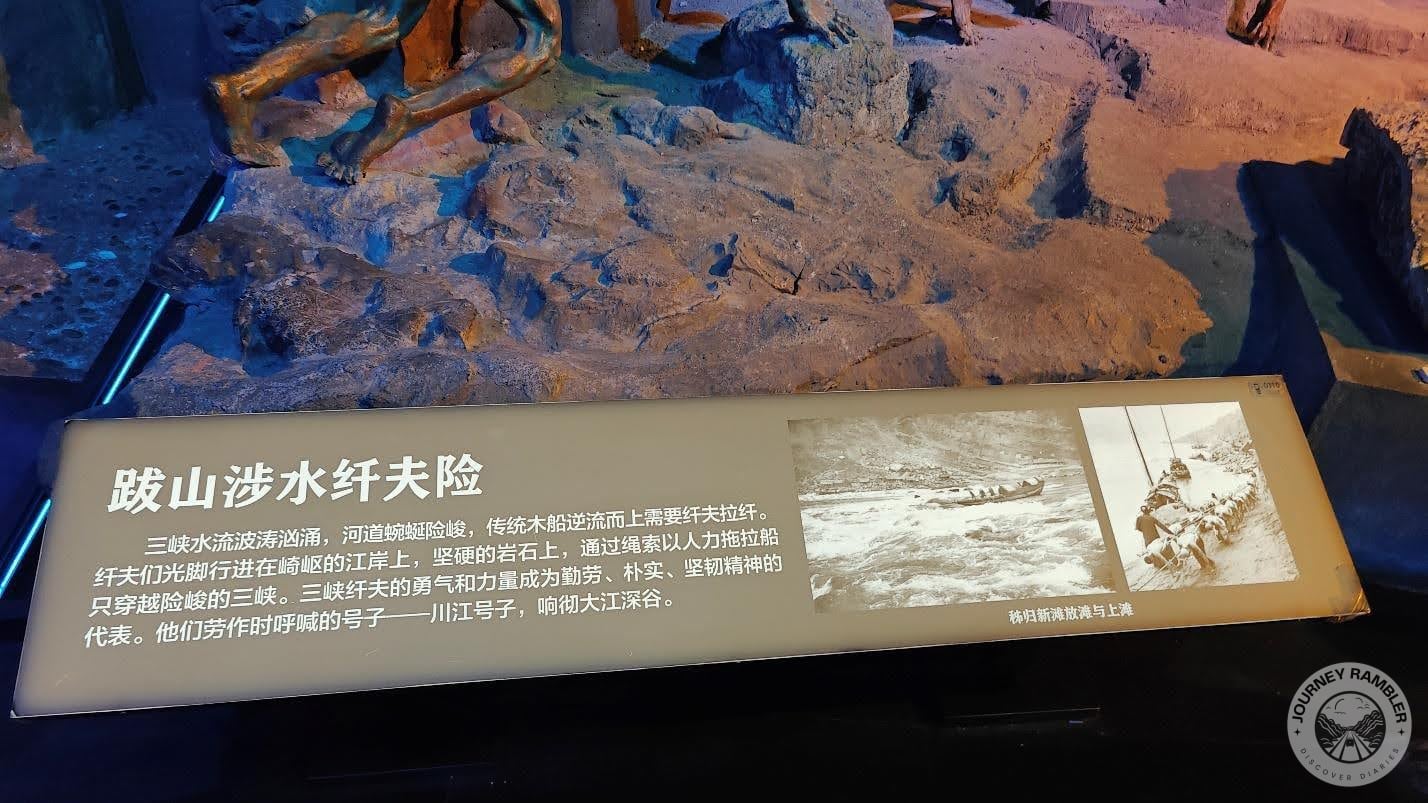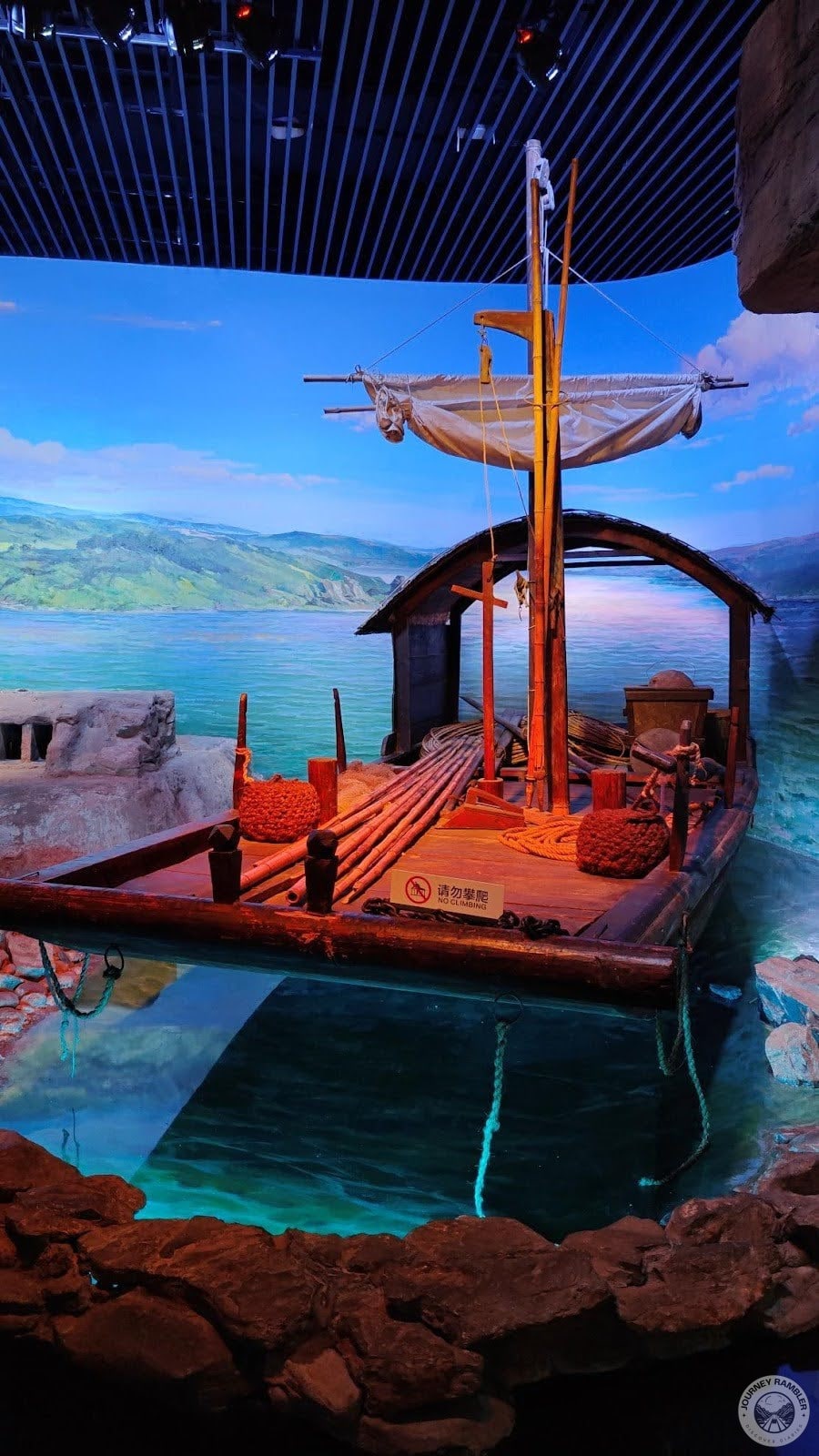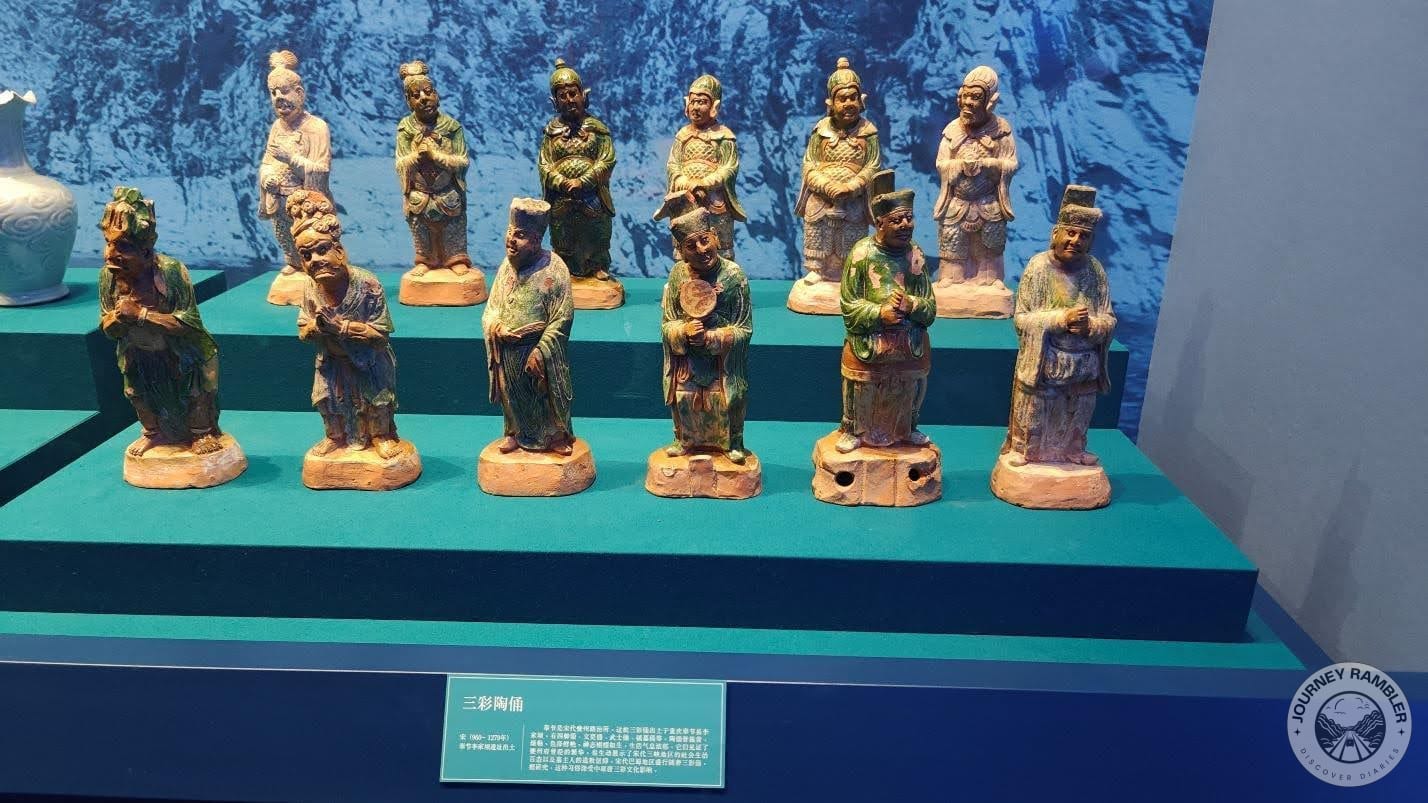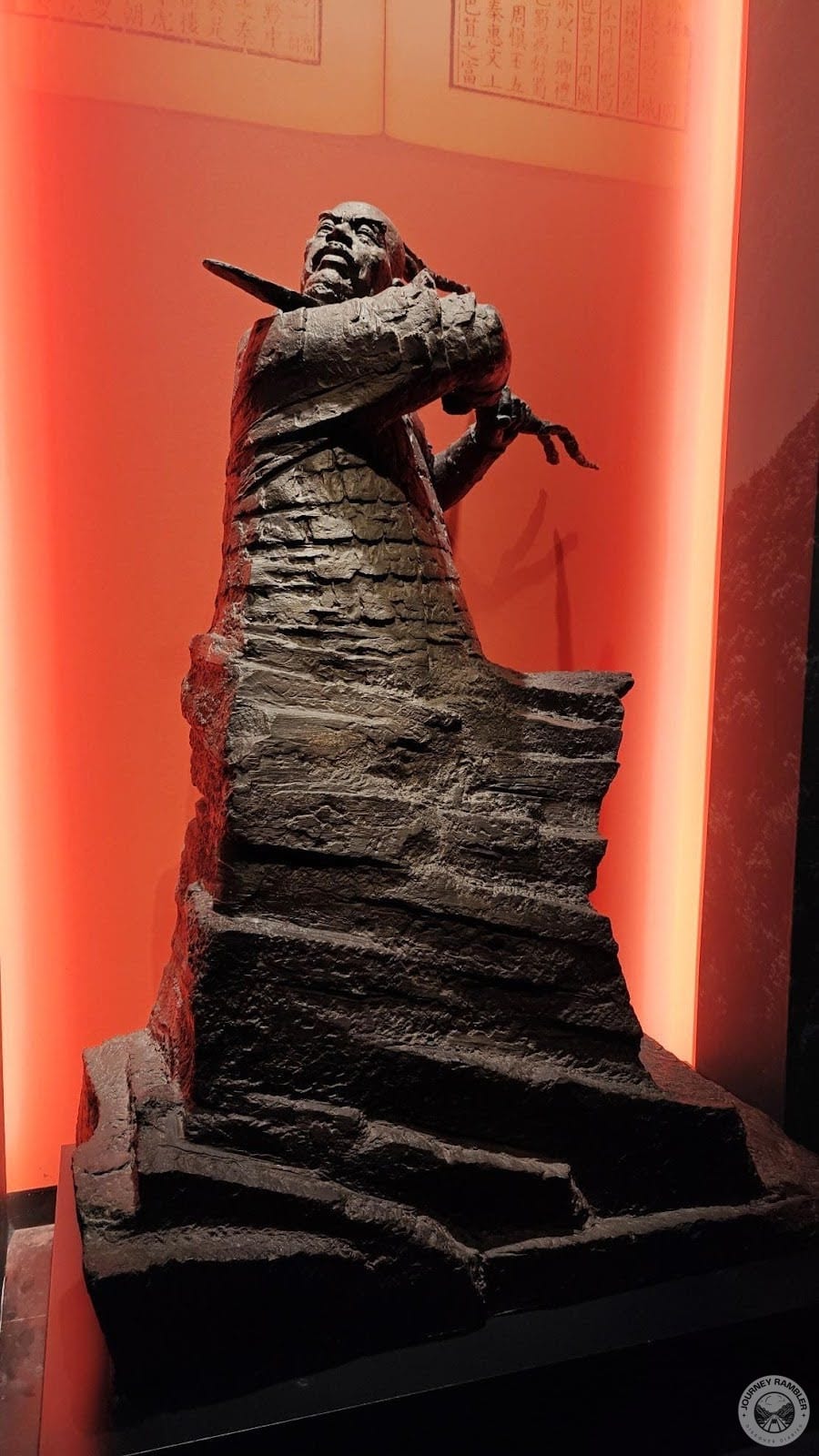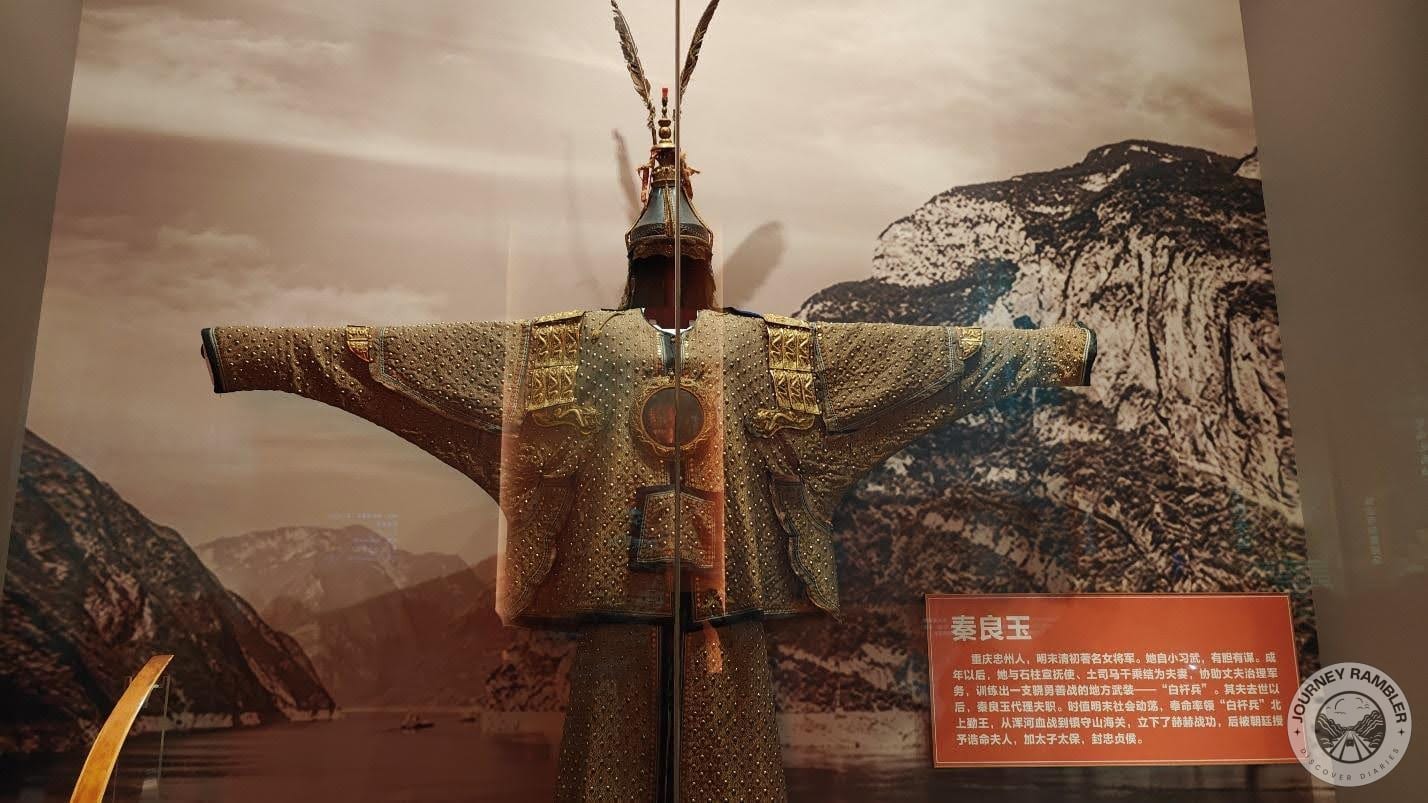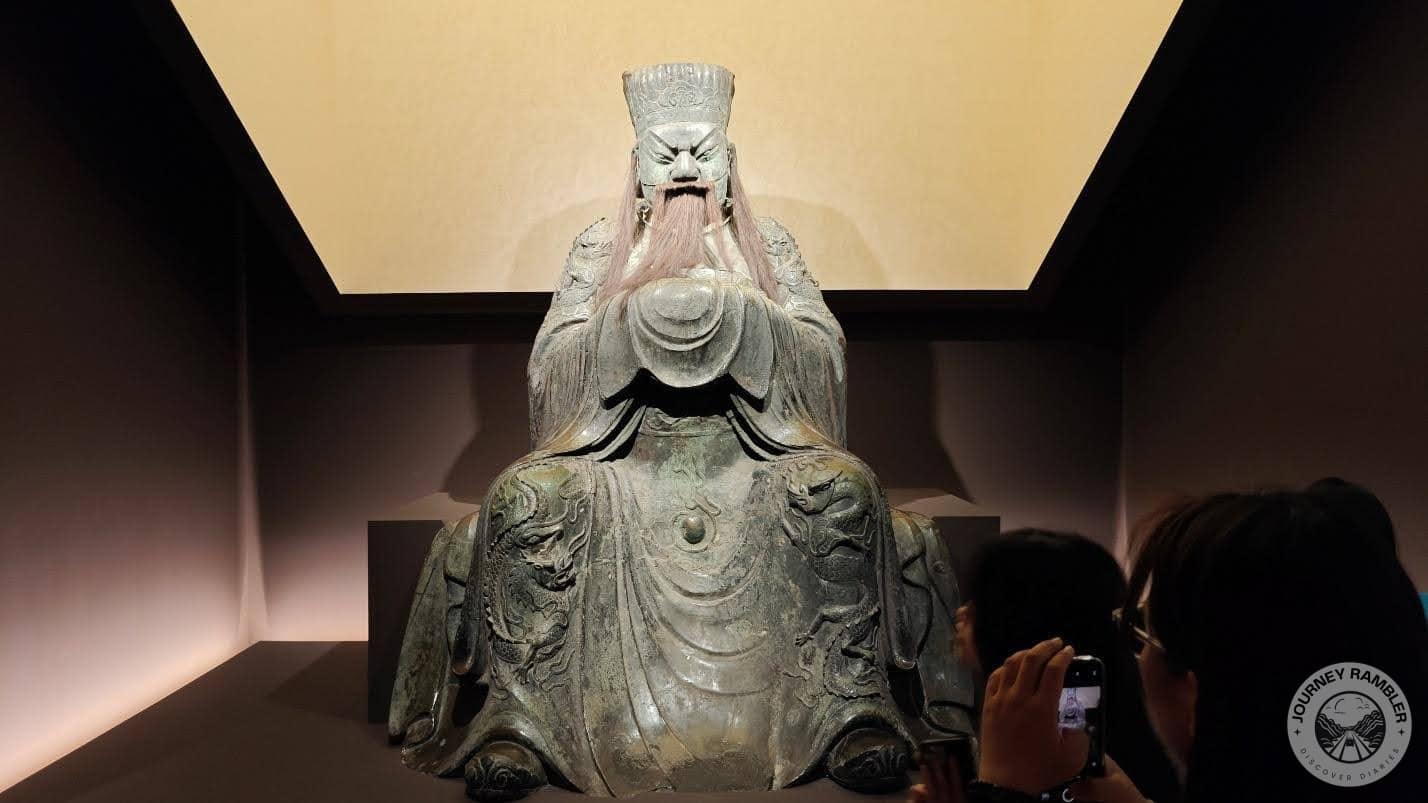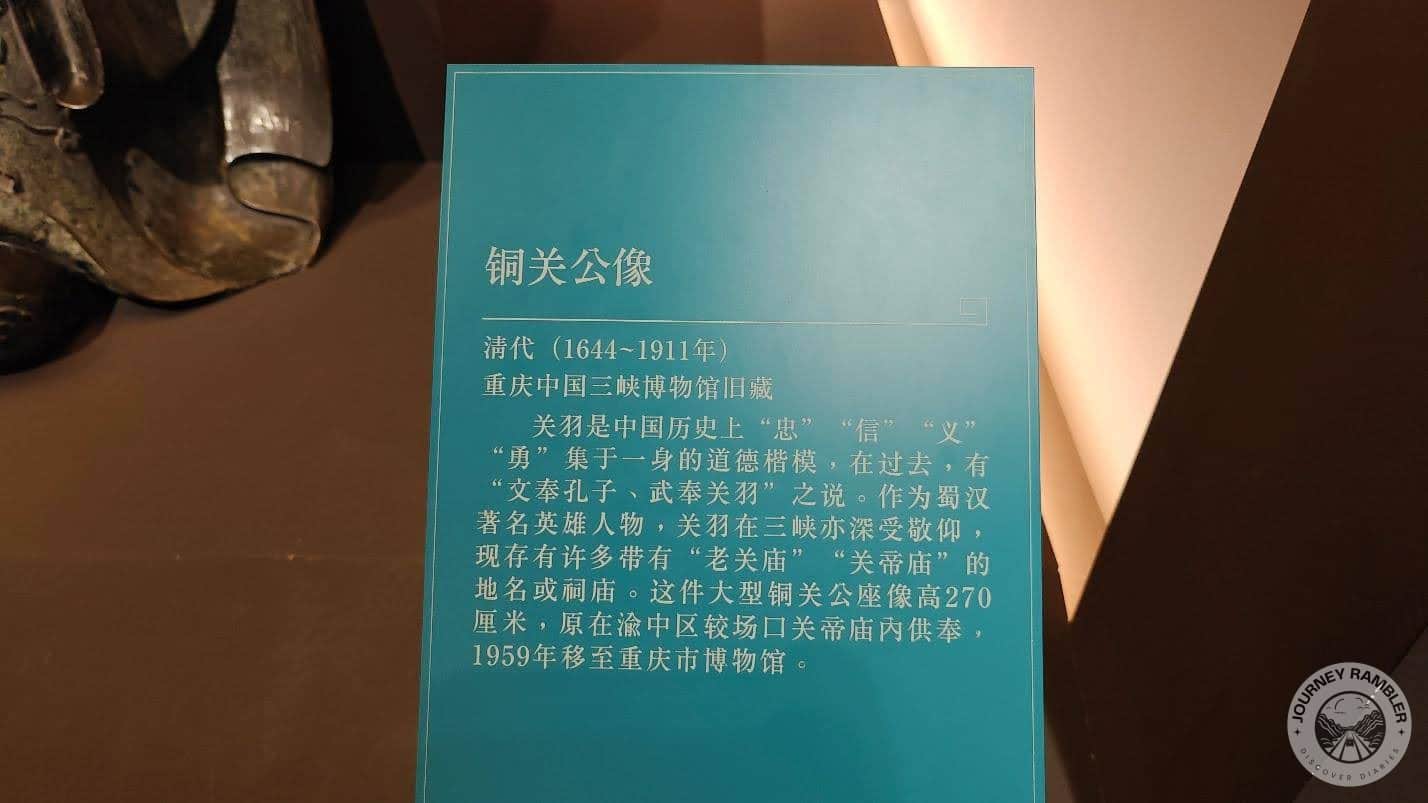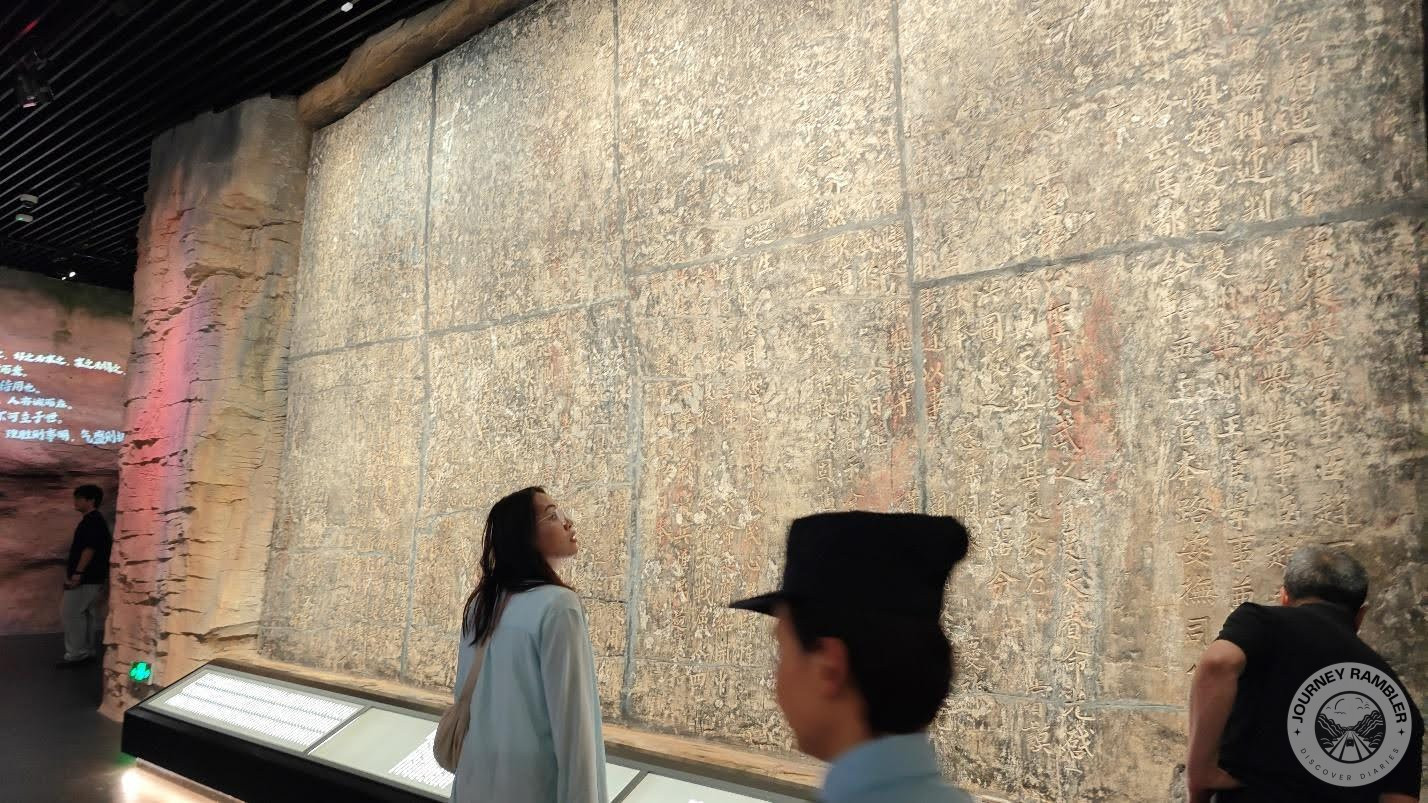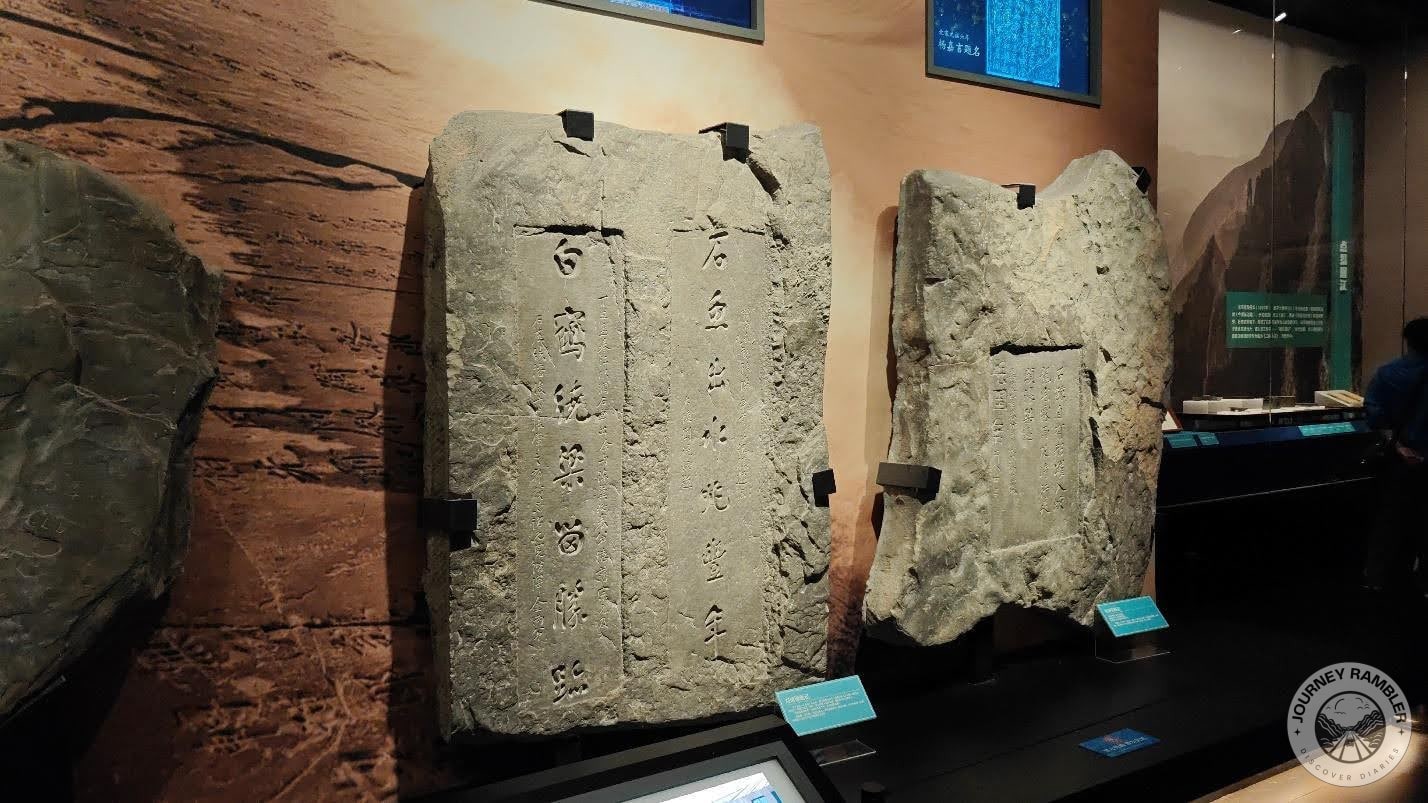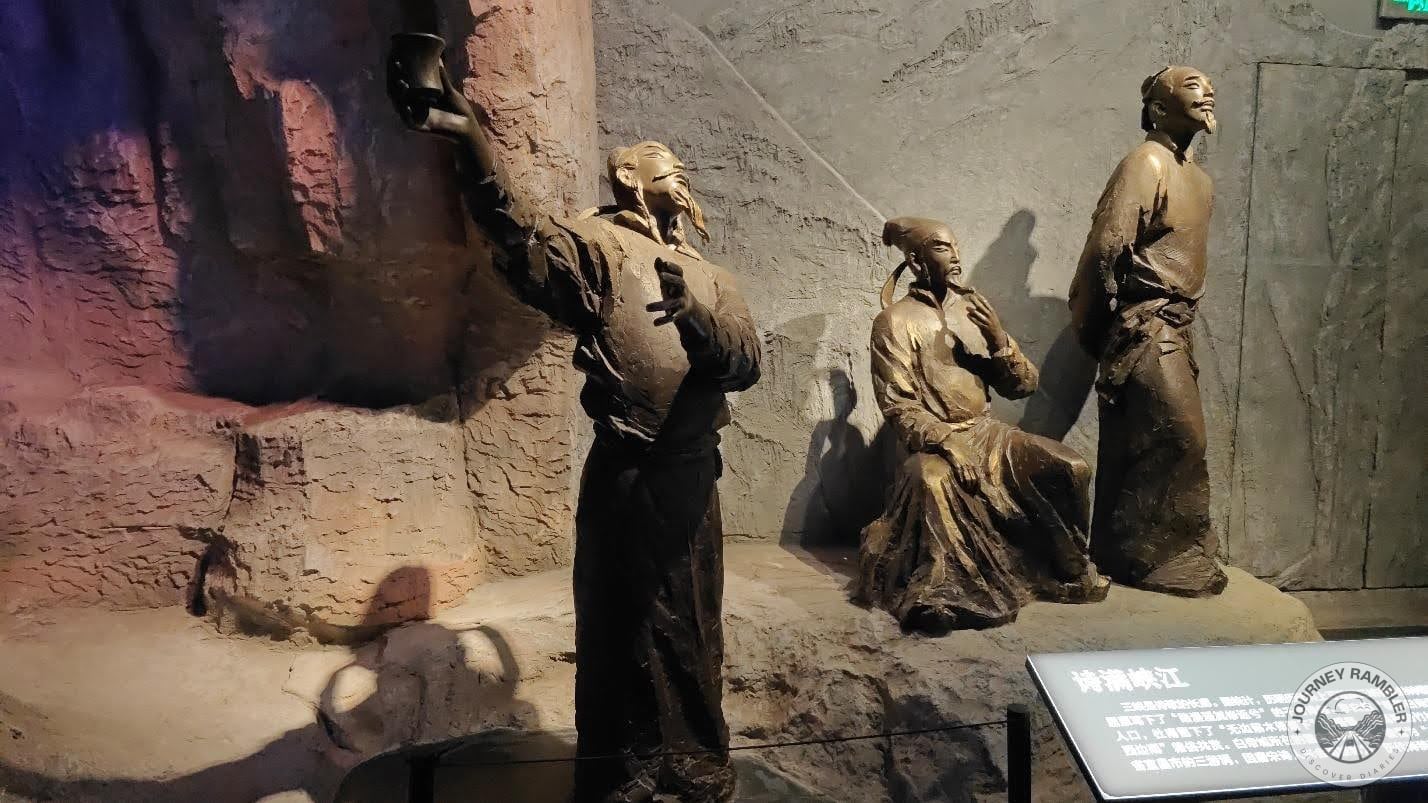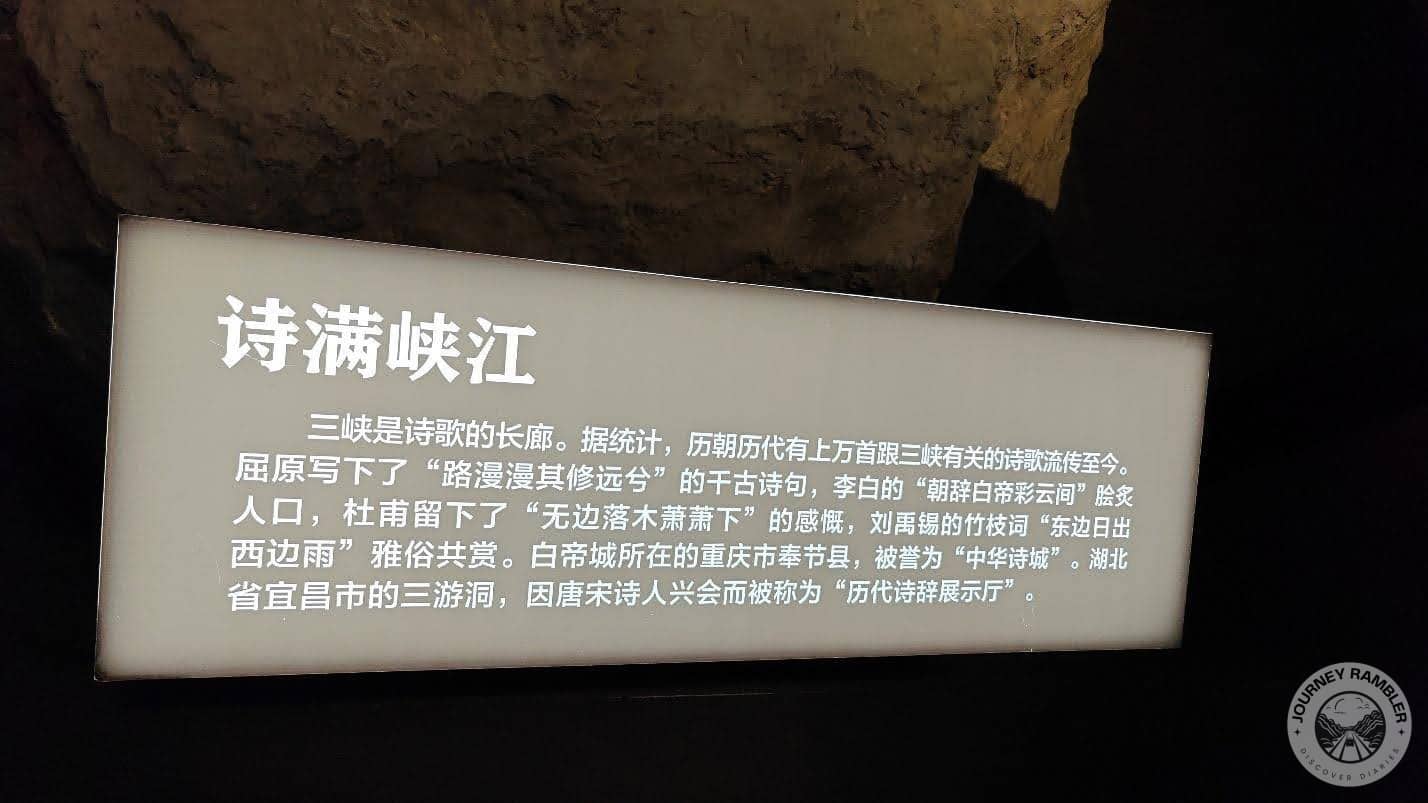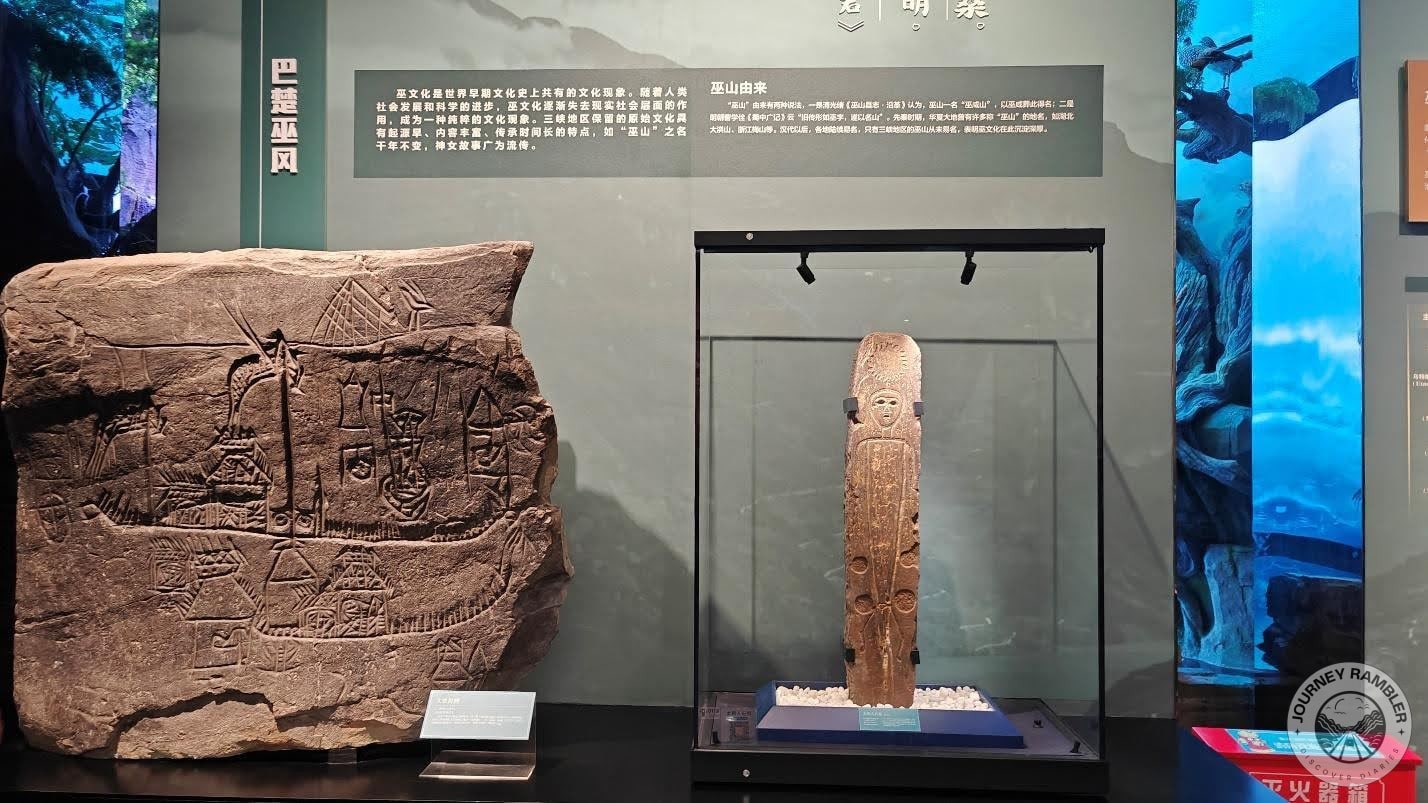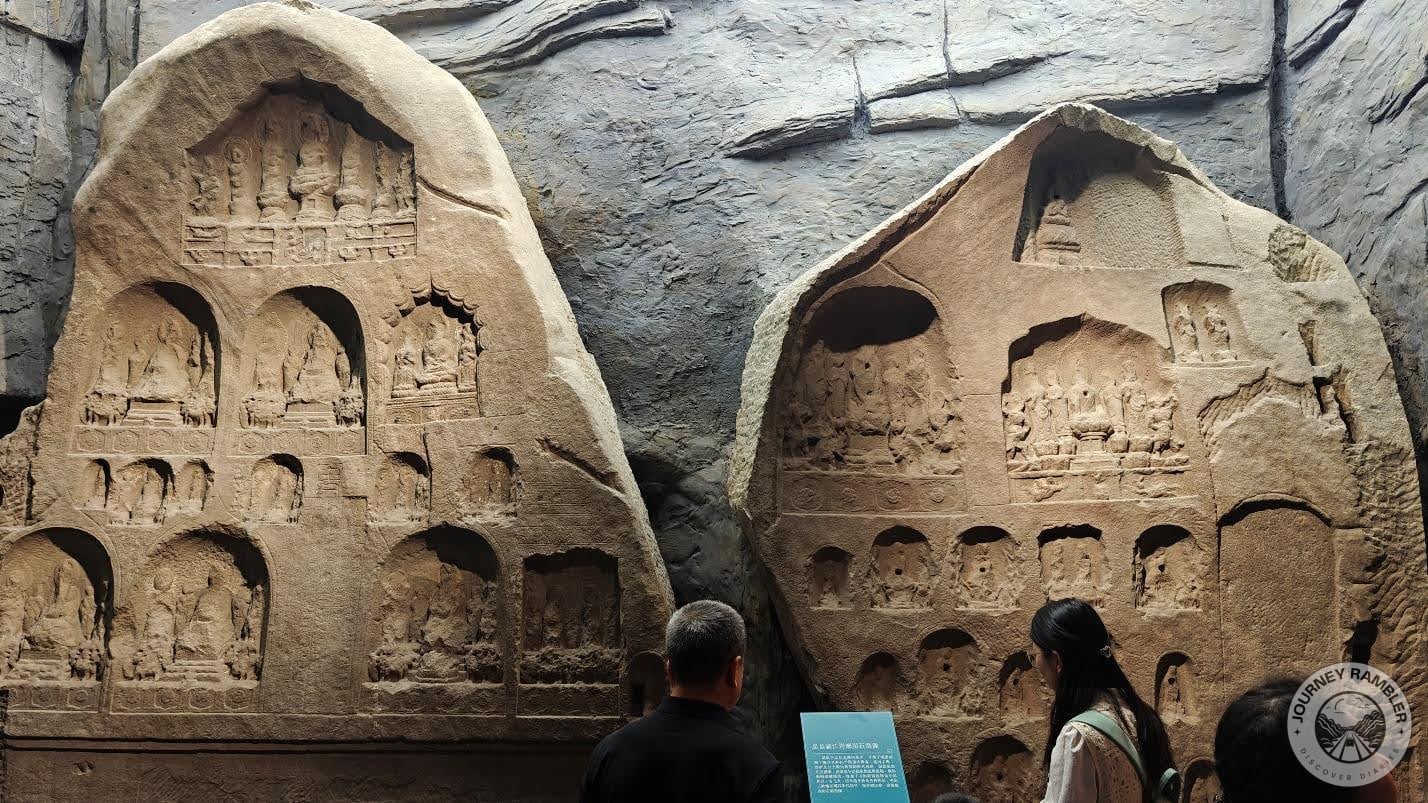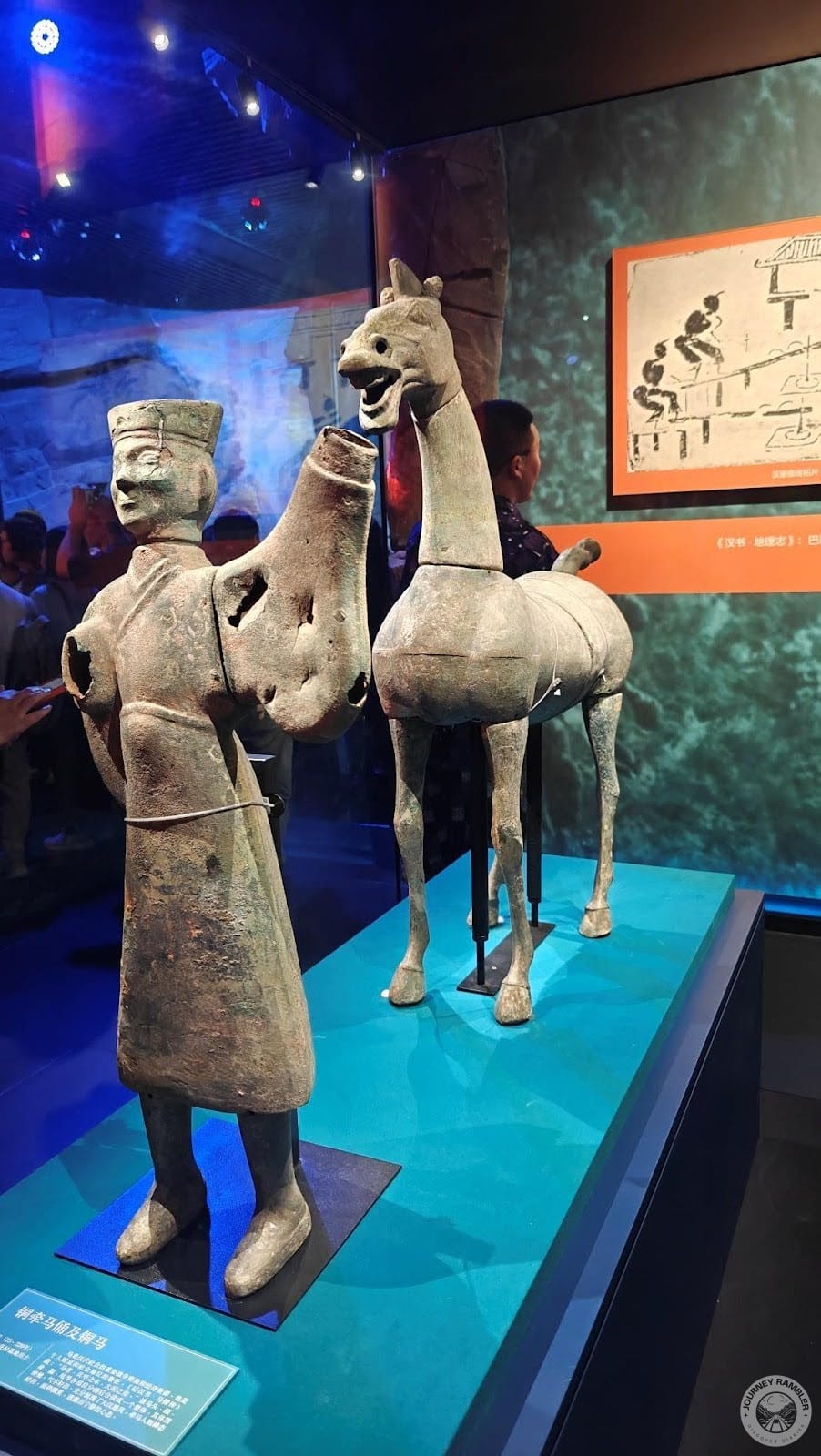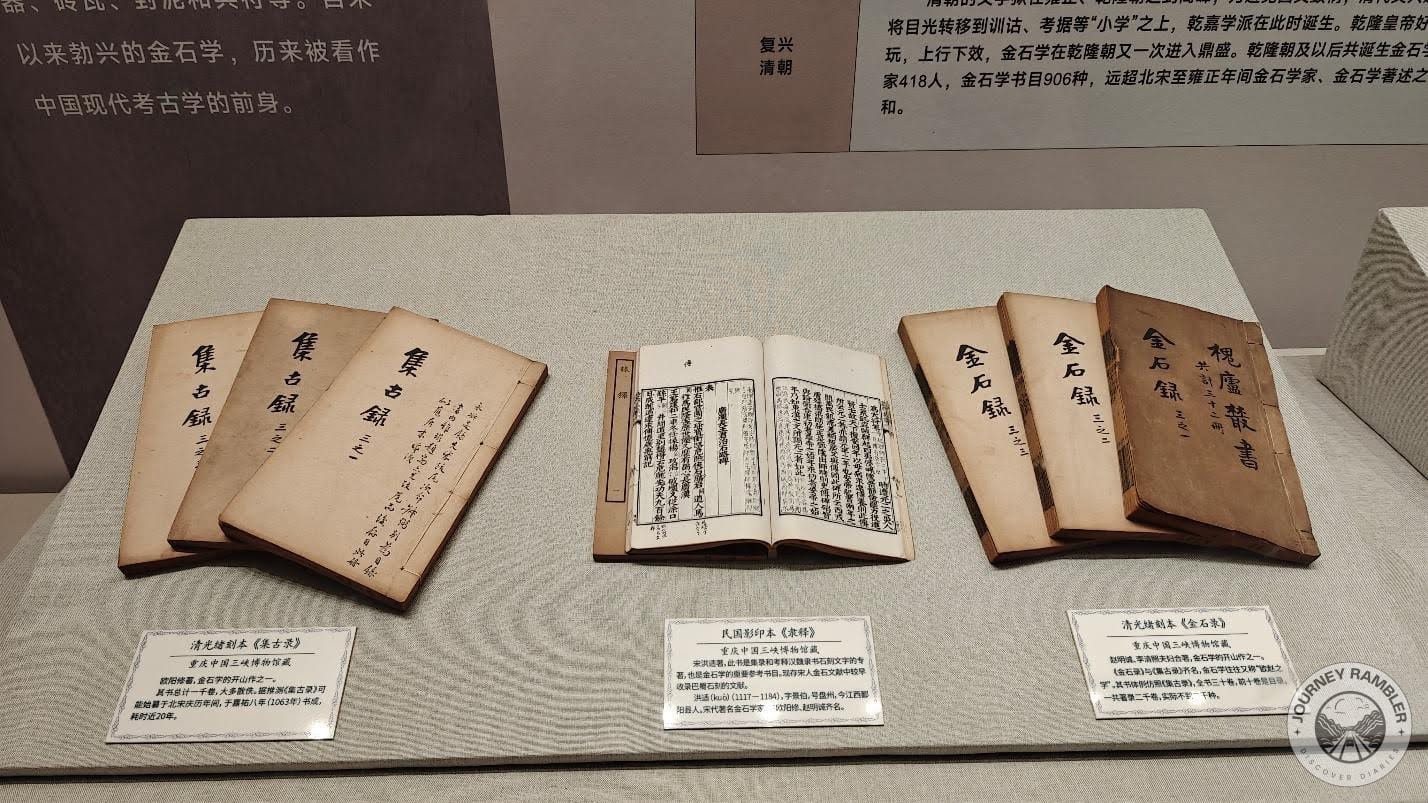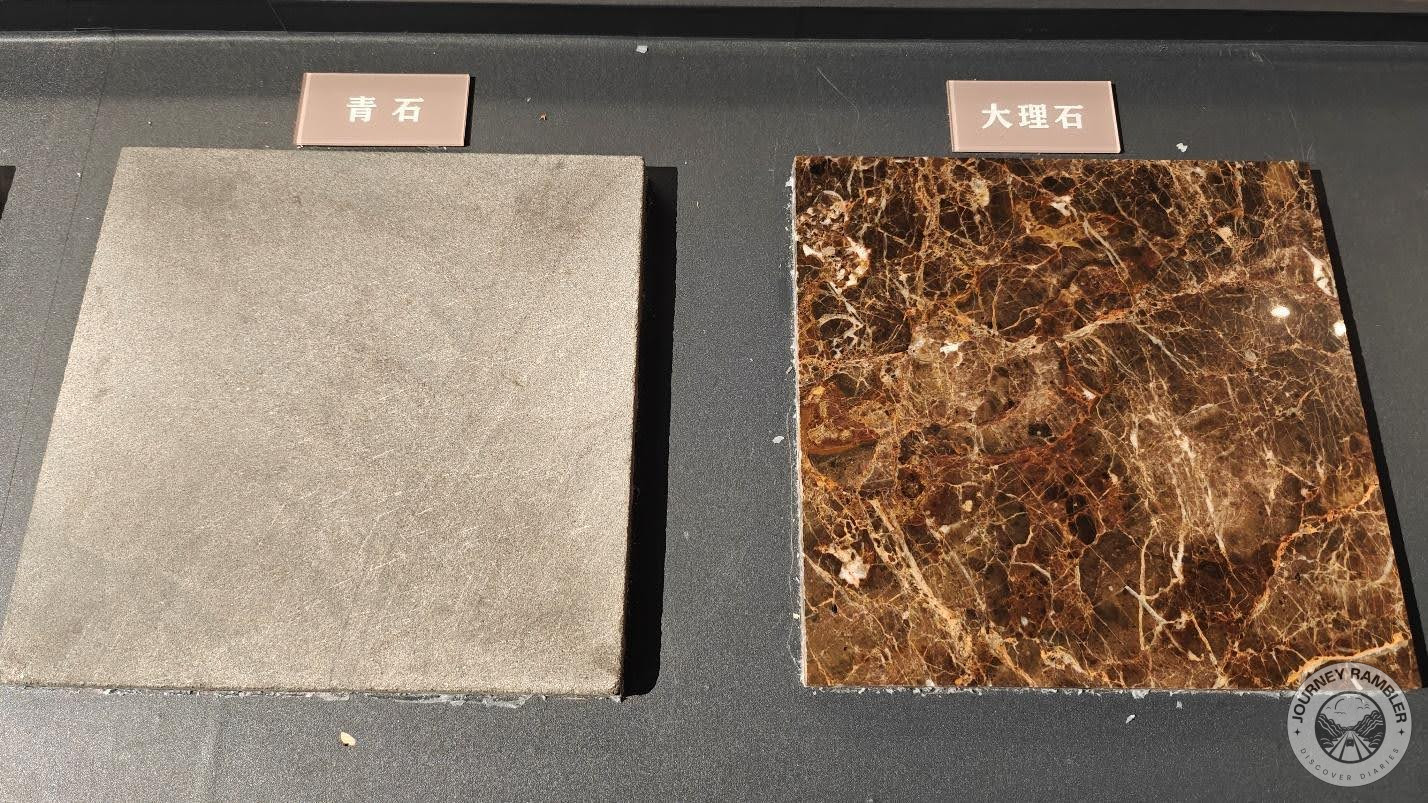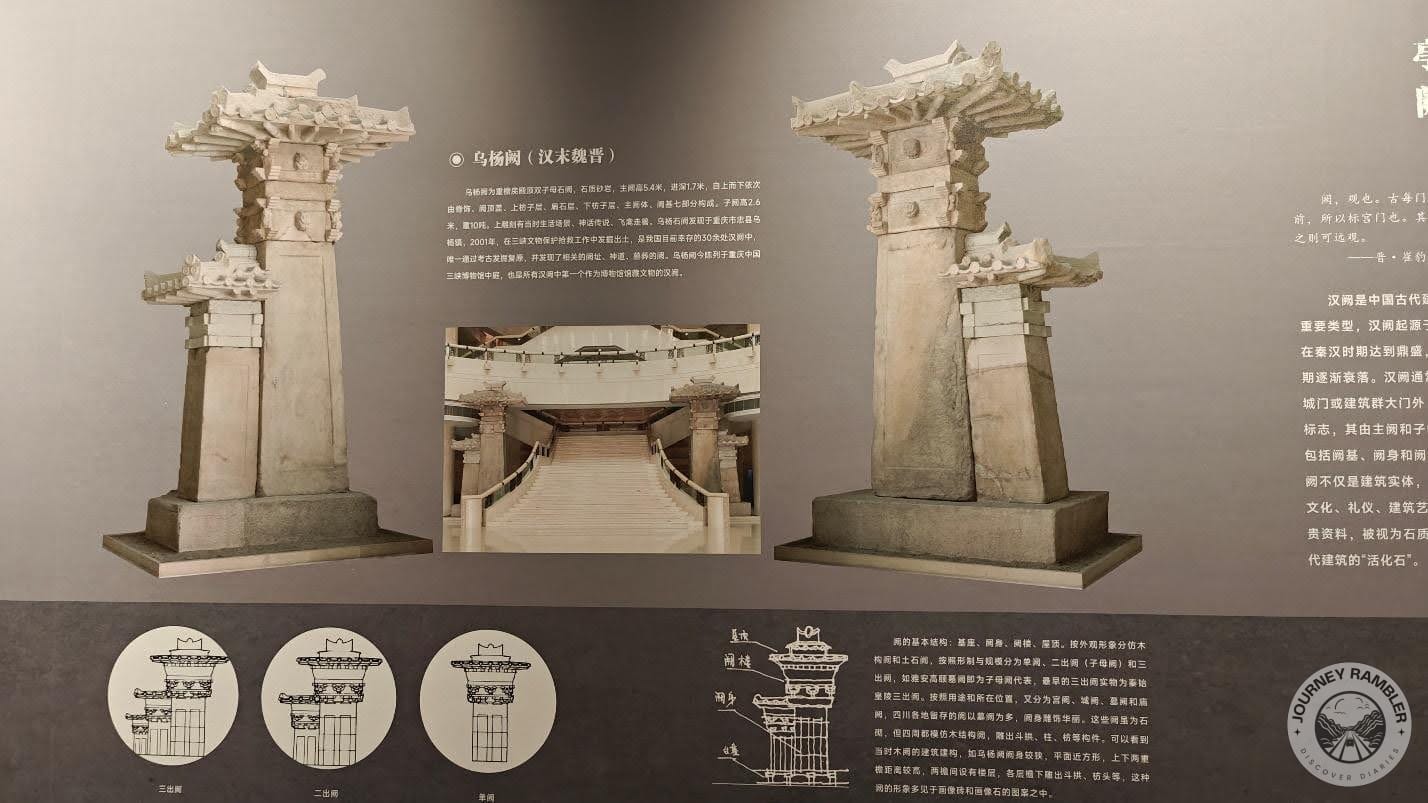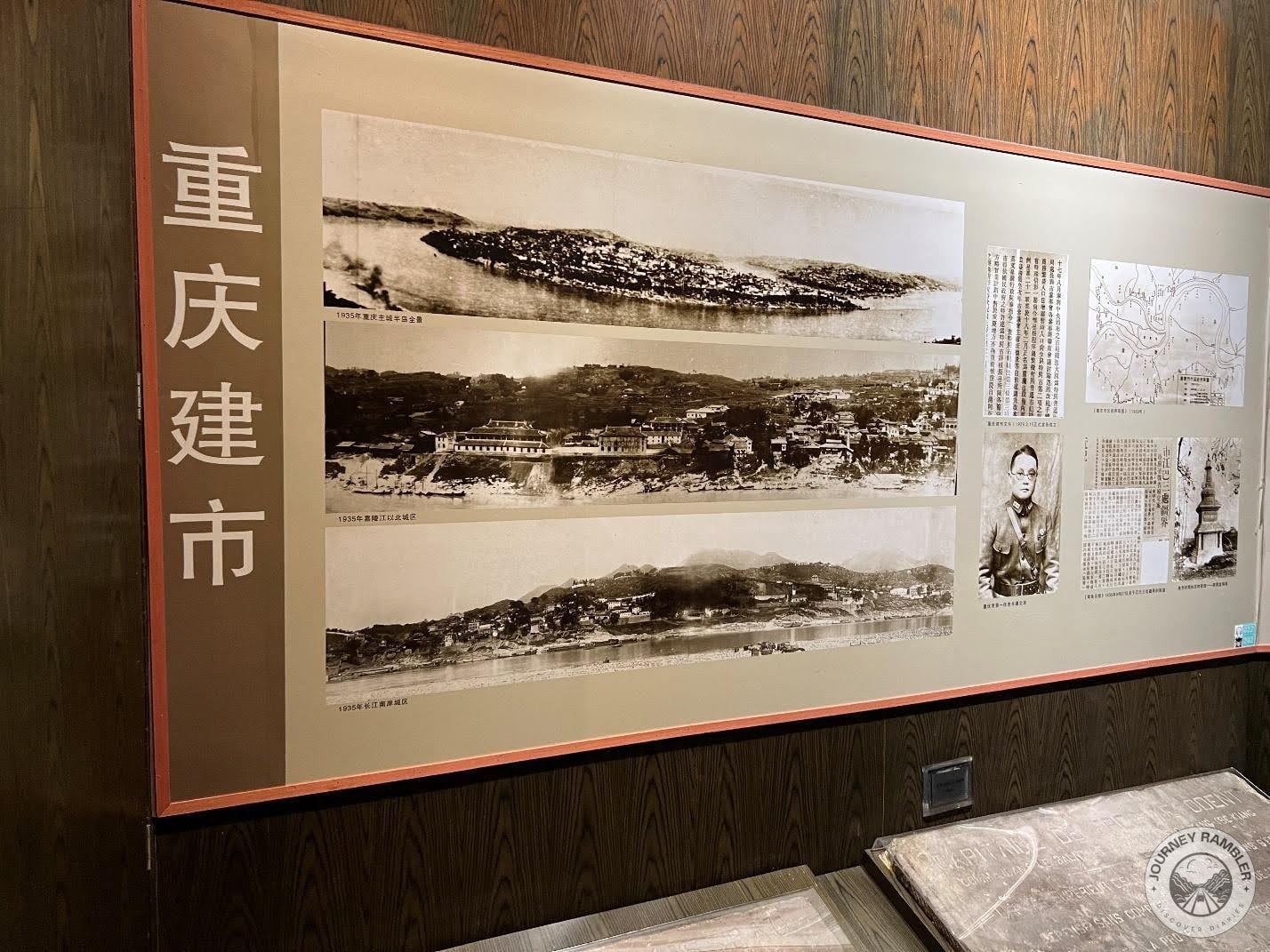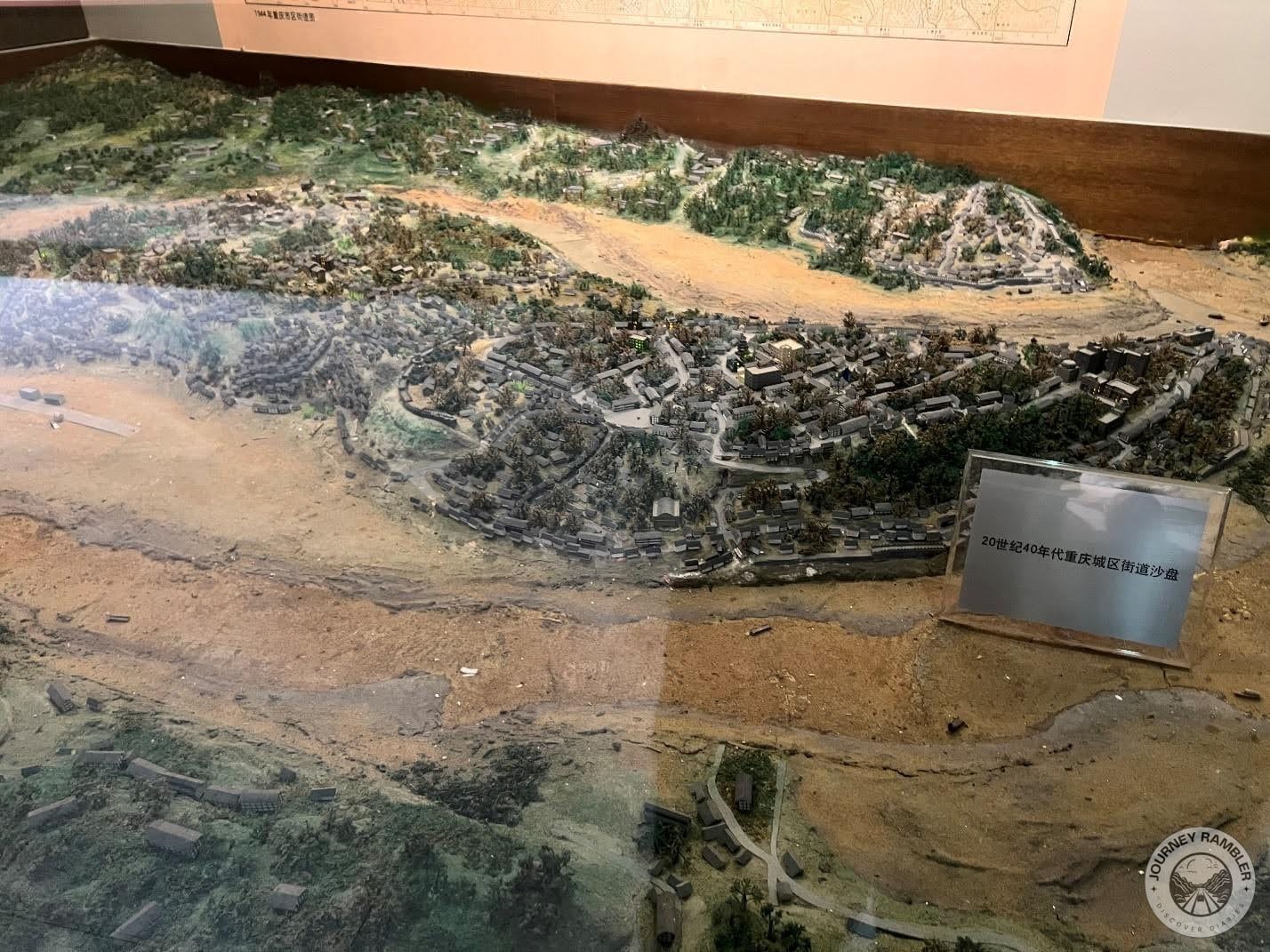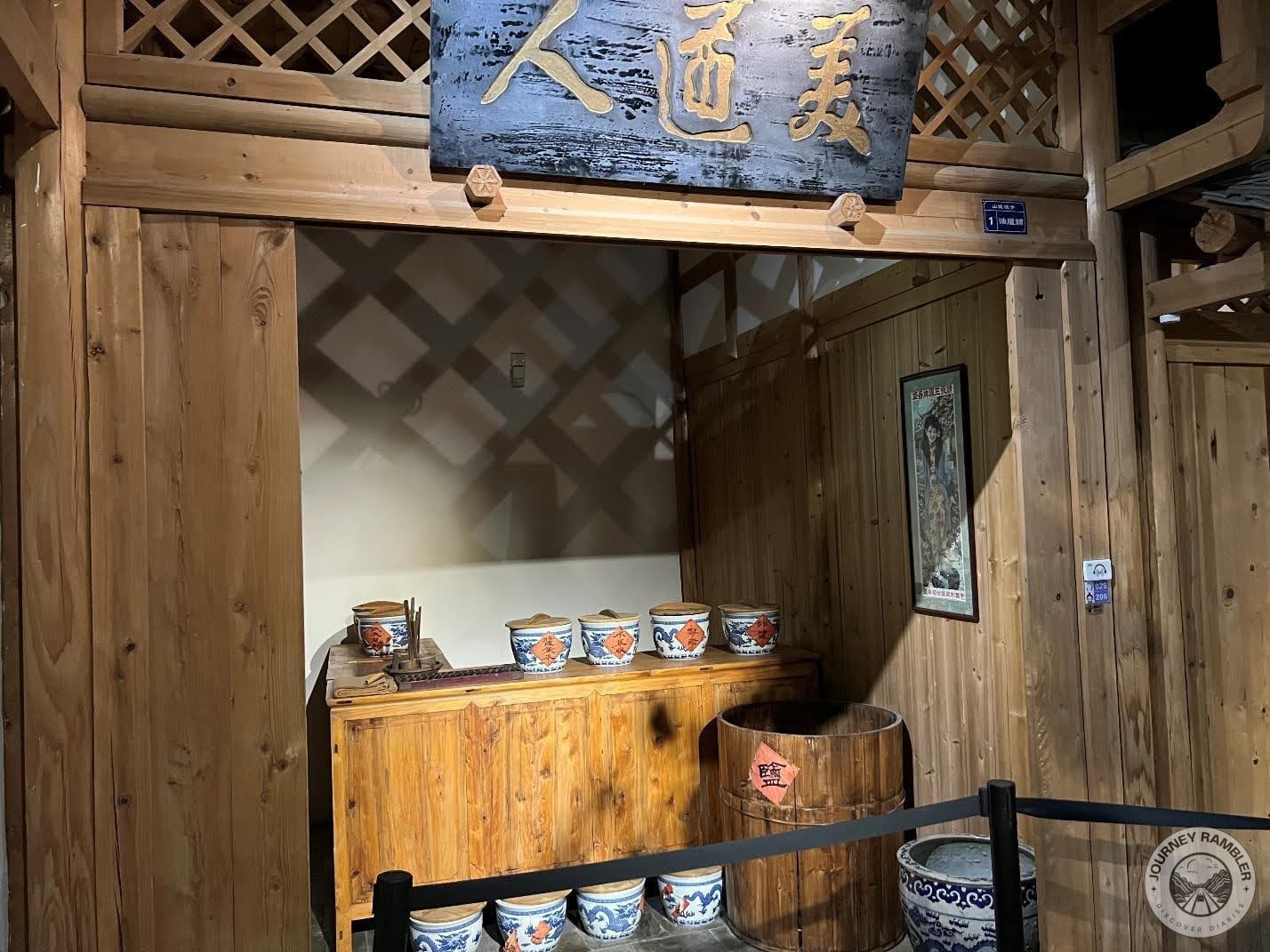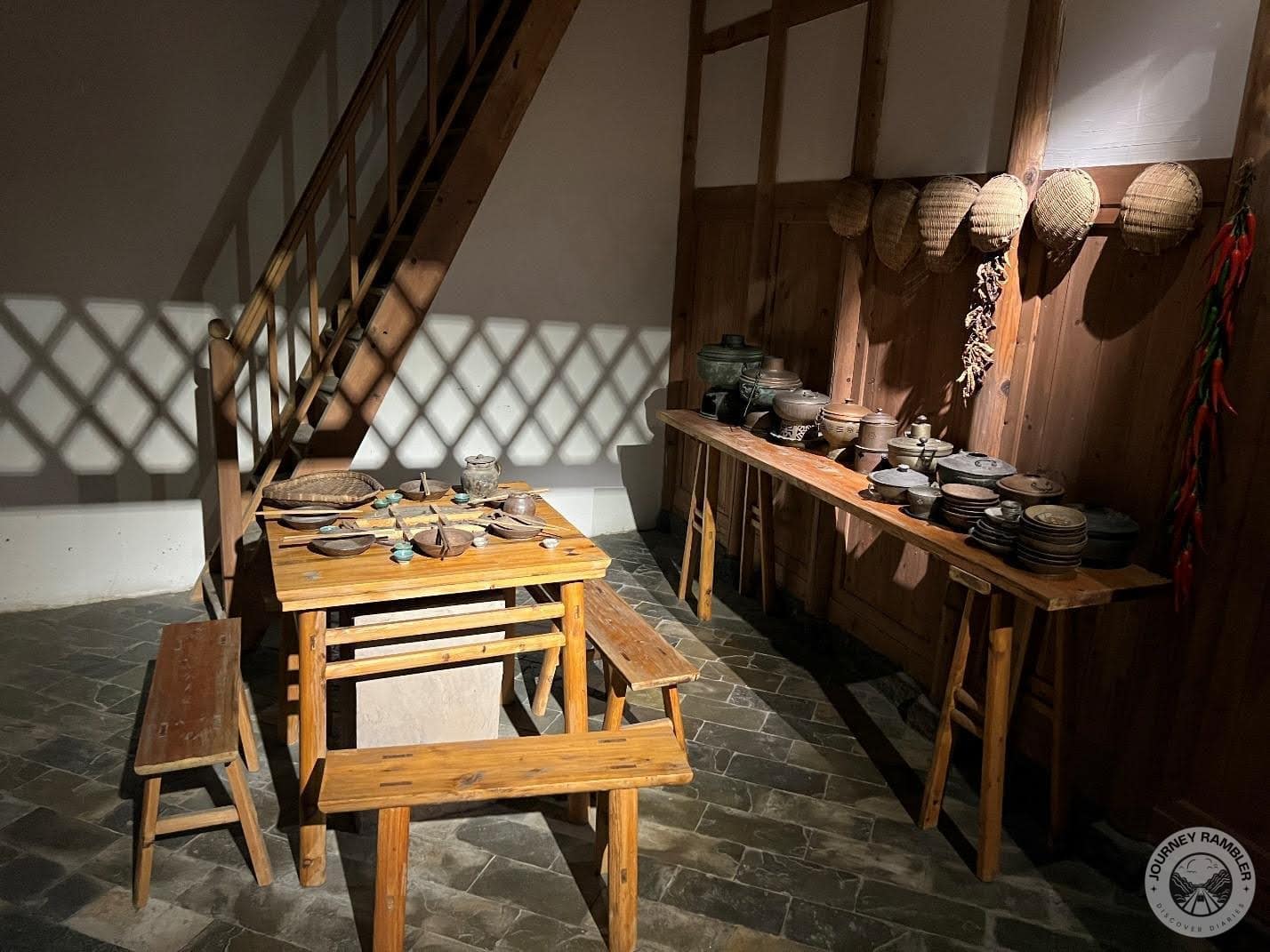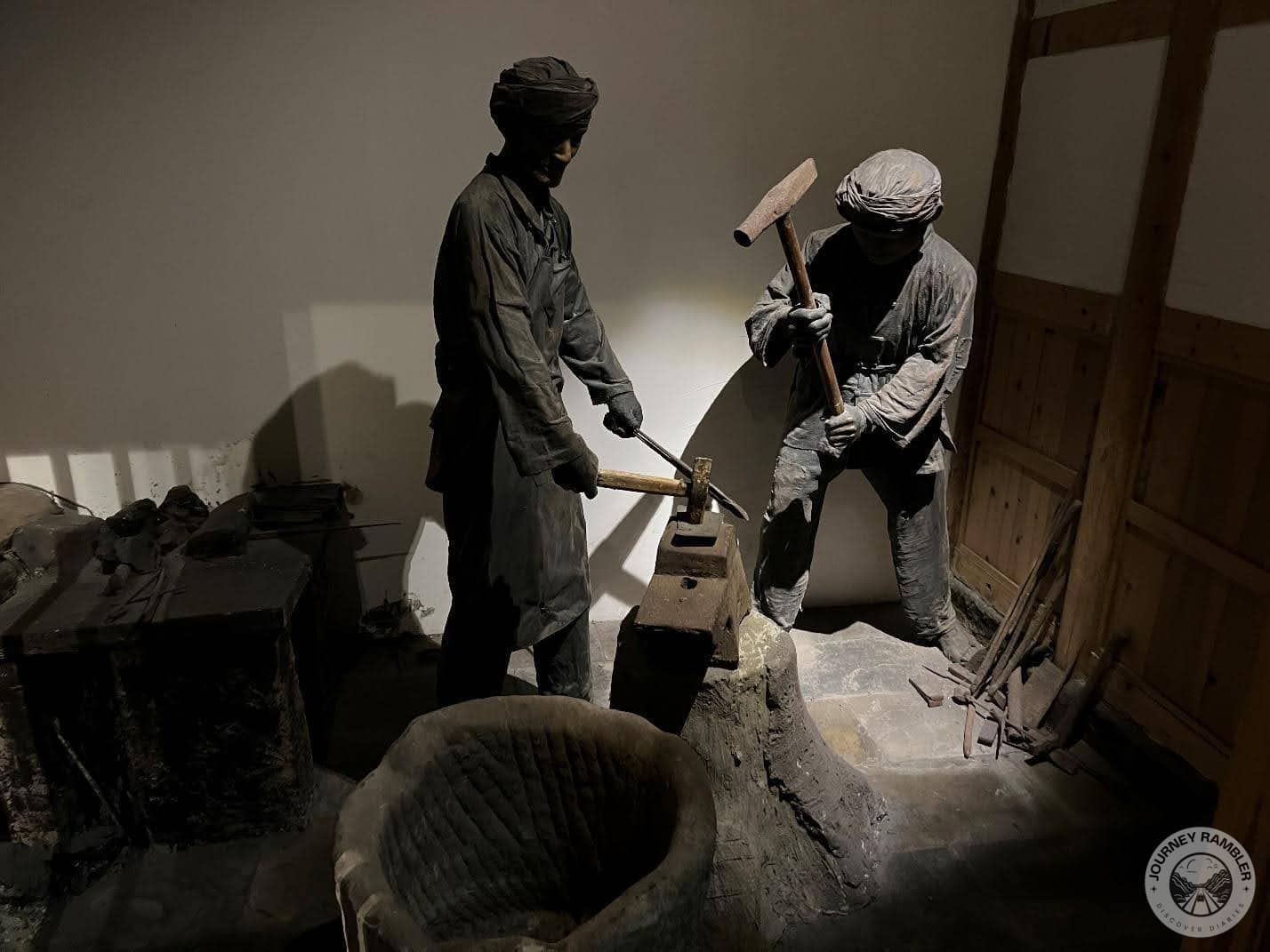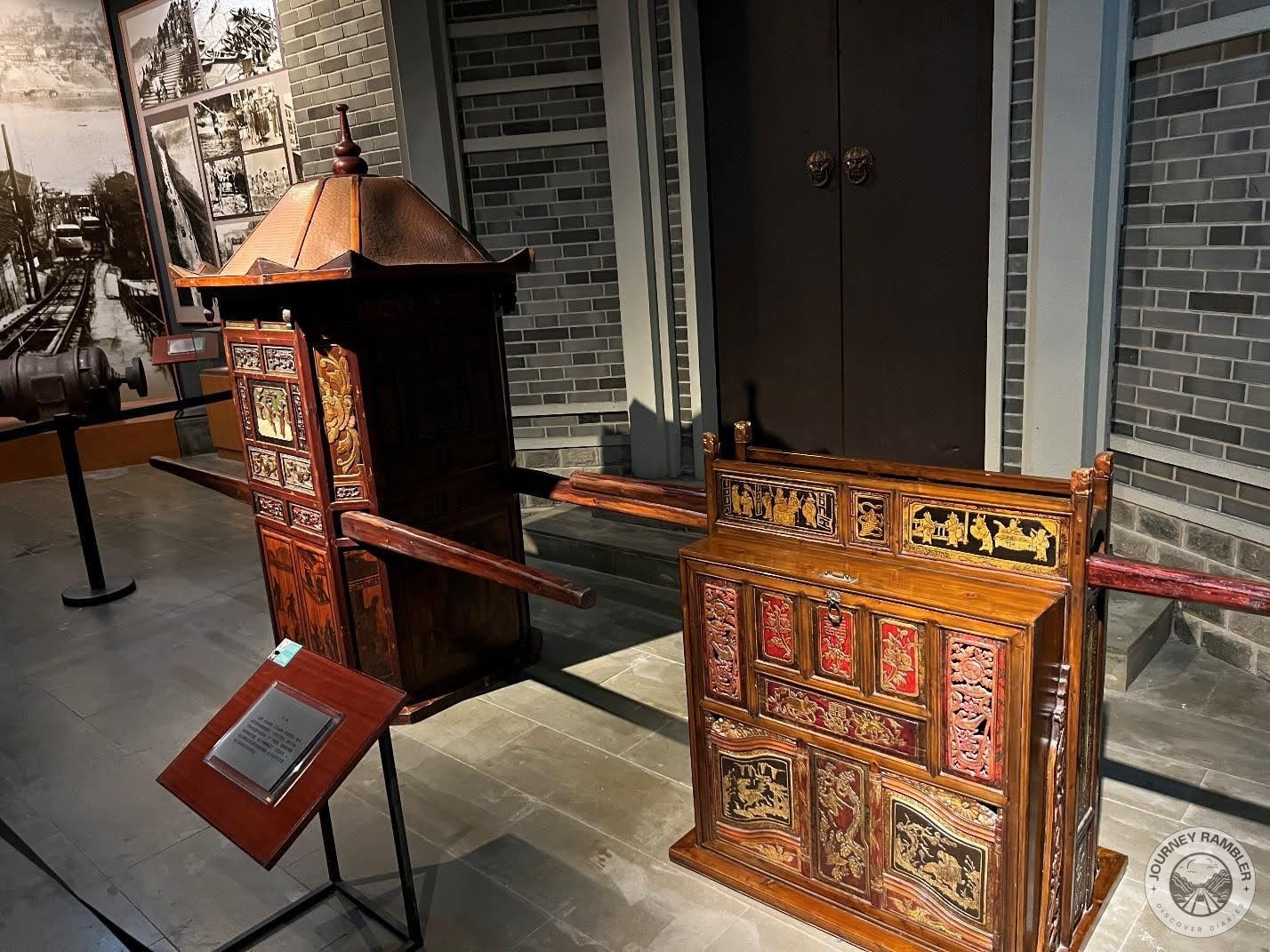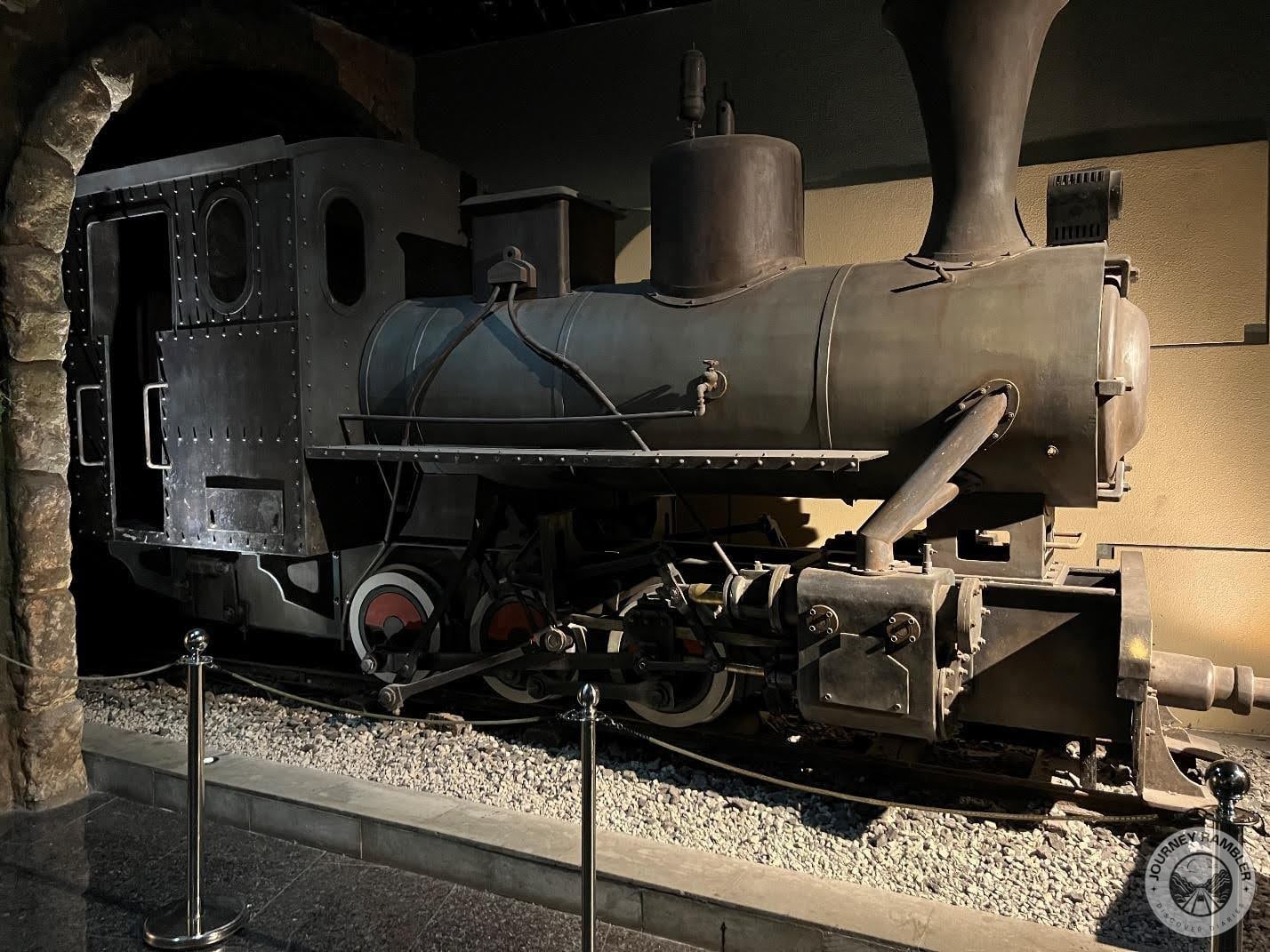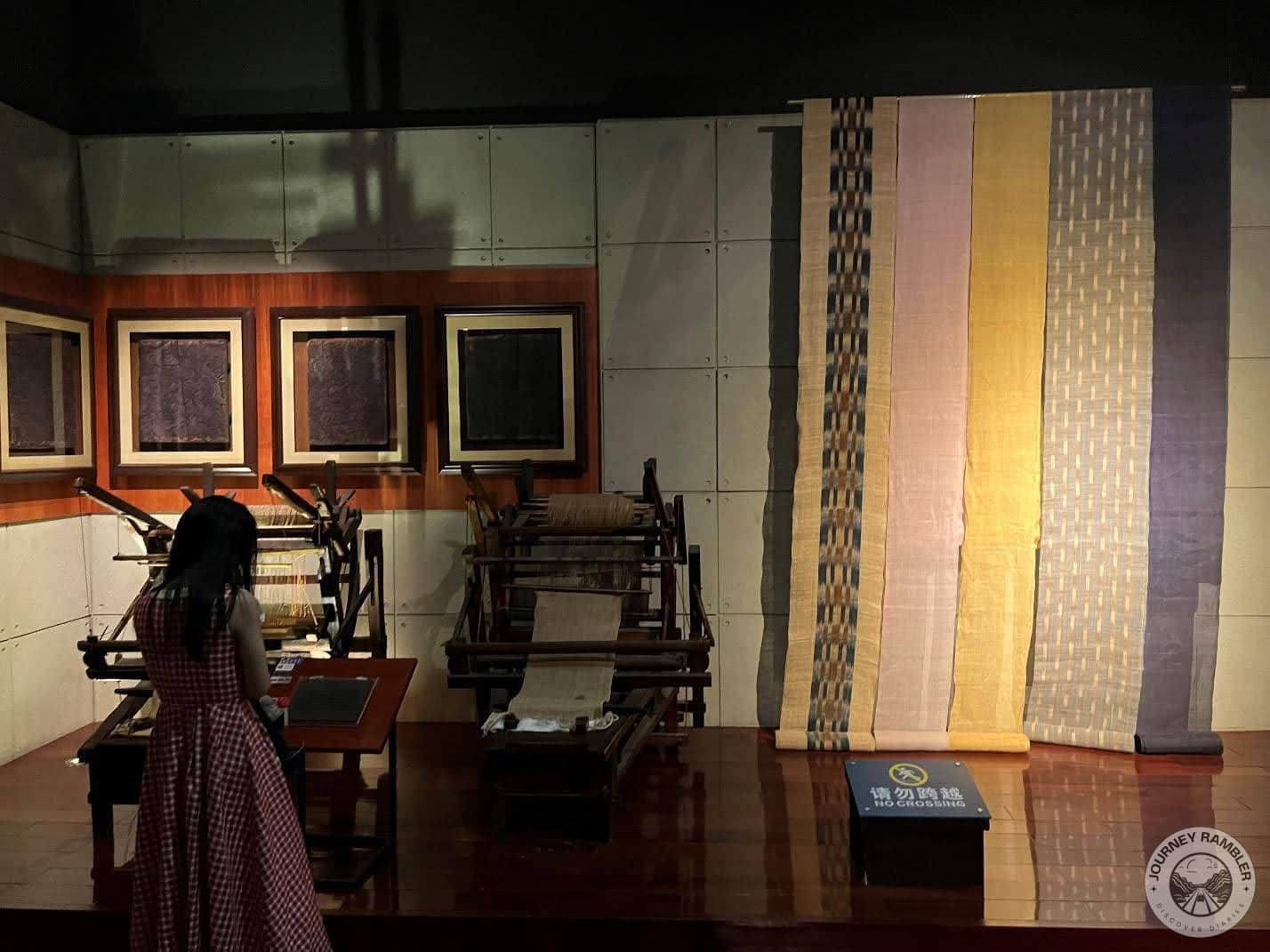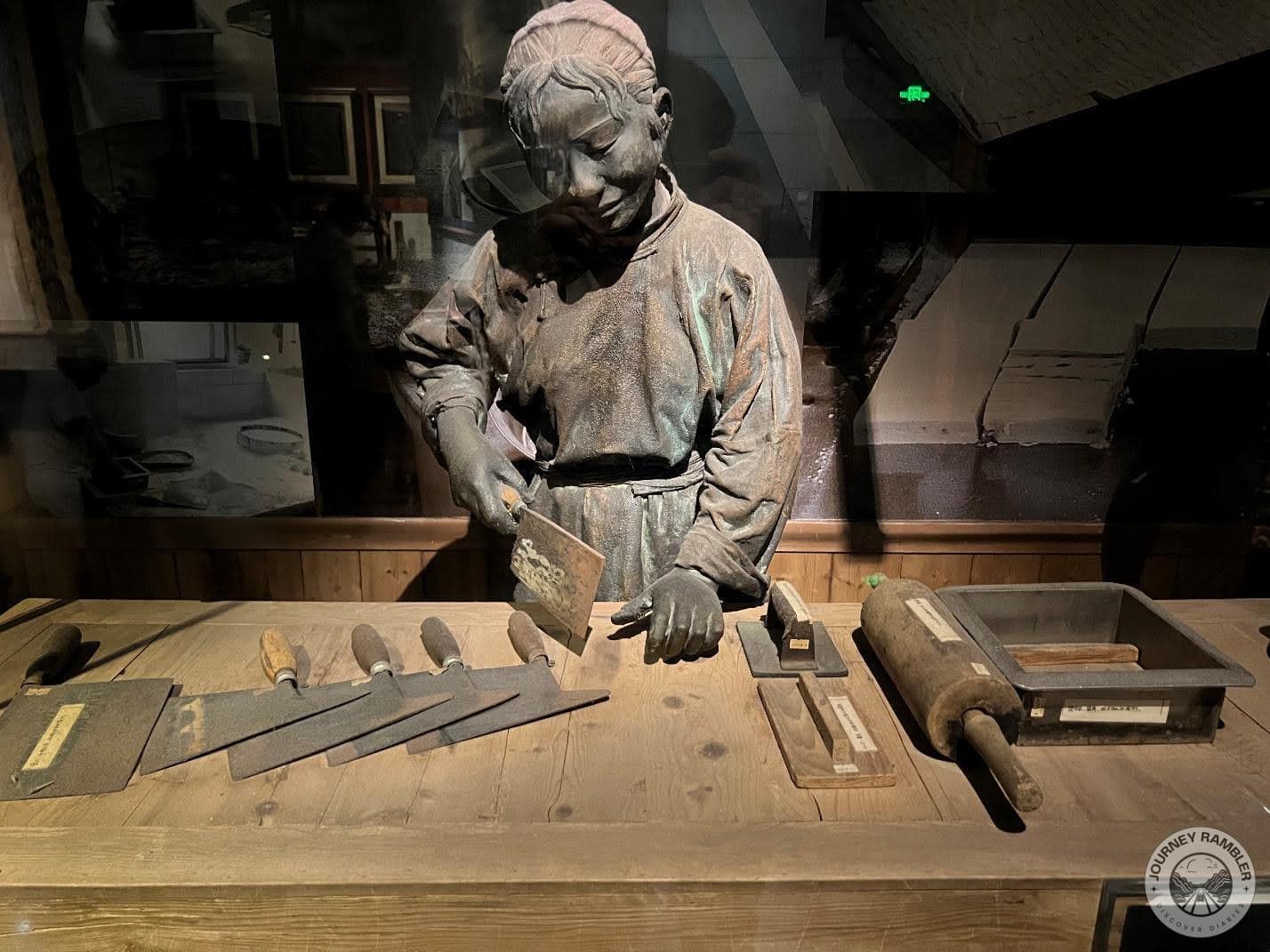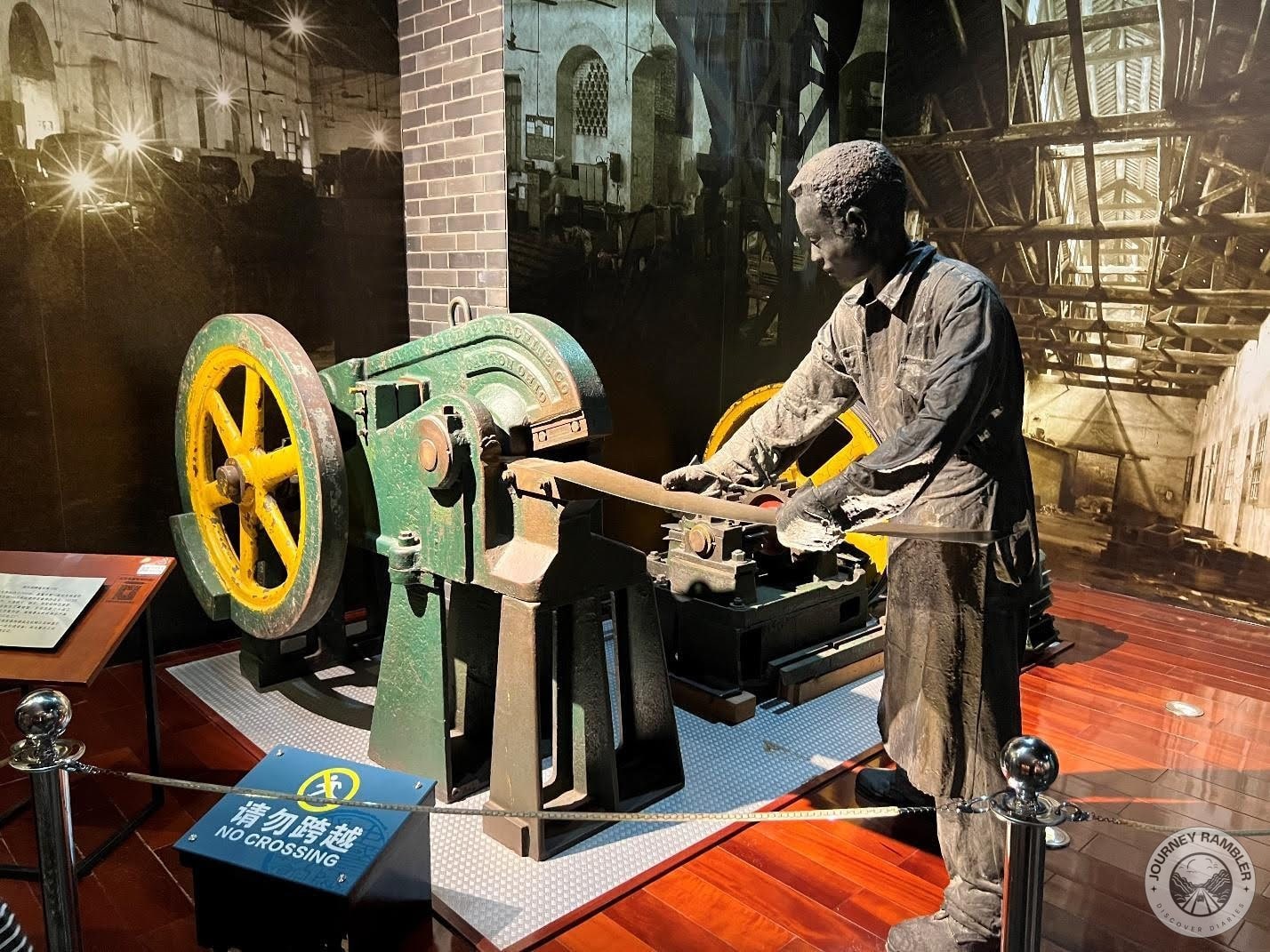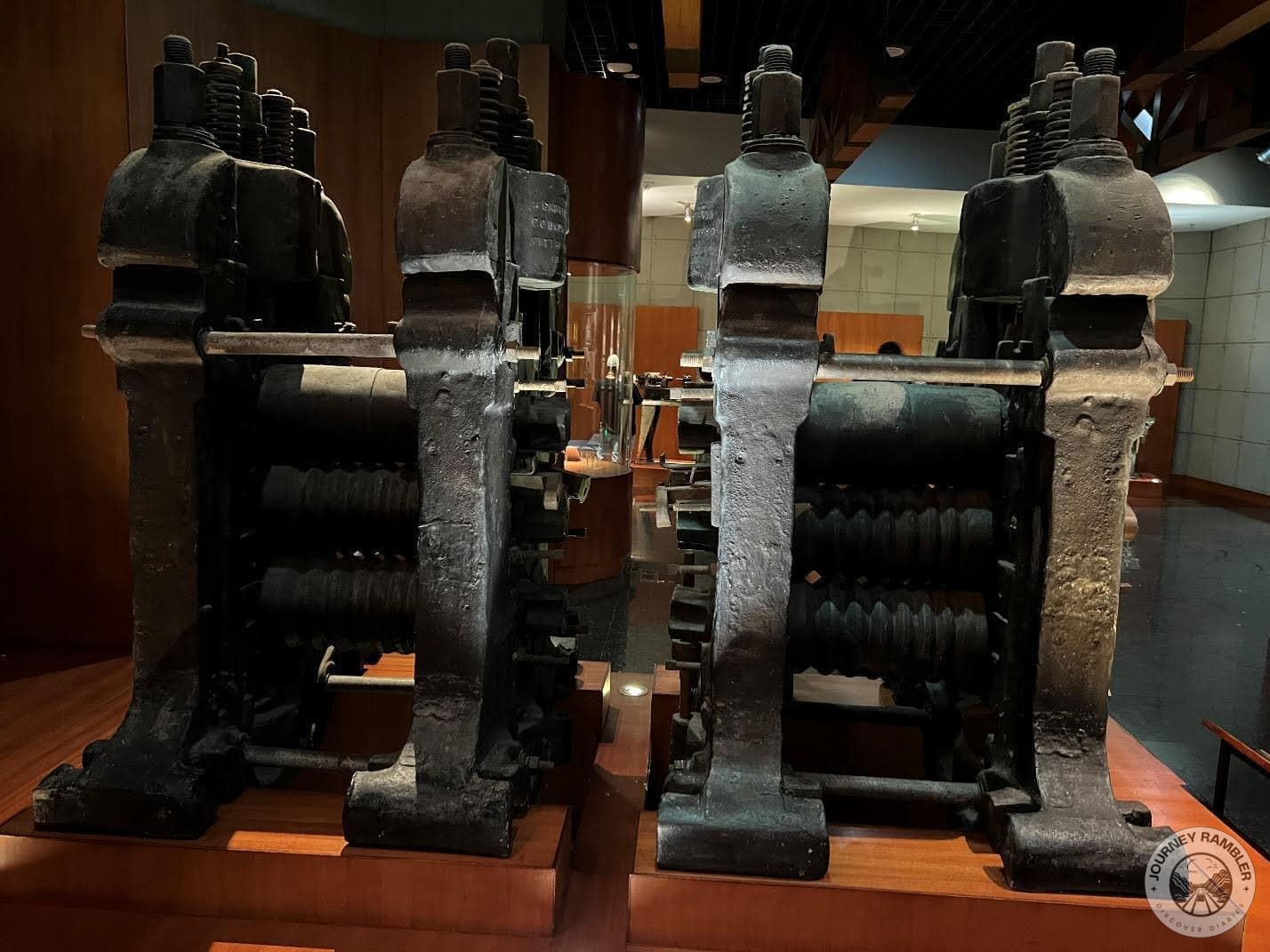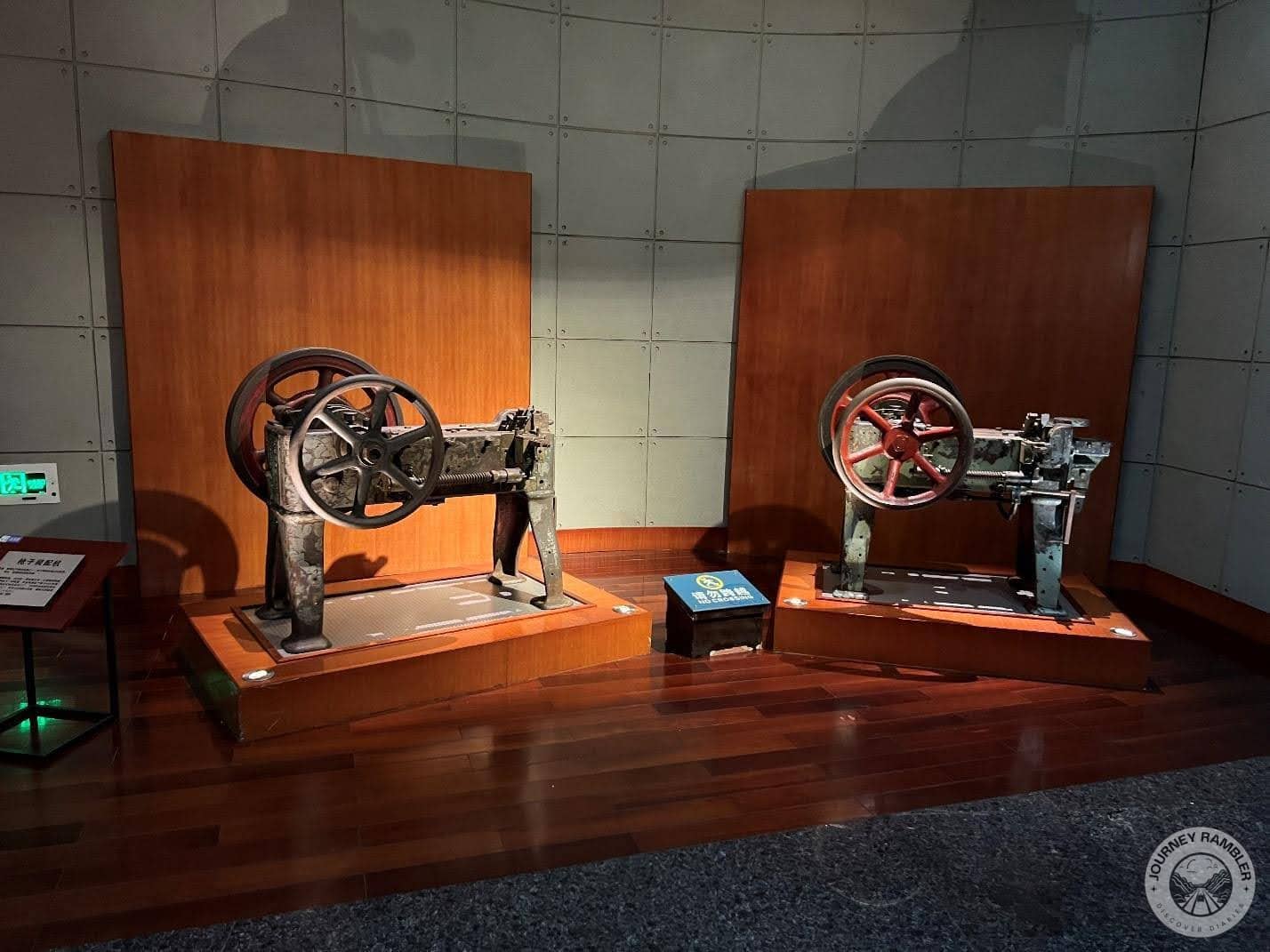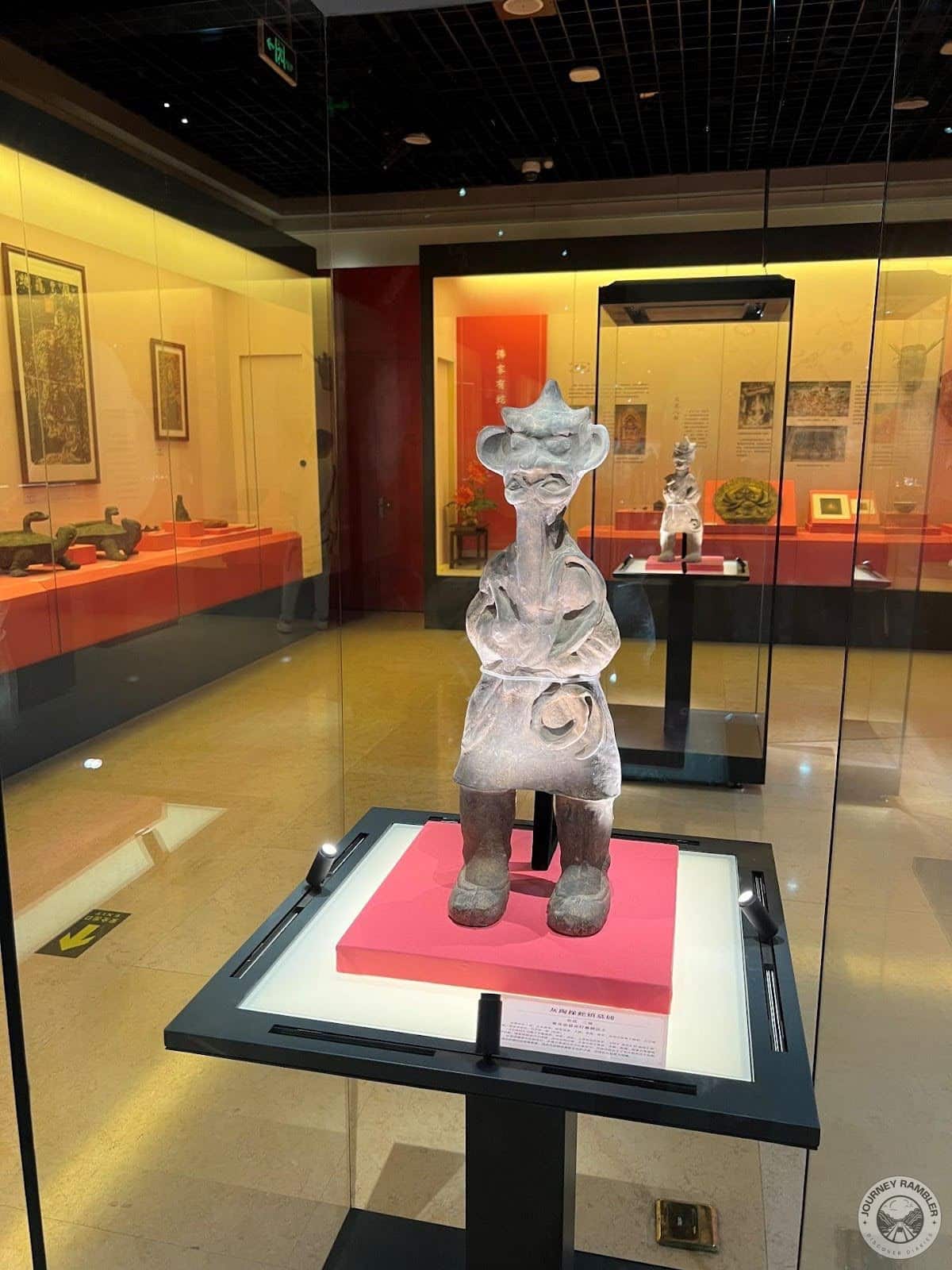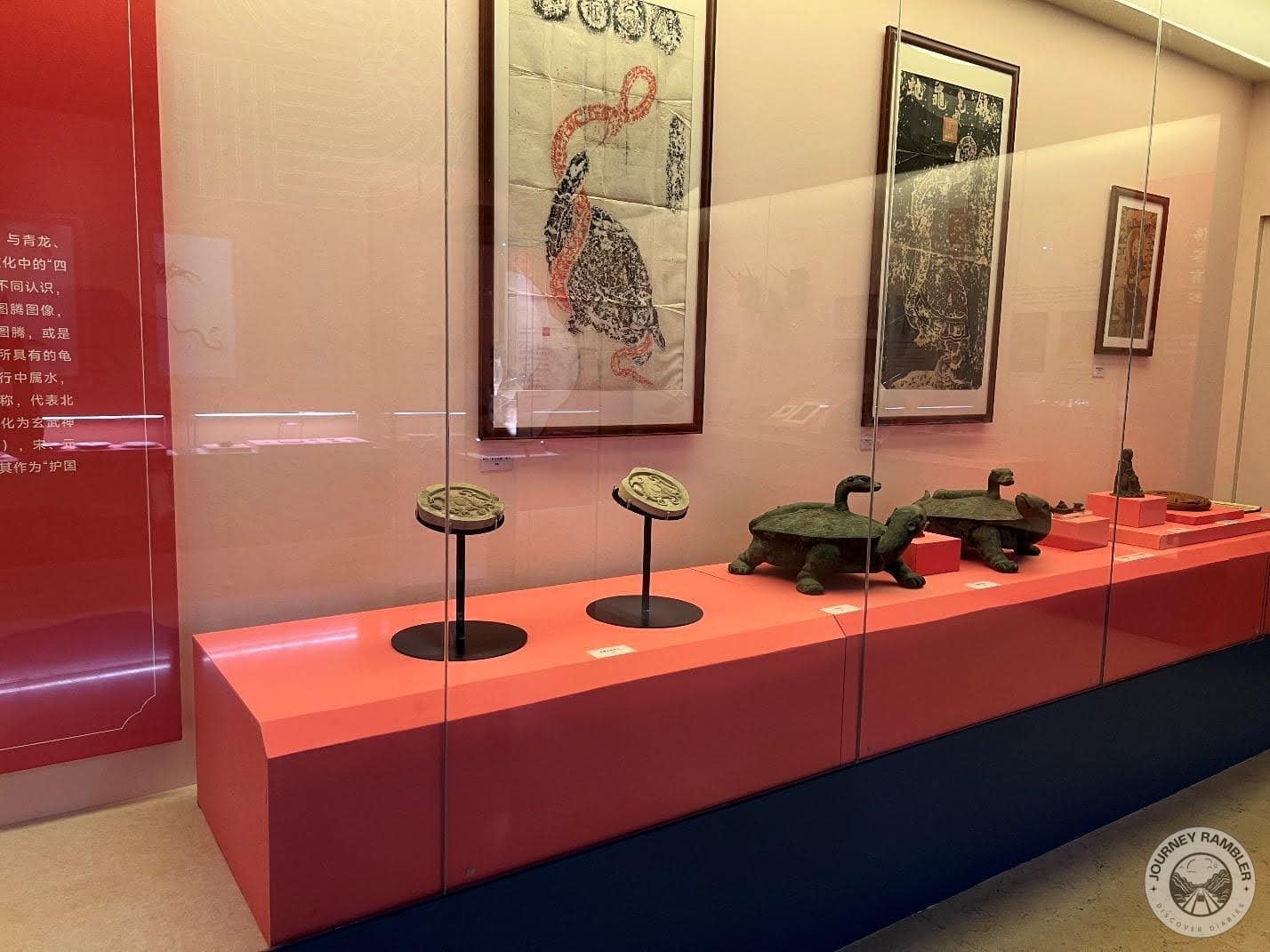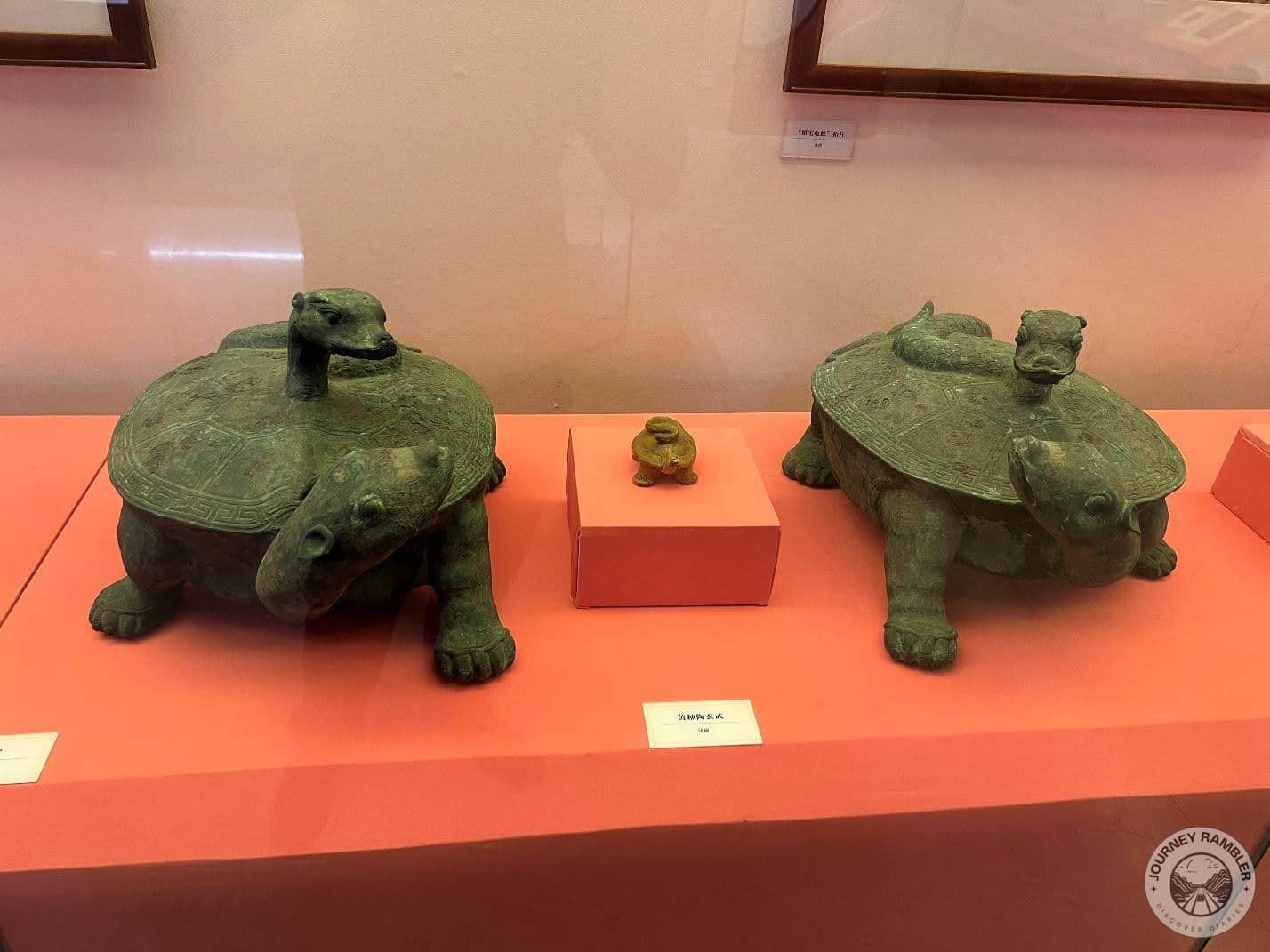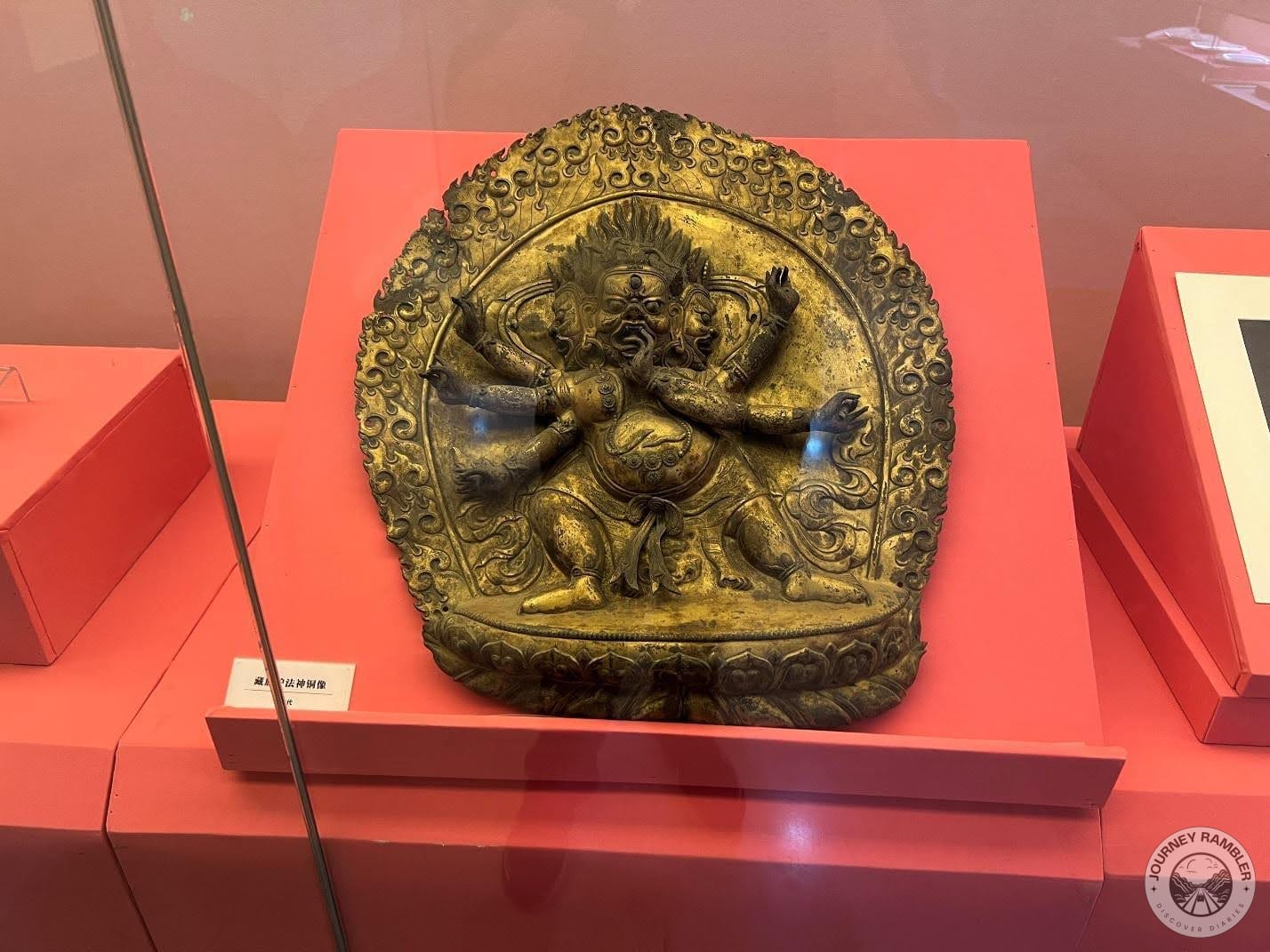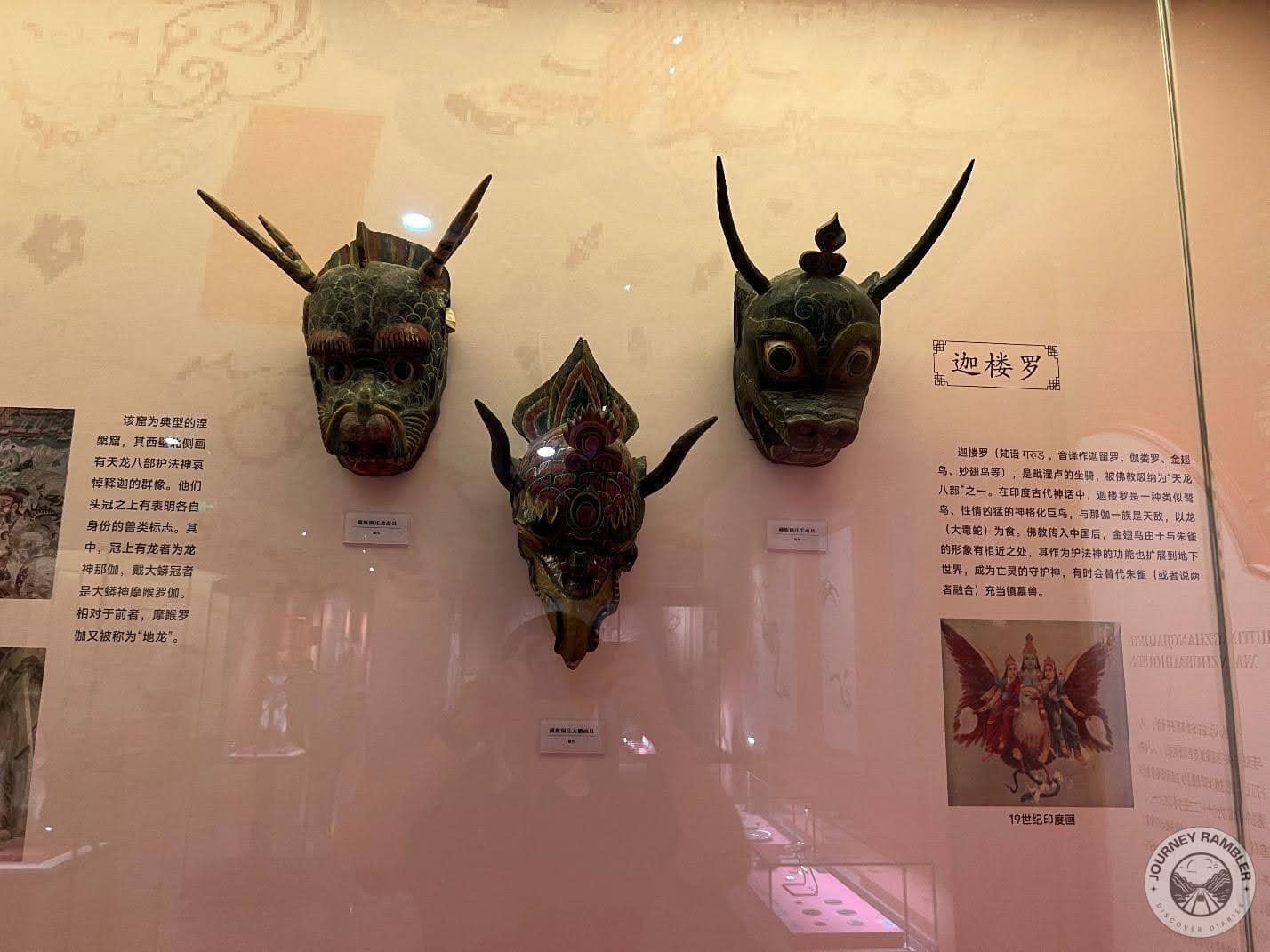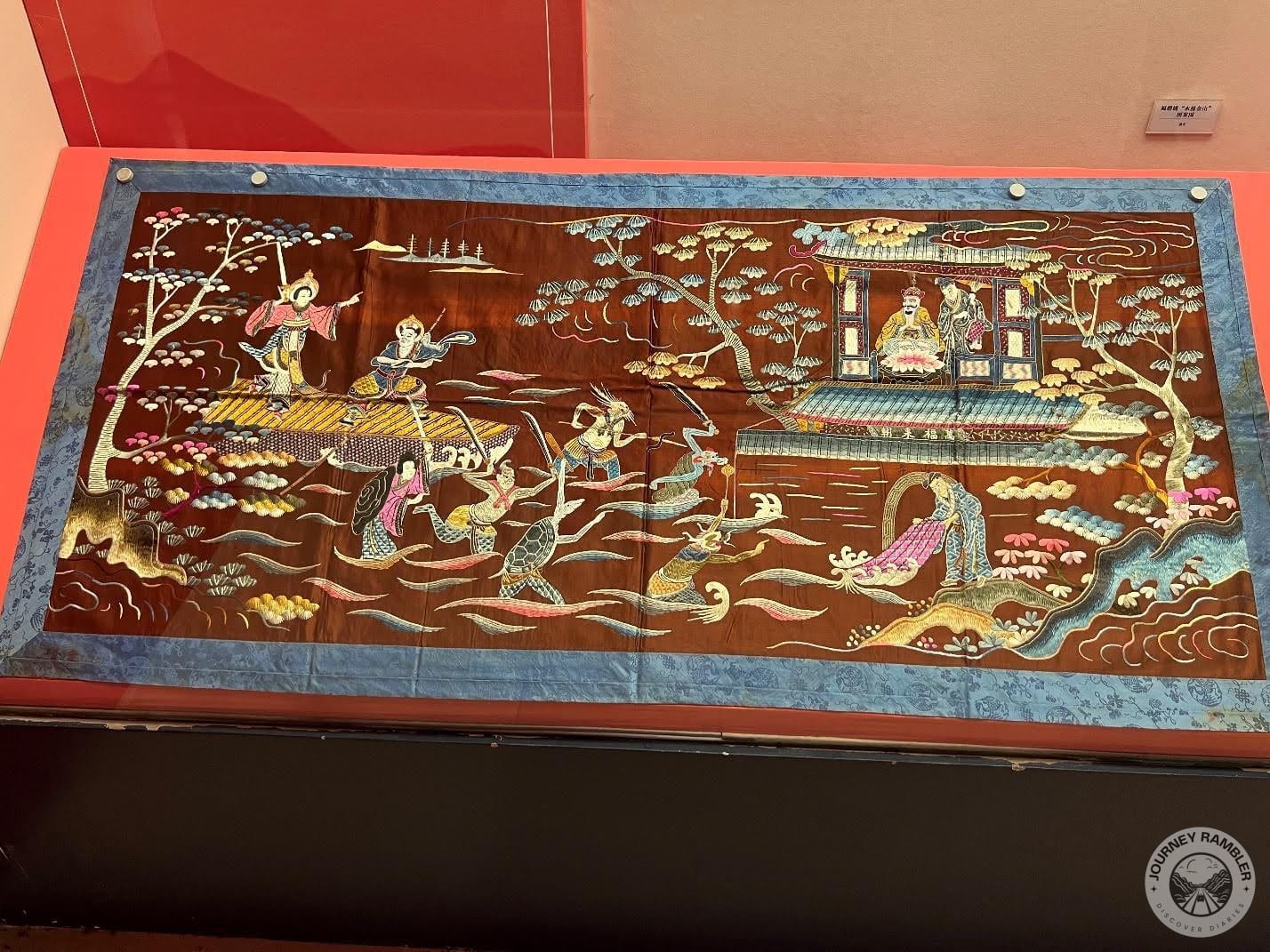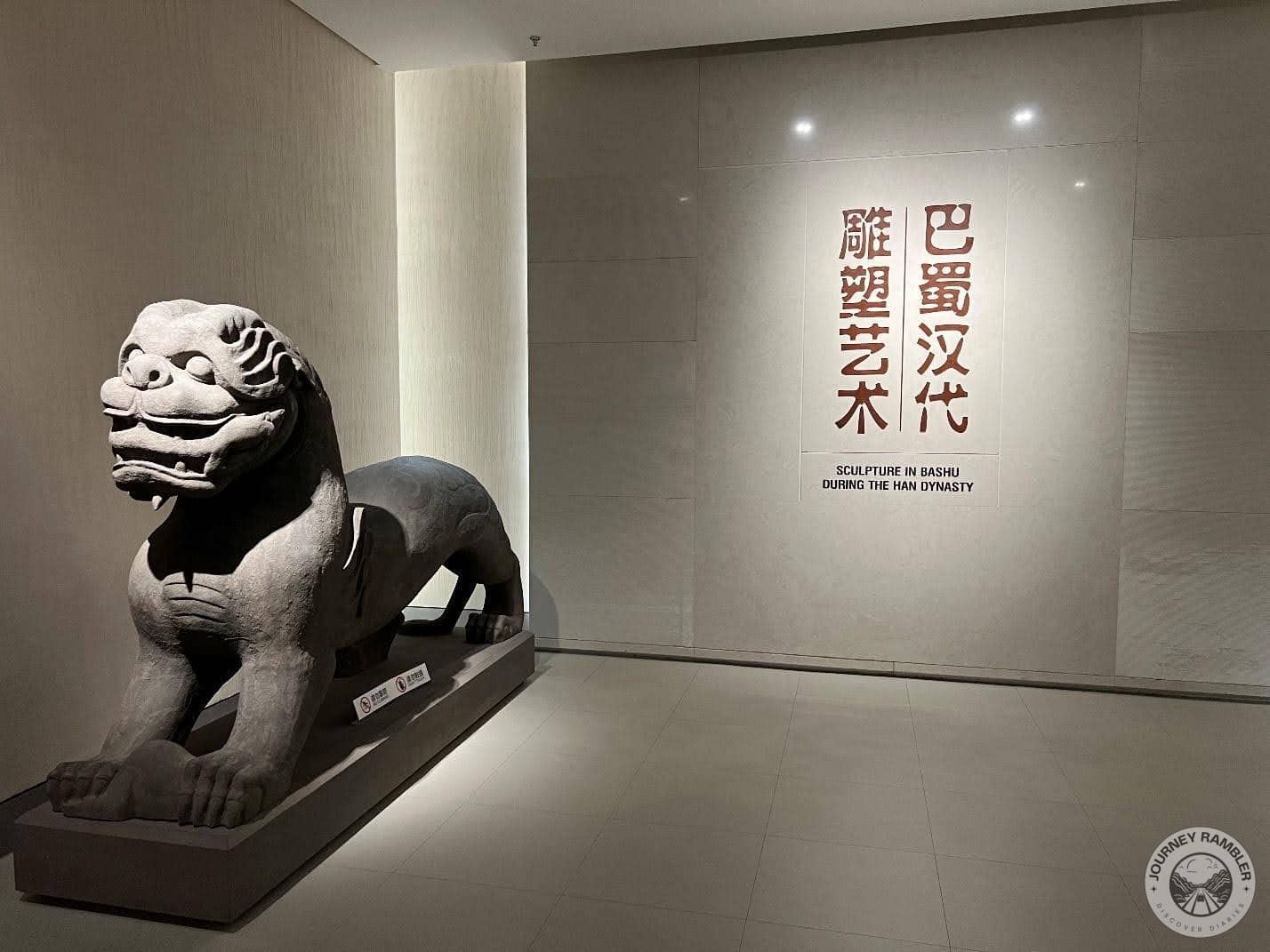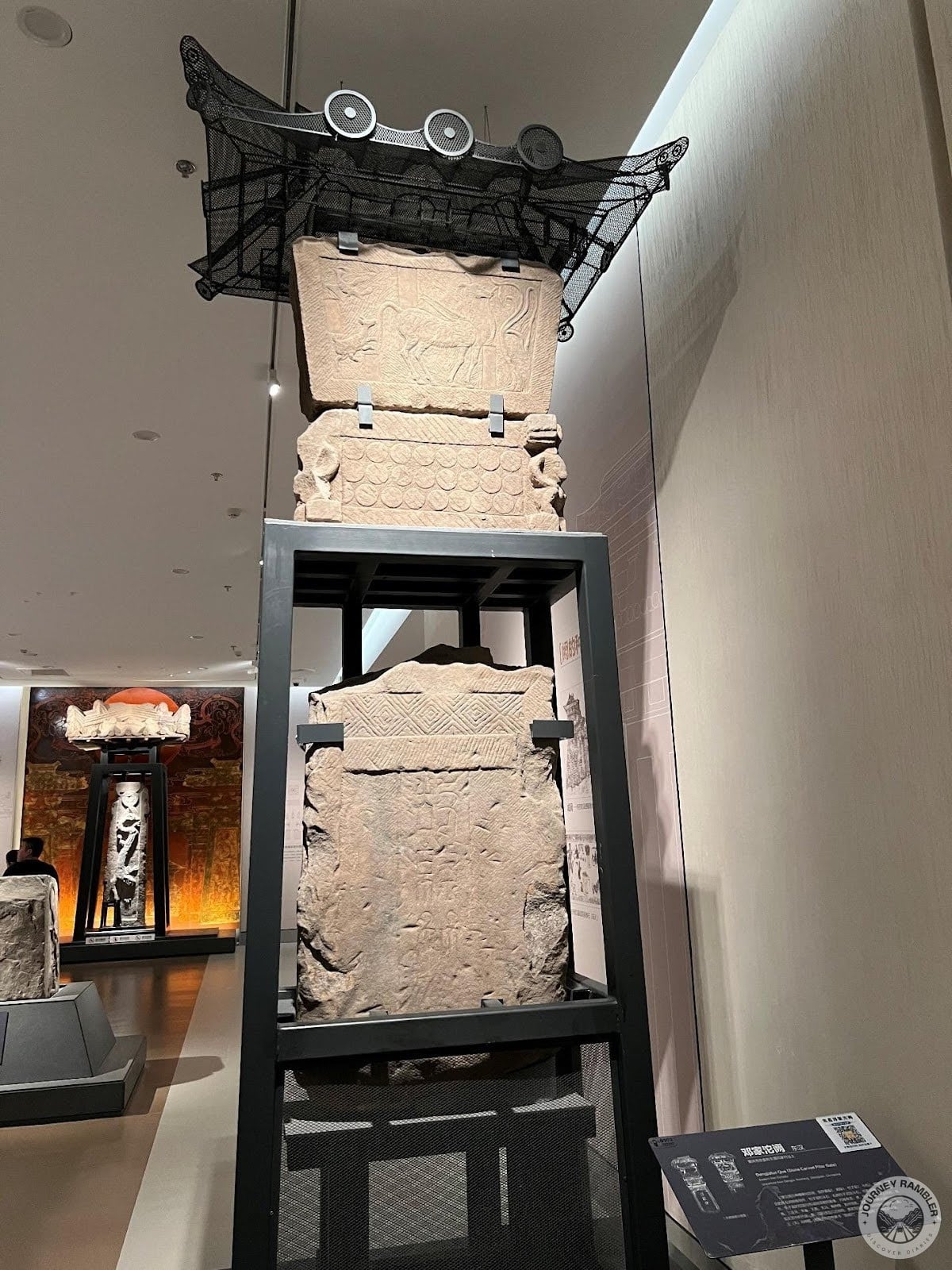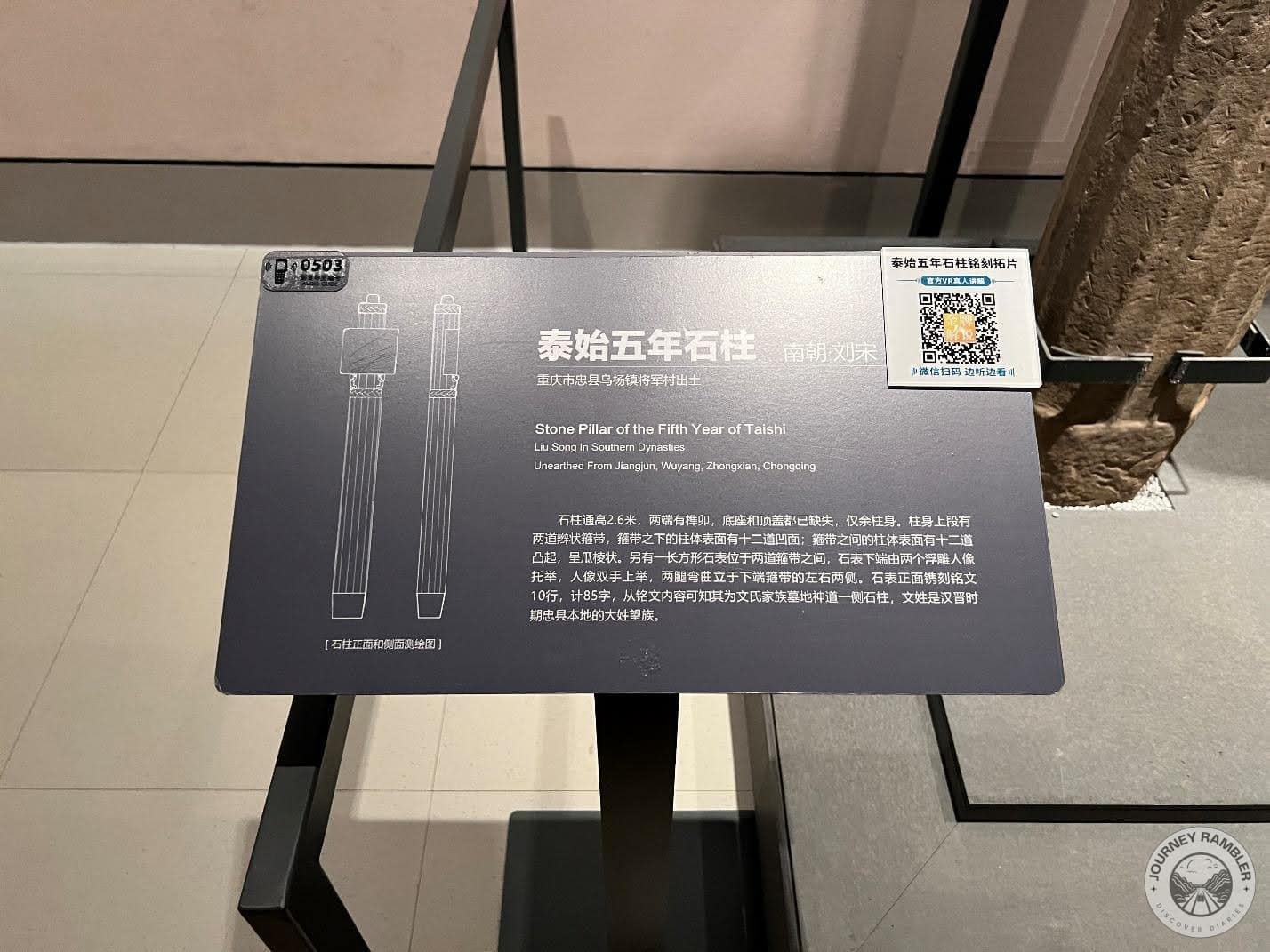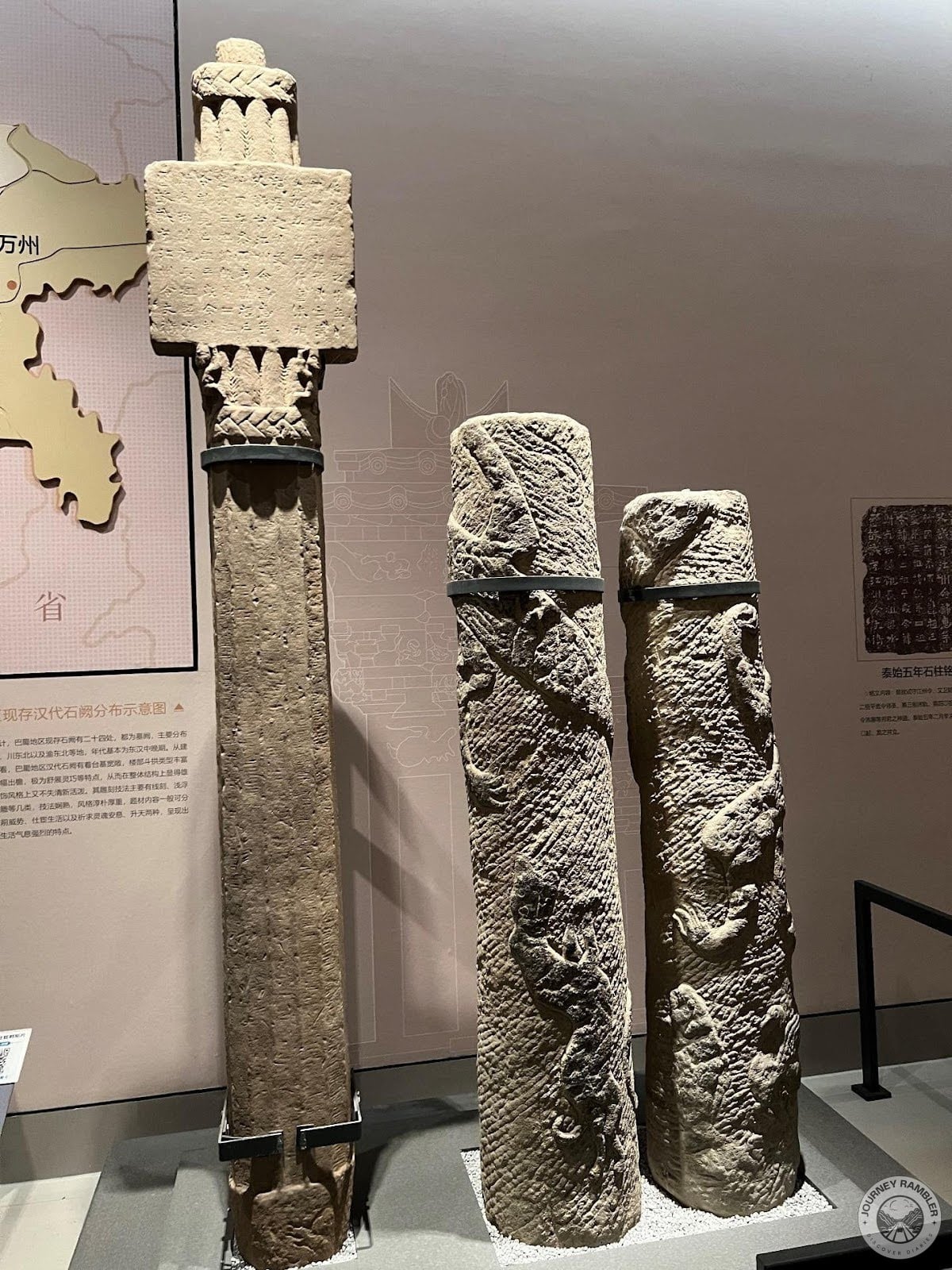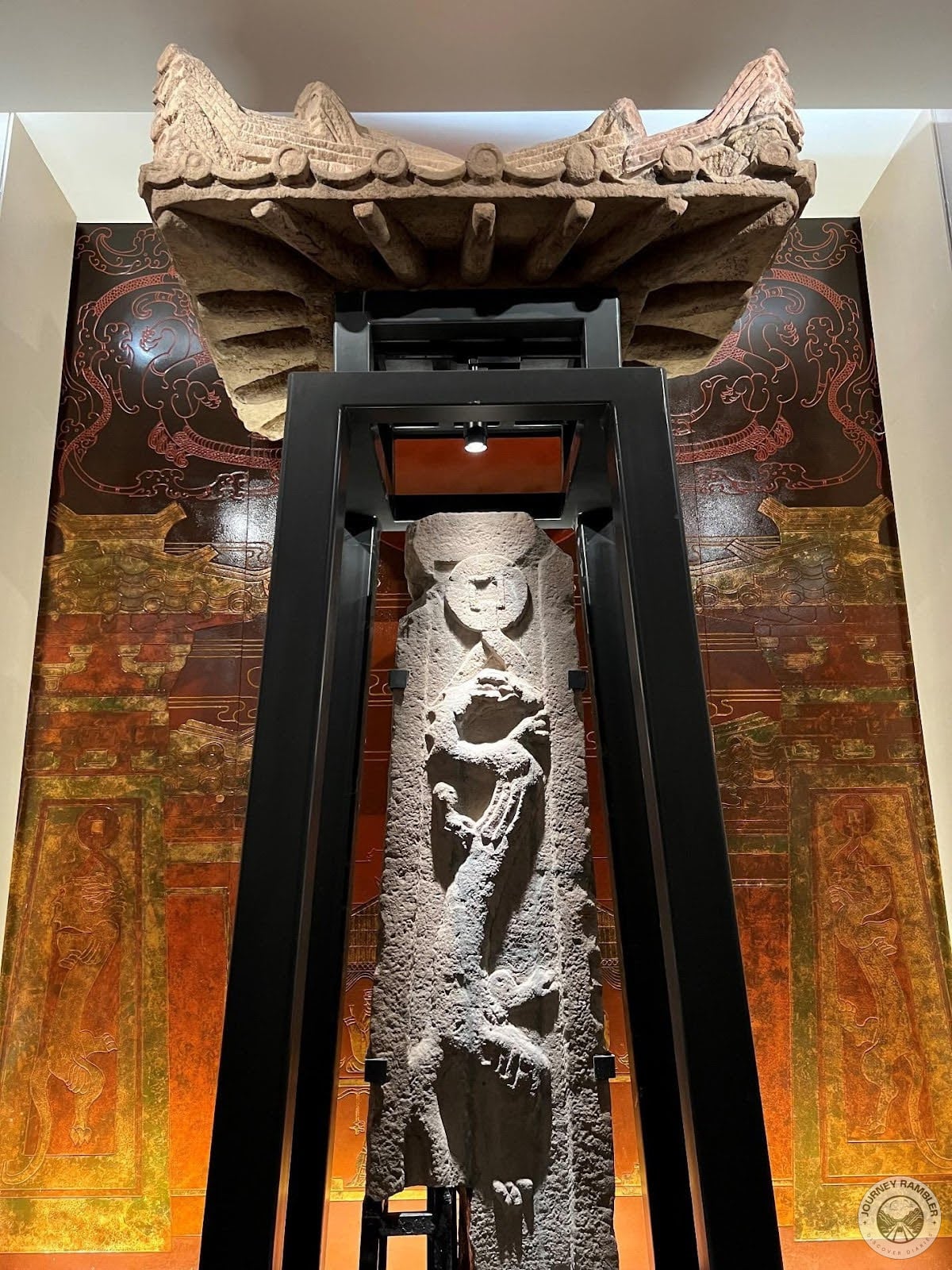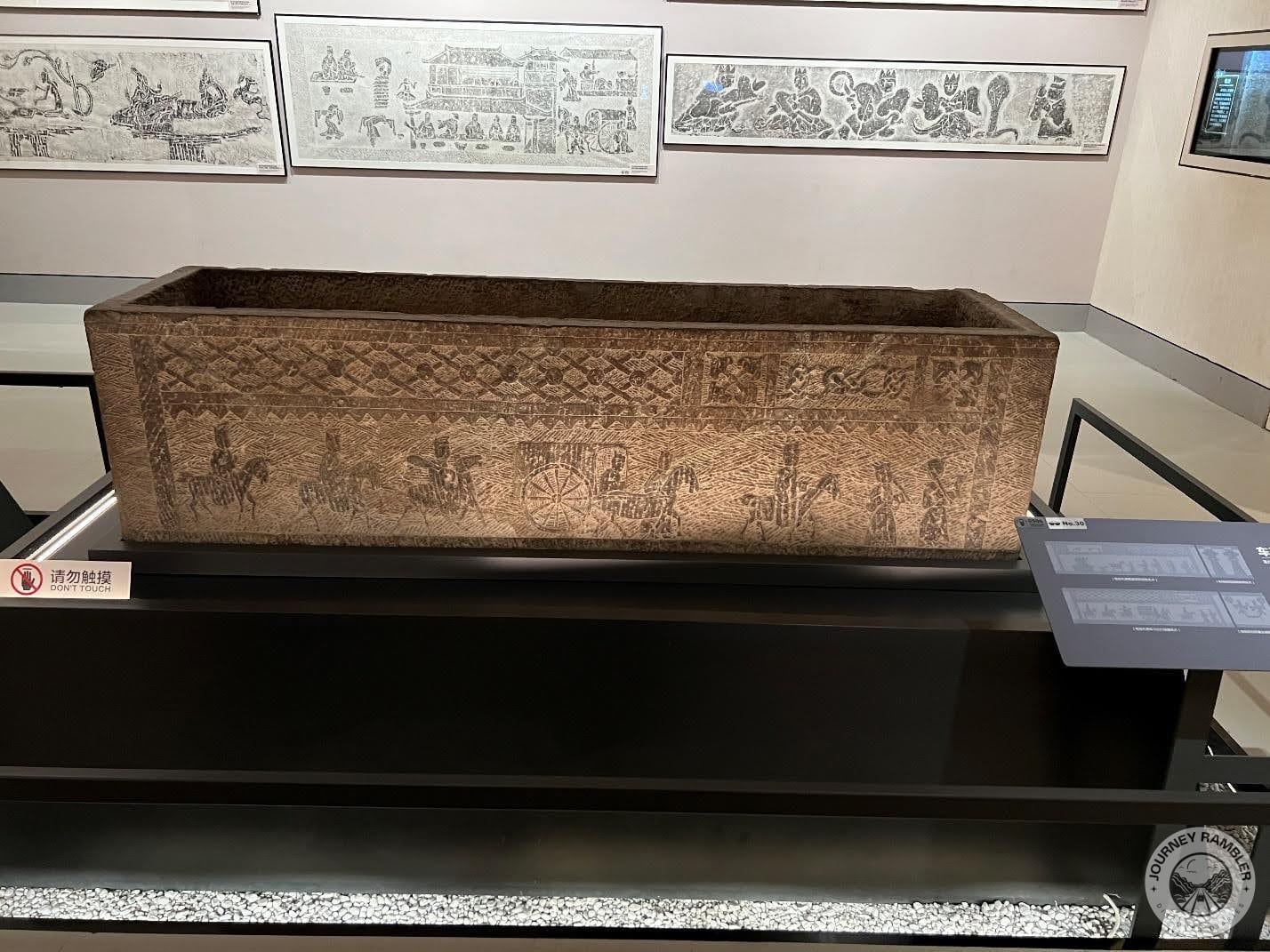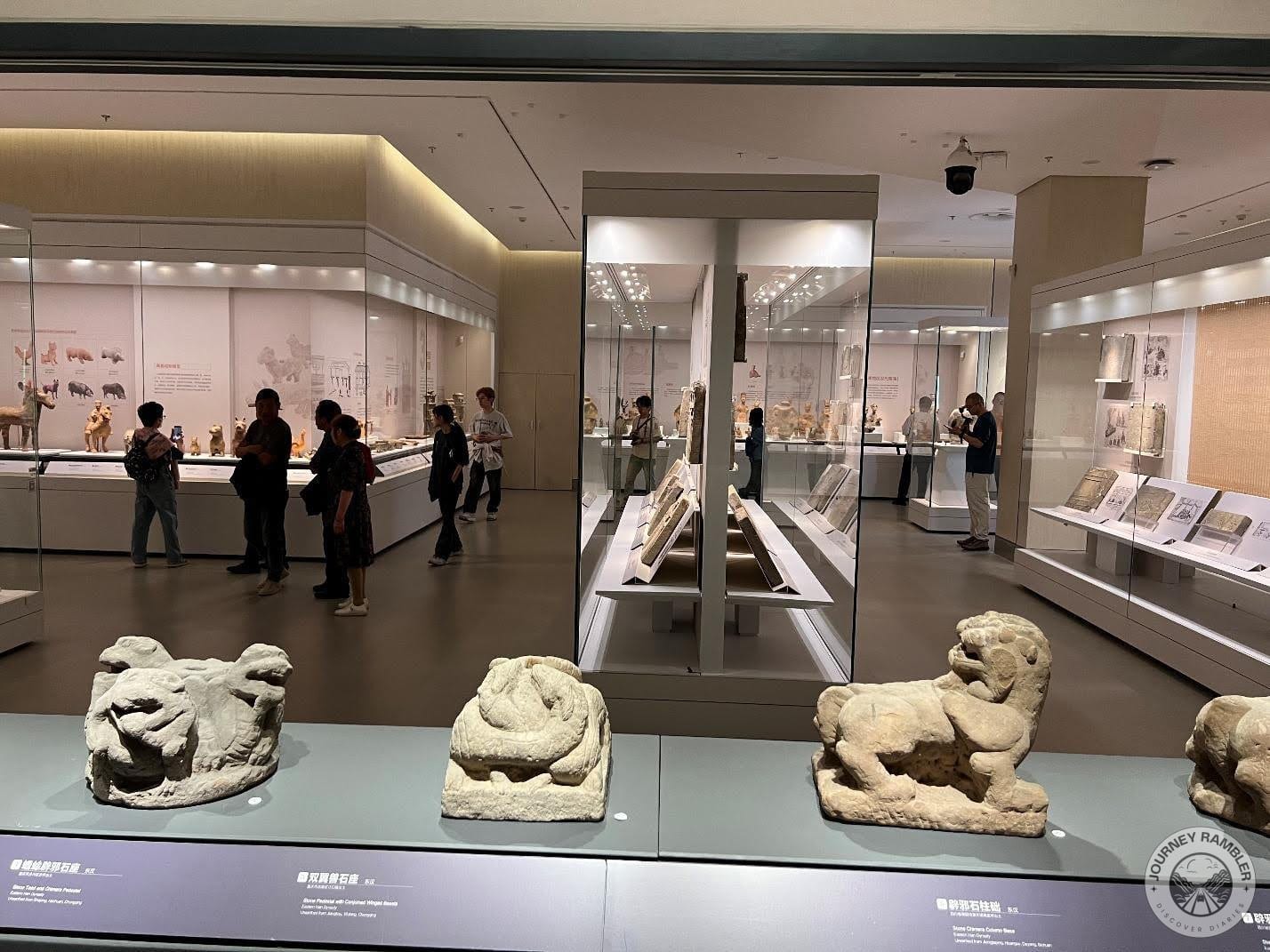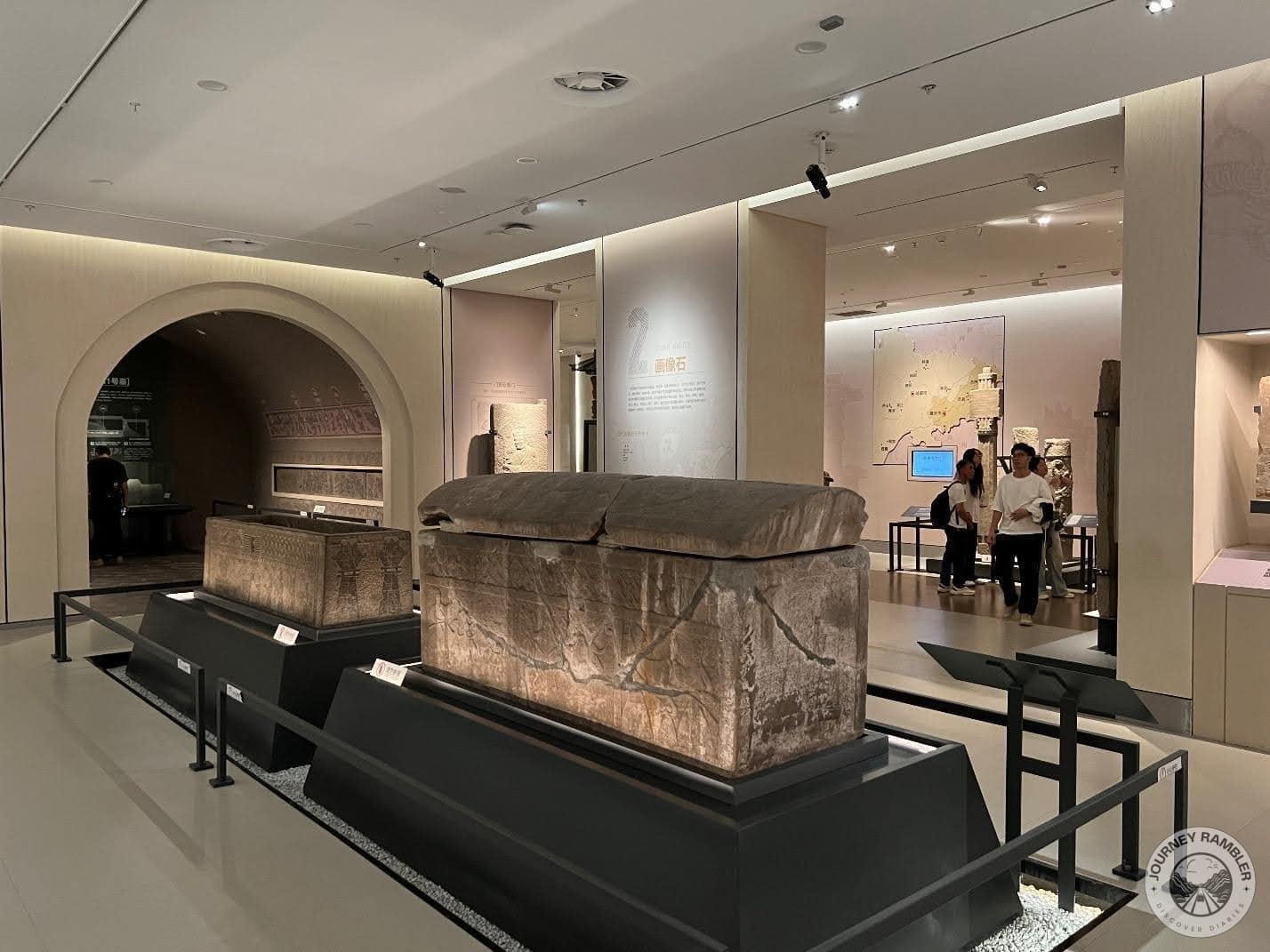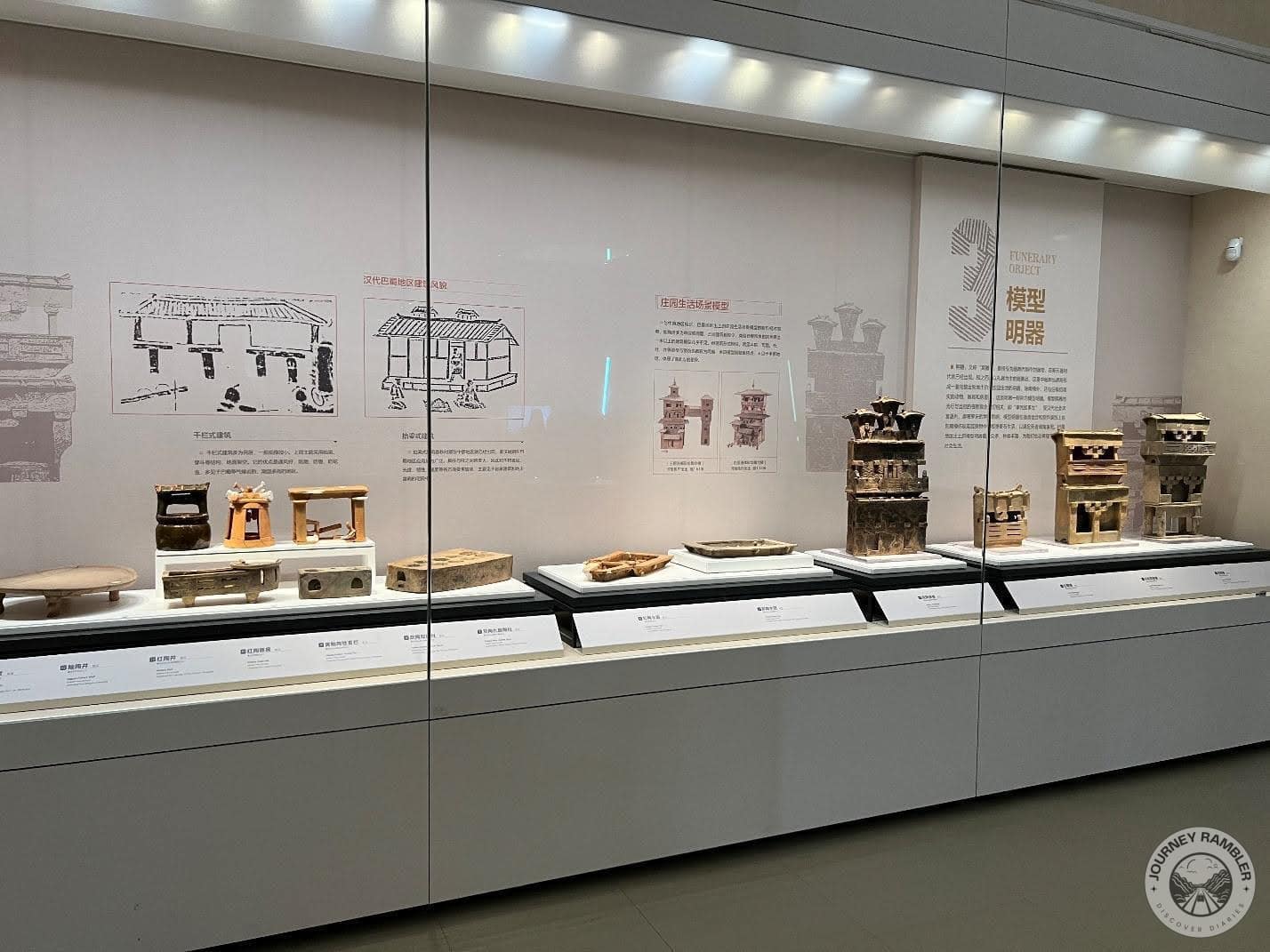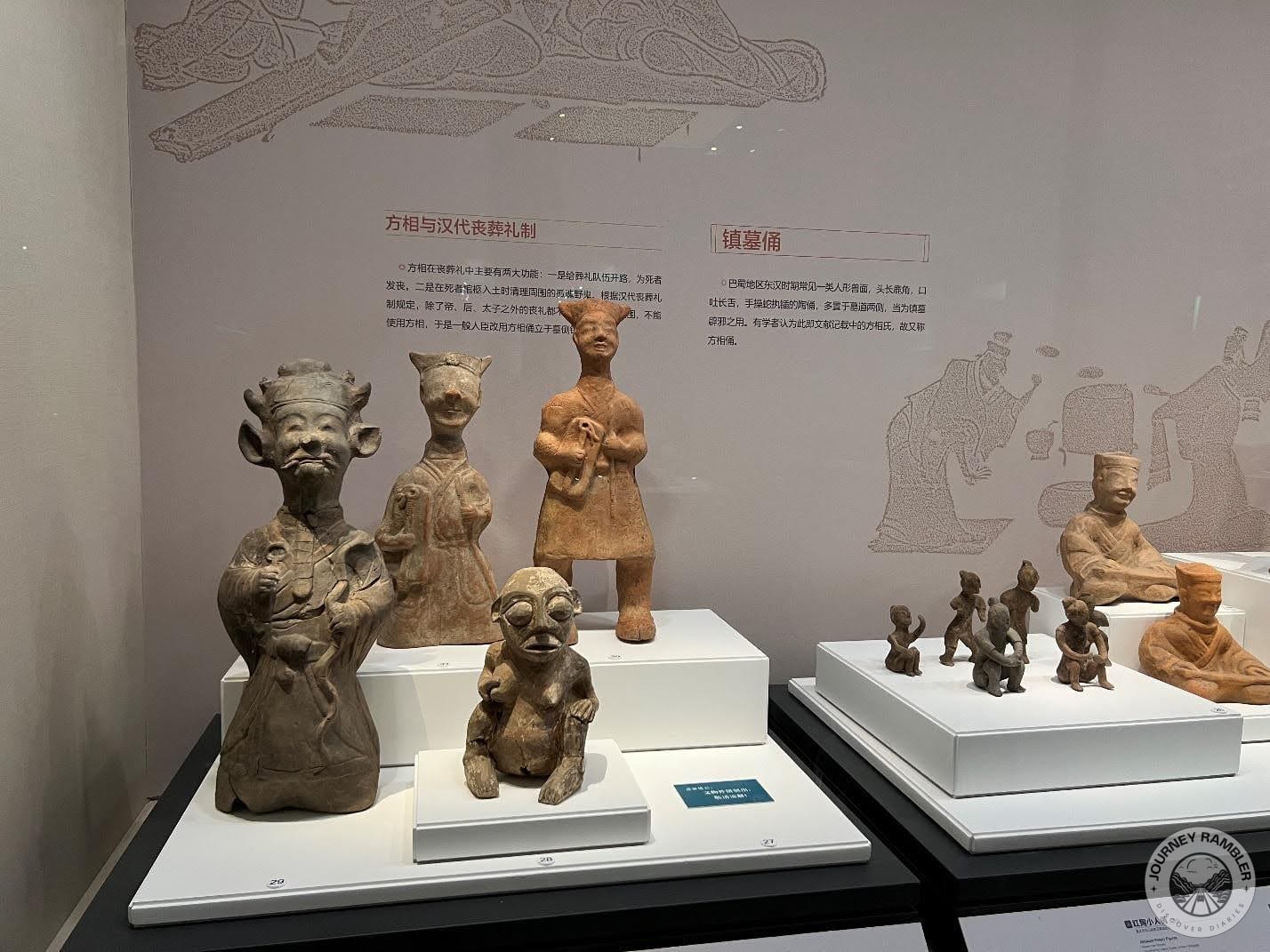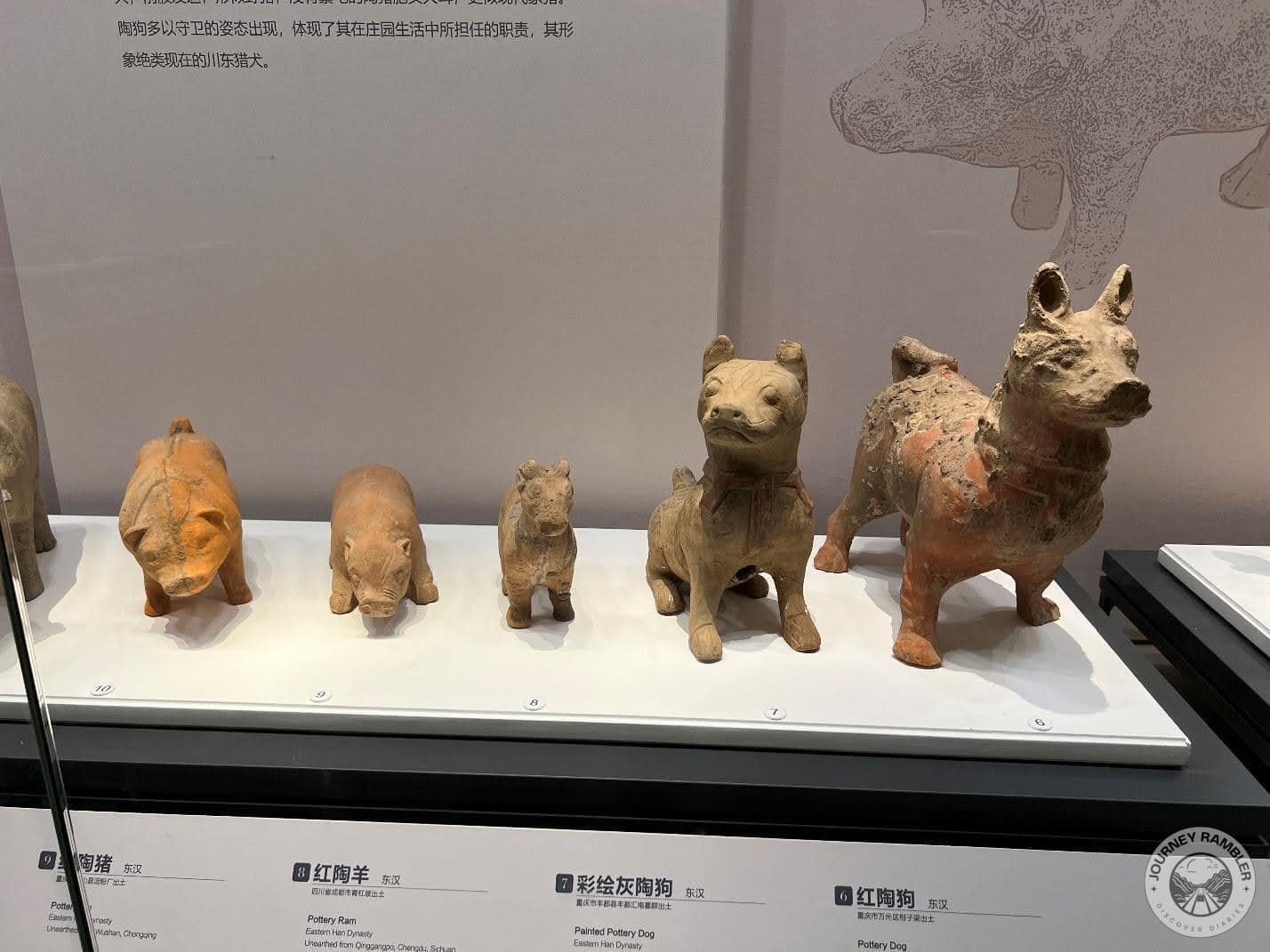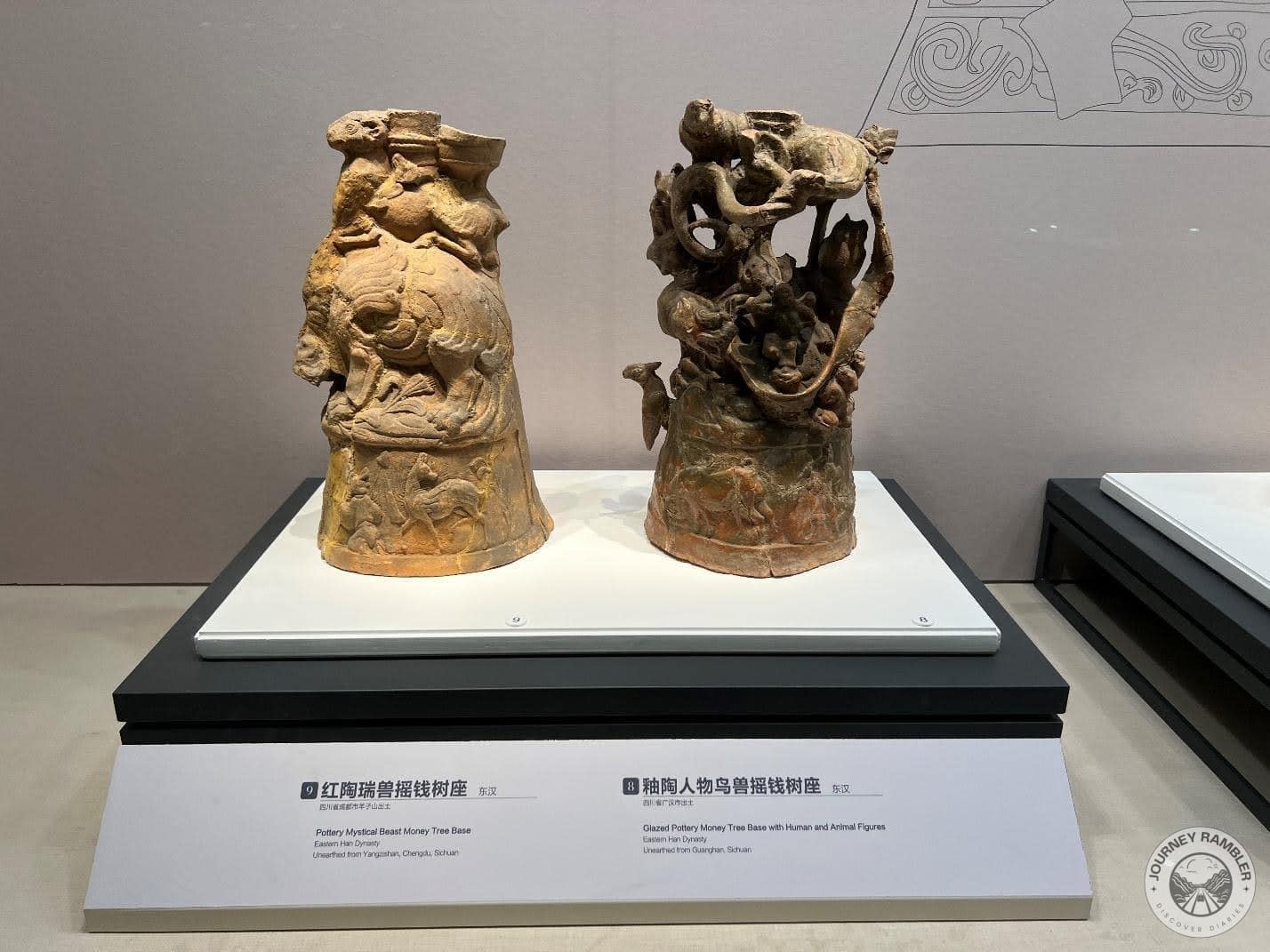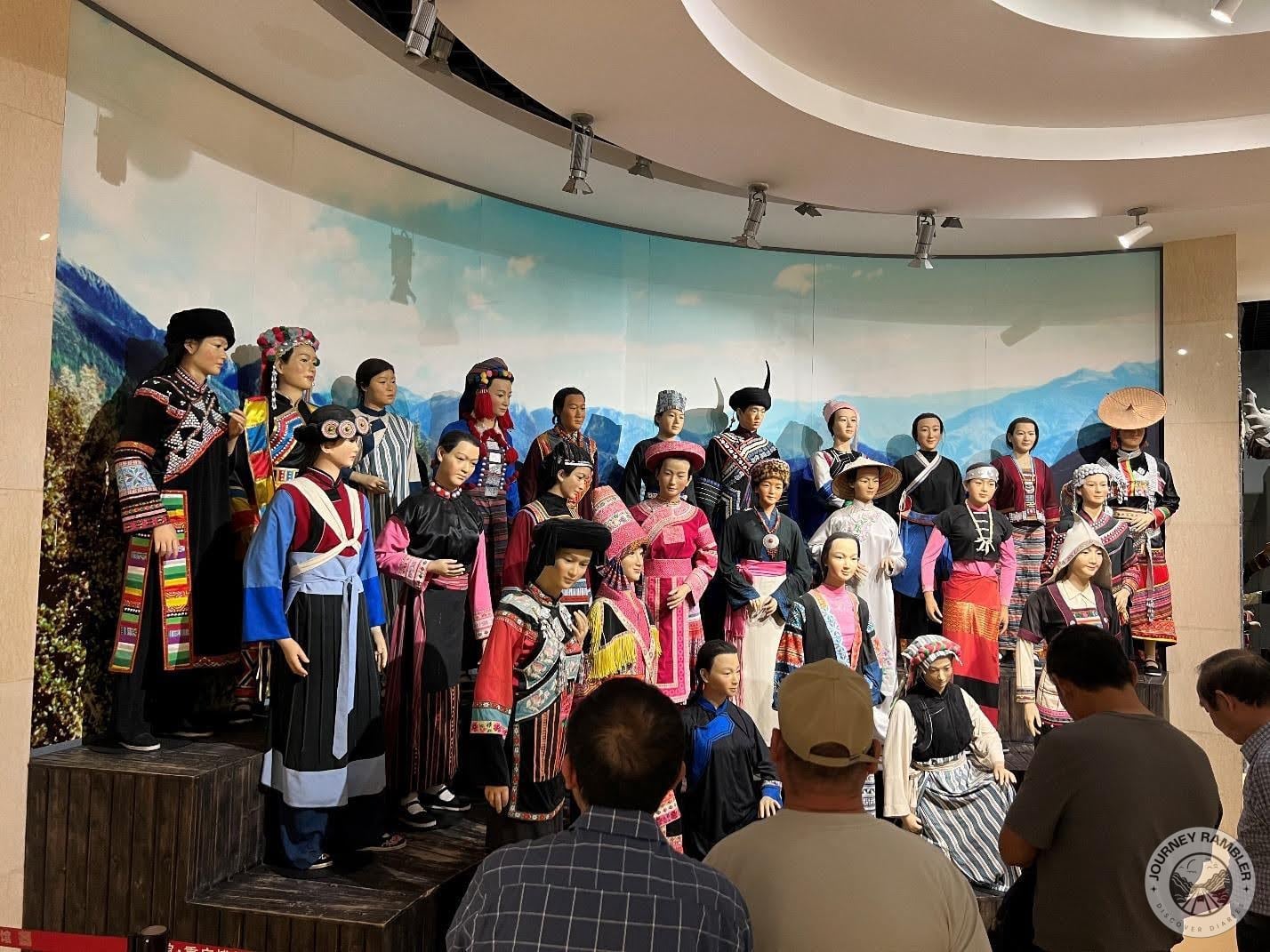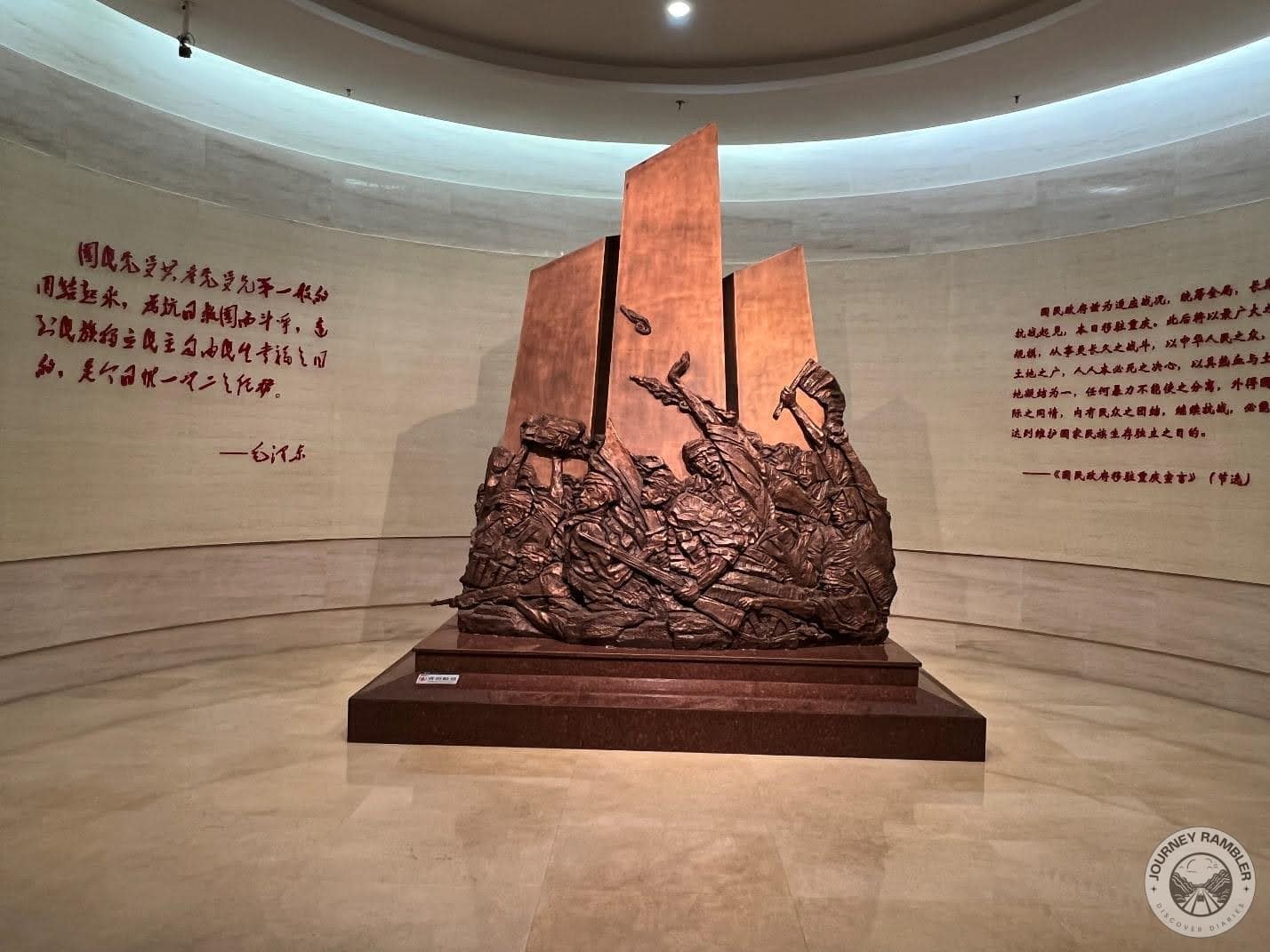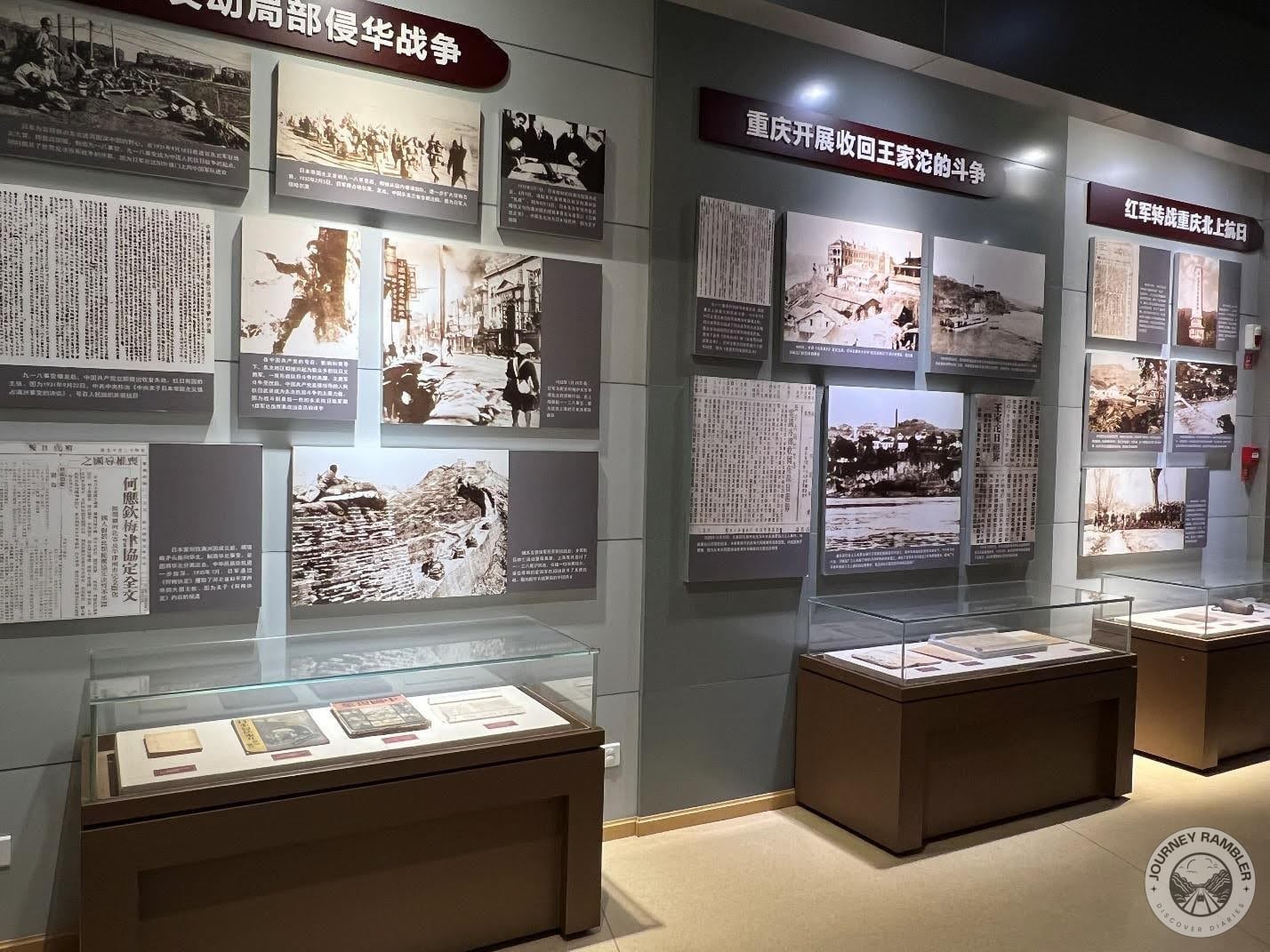After a memorable visit to Chongqing’s Great Hall of the People, I decided to visit the Three Gorges Museum as it was just directly across. Initially I thought that this probably was just your run of the mill museum. What I didn’t expect was a veritable treasure trove of history and culture (just like Chengdu Museum). I typically don’t recommend visits to places I’ve been to just once but I think this can be an exception especially if you’re someone who wants to know more about China’s rich history and the events and people that shaped it.
The Three Gorges Museum: Getting to Know Chongqing’s Rich Culture and History
This is what you’ll be seeing as you approach the museum from the People’s Square. Also known as the Chongqing Museum, it’s said to be the largest monographic museum in China and this view kind of validates that. From here, it looks really large and imposing much like the Three Gorges Dam (which it shares the Three Gorges name with).
Here’s the business hours of the museum that you’ll find at the visitor’s entrance. As you can see, the only day that it’s closed is on Mondays. The rest of the day, you’ll be able to access the museum from 9:00AM to 5:00PM. If you’re a veteran of the PLA then you also get priority assistance upon entering.
From the entrance, you’ll get to enjoy a view of the Great Hall of the People (which I already visited and talked about by the way). There were relatively a good number of people out when I took the picture though I’ve read that it can get a little crowded depending on the season.

free chongqing itinerary
Visiting Chongqing?
Get my original 4–5 day, 13-page Chongqing itinerary in PDF format, based on my real trip, with many photos, hotel, and food tips. Enter your email to receive it free.
We won't send you spam. Unsubscribe at any time.
After taking the previous image, I then proceeded (along with other people) to enter the museum. There was this covered walkway leading up to the entrance with security at the end. As a reminder, while China is in a lot of ways, very modern, it still has some draconian laws that you might want to steer clear of. With that said, always be mindful with the stuff that you bring in these types of establishments/institutions.
If you’re bringing important stuff with you, there are lockers like the ones pictured above that you can rent out. Thankfully, I didn’t bring anything too important when I was there so I just skipped this area.
Immediately upon entering the lobby, I noticed the similarities with that of the other notable attraction here in this area: the Great Hall of the People’s lobby. Rather than round columns that reached the ceiling though, here you get the Wuyang Stone Que. Now if you’re wondering what a que is, this is basically a freestanding ceremonial gate or column that was used to mark the entrance of palaces, temples, tombs, and other important structures.
Chongqing Hotel Recommendations Based on My Own Stay
🔹 Ascott Raffles City Chongqing
🔹 Westin Chongqing Liberation Square
Top Activities in Chongqing
Wulong Tiansheng Three Bridges
Banquet in Ba Kingdom Royal Feast
At first I was unsure what this map was supposed to be but using my translation app, I found that it pointed to the locations of paleolithic sites in the Three Gorges area. If I’m not mistaken, there are a total of 80 such locations listed here.
Also exhibited in this area are what seems to be some of the relics found in the sites listed in the previous image. These are likely some of the first tools used by the Stone Age men that inhabited the sites. From what I can tell, these tools were used for chopping, flaking, and maybe even flaying or cutting the prey that these early ancestors of men hunted.
Speaking of prey, here are some of the bones found in the sites. What was really surprising here is the inclusion of a Smilodon’s canine. For those unfamiliar with these extinct animals, you might know them better as Saber-toothed cats/tigers. Other than Smilodon, fossil remains of other extinct creatures can also be found here.
Here’s a picture of the animals that shared the Three Gorges area with our human ancestors during the Middle Paleolithic period. The top left is of course, the Giant Panda which despite being tagged as a carnivoran (same as dogs and cats), was actually a herbivore. The other two animals are a type of deer and a stegodon.
Moving on from the paleolithic, here are some earthenware that have been dated to the Neolithic period. I always thought that pottery came much later but it seems like it’s been around since as far back as 8000 thousand years ago. What’s also nice about the specimens here is that they actually seem like they’re still intact and some even looked usable (like the ones in the middle).
Aside from pottery and earthenware, this exhibit also has displays for farming implements. The specimens here include shovel and axe heads made of stone. Now one thing I noticed is that the tools actually look like they’re quite ‘polished’. I’m not sure if this was done to make them look nice on display or if they were excavated looking this good already.
So the infographic behind these earthenware vessels talk about how two distinct systems developed within the Neolithic cultures in the Three Gorges Area from 10000 to 8000 years ago. These were called the eastern and western systems and serving as a natural boundary against interaction between them was the Qutang Gorge (shown in the image to the left of the infographic. According to the infographic, this specific timeline was also called the starry sky period.
Now this is a cool display featuring sculptures of a progression of hominids who lived in the Three Gorges area. Behind these sculptures is an infographic featuring (and also called) the Wushan Ape Man and where it sits in the evolution of humans from hominids specifically in the Yangtze River Basin.
From the Paleolithic and the Neolithic, I’ve now come to the Warring States section of the museum. Now, let me preface this by saying that I really loved the Romance of the Three Kingdoms which was inspired by events of this period. As such, I was pretty excited to be here. The map on the left shows the sites of the settlements found during the Warring States period in the Yangtze while on the right is an inscription detailing the visit of a Jinnan Observer/Inspector (Jinnan being the ancient capital of the state of Chu).
Dating back to the Western Zhou Dynasty, this bronze vessel called San Yang Tong Zun is one of the first relics you’ll come across in this section of the exhibit. Used mainly for rituals, this vessel was a core artifact from what is described as the Ba-shu region’s prevalent bronze culture at that time. Known as the Three Sheep Bronze Zun, I found this vessel’s deformed animals and cloud-thunder patterns to be really mysterious-looking.
Know what else is mysterious? This was an exhibit that featured dozens of earthenware over, what seems at first sight, to be like a dessicated boat. This was honestly one of the more impressive things I saw here and it kind of felt like I was looking at an art installation more than anything else (if you want to see more art in this city, you can go to Chongqing Art Museum which is housed in a building also known as the Chopstick Tower).
Thankfully I didn’t have to look long and hard for an explanation as to what the exhibit was. Turns out, the dessicated looking boat is a boat coffin by the Ba people. As their name implies, these were used during the Warring States period as coffins per the Ba people’s customs and signified their close connection to boats and water. Much like with the Vikings, these boats were said to function as vessels to carry the soul to the afterlife.
At first I was kind of unsure what this was but after using my translation app, I realized that this was some of the strata that were found in the Zhongba excavation site (where the ceramic vessels from the image prior to the last one were found). Essentially what you’re looking at is much like growth rings on a tree trunk. Each layer corresponds to a certain era/time in history with this one starting from the Warrings States (for the very bottom layer all the way up to the modern era sandwiching the Han, Six Dynasties Period, Tang, and Song Dynasties (from lowest to highest).
This was another mysterious looking exhibit that featured what looked like the designs from those Nazca lines in Peru. These were in fact symbols used by the Ba-Shu (pertaining to the Ba and Shu kingdoms) culture which had made Sichuan its home during the Zhou Dynasty and the Warring States period.
While the Ba and Shu cultures might have been active in the region, they were not the only ones that were represented in the relics records. This is a jade pendant (or the remains of one) that was also found in one of the excavation sites in Sichuan. Unlike most of the relics I’ve come across so far, this one supposedly showcases influences from the Chu culture which was outside of the Three Gorges area.
I’m not quite sure what this was used for but the tiger handle on its seal/lid looked really intricate. It’s not as sophisticated as what you’d see nowadays but considering how long ago this was made, I think it’s also quite impressive that people were able to make something like this with less than ideal equipment and technology.
Here’s a diagram highlighting the designs of bronze spear and halberd tips all from the Warring States period. The right-most is a diagram of a bronze spear tip that features a silver spotted figure pattern while to its left is another one that features a water bird pattern instead. As for the left-most diagram, it’s of a bronze halberd (also called a ge) tip that features an inscribed tiger pattern.
Displayed here are some of the bronze swords that saw use during the Warring States period. The two smaller swords at the top are quite possibly generic weapons given to soldiers while the larger one in the bottom features a cloud pattern band or hoop. I’m not sure if the bottom most sword was for a higher official or just for decoration though.
So my first thought when I saw these sculptures was that they looked really gnarly. Upon reading the inscription describing what they represented though I kind of realized why they were depicted in that manner. Basically, these depict trackers (boatmen) whose work required that they pull boats upstream through the Three Gorges of the Yangtze. They’re depicted with arduous expressions because that would best describe the kind of work that they did.
I’m not too sure but I think these boatmen have probably been around since long before these pictures were taken. Considering how life in this area revolved around the Jialing and Yangtze since even before the Warring States period, it’s probably safe to assume that this profession has persisted for over two millennia.
I’m not going to lie, this was one of the nicest looking displays that I saw here. Something about it just made me want to go to the beach for some reason. Kidding aside, this type of boat is called a sampan (if I’m not mistaken) and interestingly enough, some of these can still be found plying the waters of the Yangtze even to this day.
These were quite the interesting figures. According to the description, these are Sancai clay figurines. From what I could find online, Sancai is a technique that uses a three-color glaze and was first popularized during the Tang Dynasty. The colors used were usually yellow, green, and brown. As for the figurines themselves, these were typically of people though sometimes animals and mythical creatures were also depicted.
So if you’re not too familiar with the Warring States period then you probably won’t know who this person is. Fan Yuqi was a former general of Qin who actually cut off his own head willingly to give to an assassin named Jing Ke just so that he could then get close to the King of Qin (who would later on unify China and become its first emperor).
This is the garment said to have been worn by the famous female general Qin Liangyu. She is said to have lived during the late Ming and early Qing dynasties and was a skilled martial artist. Together with her husband Ma Qiancheng, they both trained a powerful local army that came to be known as the ‘White Pole Army’. Her husband eventually died and she ended up replacing him and leading the army and achieving military feats.
And here we have one of the most renowned figures during the Warring States period: Guan Yu. This guy made such a name for himself that he became deified as a god of war across Chinese Buddhism, Taoism, and Confucianism. He didn’t have a direct connection to the Three Gorges Area per se but his actions while alive did have an impact not just here but for the rest of Ancient China as well.
So this is the inscription found at the foot of the Guan Yu bronze statue in the previous image. It talks about how he was a paragon of righteousness, loyalty, courage, and trustworthiness as well as detailing how tall the statue is (270 cm). Originally, the statue was housed in a temple in Chongqing before its transfer to the Chongqing Museum in 1959.
I’m not sure what building this wall was a part of (if it was even part of a building at all) but it did look very impressive and imposing to me. I initially thought that it was just a plain old wall until I looked closely and saw that it had Chinese calligraphy inscribed on it. Unfortunately, my translation app had a hard time deciphering what these meant and I also hadn’t checked what the museum’s inscriptions were for it.
Now this was another interesting exhibit here. Much like the walls earlier, these stone steles also had inscriptions written on them. Apparently these were popularly used for commemorating events as well as the dead. Additionally, they also serve as public markers with some having poems (or lines from poems) written on them.
Speaking of poems, here are some sculptures of what I think are poets along the river. Or at least that’s what the title of the description seems to hint. Called ‘Poetry Fills the The Three Gorges’, this scene depicts poets getting inspired by the scenic beauty they witness on a daily basis in the Three Gorges.
Here’s the description for the scene in the previous image. As I said, the men portrayed in that scene are poets and the description further talks about there being 10000 poems written about the Three Gorges that have passed down through the years and dynasties. The description also talks about a county in Chongqing called Fengjie that has a city called Baidi which is also known for being the ‘City of Chinese Poetry’.
This was a rather interesting read about Wu Culture and how it has been preserved in its original form here in the Three Gorges Area. This was actually the first time I heard of it so I decided to look into what Wu Culture is. Apparently, this is a traditional practice or religion that’s characterized by the belief in the existence of spirits, ancestors, and the power of shamans called Wu. Pictured are what appear to be depictions of this culture from artifacts likely found in the Three Gorges area.
So a couple of years ago I saw this video on YouTube about droughts in China causing the emergence of a submerged Buddha statue and for some reason these reminded of just that. From what I can tell, these rock-cut sculptures are also of Buddhist origin and quite possibly depict the life of Buddha (at least I think the ones on the left does).
Unlike those popularly found in the tomb of Qin Shi Huang, this individual and horse figure didn’t seem like it was meant for an emperor or a soldier. First off, the individual portrayed here doesn’t look like a soldier but more like a tradesman. Secondly, the individual and the horse aren’t made from terracotta like the first emperor’s soldiers. Instead, both are made from copper and their details and anatomy really aren’t as detailed.
These are three books that deal with the topic of epigraphy or the study of inscriptions and texts that are engraved, written, or even scratched on metal, pottery, and stone. What’s interesting about these books is that they’re all relatively old. For example, the left-most book (called the Collected Antiquities Record) was said to have been started in 960-1127AD and was continually worked on until it was completed after 20 years. In a way, you could consider these books as a precursor to museums since they helped preserve and organize historical and cultural information.
Here are two tiles that have seen widespread use in China throughout its history. To the left is limestone and beside it is marble. From what I can remember, limestone was used earlier than marble though the latter became much more ubiquitous thanks to adoption by the wealthier classes.
This is a diagram of the Wuyang Stone Que that I wrote about earlier. This structure was discovered just this 2001 and its sandstone structure was dated to the Han dynasty. The diagram further explains how the que can actually be extended with eave extensions.
Now this was another surprising display here that I couldn’t help but read through and appreciate. It shows Chongqing in 1935 and even at this point in time, it actually looked quite nice. The stilt houses and even the multi-leveled city planning are all evident in these pictures.
This one’s a diorama of Chongqing in the 1940s. Looking at this diorama and then comparing it with what I’ve seen of the city, I honestly can’t help but be amazed at how far it has come. From looking like a town in the boondocks to being a global economic powerhouse in less than a century. That’s some really insane progress if you ask me.
Perhaps what’s even more impressive than Chongqing’s progress though is that it still is able to look at its past and actually celebrate it. Most cities I’ve been to kind of lose their identity with each new skyscraper or mass transport project. Chongqing still celebrates the past with the Three Gorges Museum, Ciqikou Ancient Town, and the Great Hall of the People (just to name a few).
Okay, enough waxing about Chongqing and the Three Gorges Area’s past. Going back to the tour of the museum, I found myself in this reenactment of what seemed like Chongqing at the turn of the century. This particular scene I think is of a restaurant though I’m not too sure.
Here is a typical dining room of a house in the Three Gorges. If you’re from a Western or Westernized country then you might be wondering what the shallow basket on the table is. It’s called a winnowing basket and it’s basically used for separating the chaff from grains of rice.
This scene depicts two workers in a blacksmithing shop. Judging by their clothes, I think this might have been a scene that happened sometime during the 1910s or later. This was the time when China started industrializing and when smiths like the two shown above would have been in high demand.
So if you’ve watched Chinese period/kung fu movies then you might be familiar with the object on the left in this image. Called a sedan chair, it was used mainly for transporting people (usually the well off/those from the upper classes) over short distances. Right next to the sedan chair is a wedding cabinet or dowry. Unlike the sedan chair, I don’t think most people in the Western world are familiar with this. As its name implies, this cabinet was presented along with the bride, to her husband and his family. It typically contained jewelry, clothing, household goods, and bedding among other things.
If you like vintage trains then you’re probably going to want to head to this section of the exhibit. While I’m not sure what the exact name of the engine is, I’m pretty sure that this was in operation prior to the second world war.
Here are a pair of traditional looms. I might be wrong but I think the one in front is called a Kesi loom while the one behind it is a Xilankapu loom. The Kesi loom is used mainly for tapestry like the ones hanging on the wall in the left side of the image. Xilankapu on the other hand, are used for weaving brocade examples of which you can see on the right.
Here is another sculpture depicting a scene in a noodle shop. Kind of a tangent but it’s actually quite interesting to think that even with the advances in technology, there are still shops today that make their noodles this way. What’s even more surprising is that people actually seem to enjoy noodles and noodle dishes that are still made traditionally.
So as you’ve probably noticed, a lot of the displays in this area are about workers and industrialization (or depict these themes in some form or another). This one features a sculpture of a man working with what looks like a mechanical power hammer.
If I’m not mistaken, these are rolling mills and they’re typically used for thinning metal bars. These looked pretty beat up which is understandable considering how they’re used. That said, I’m not quite sure if these were for hot or cold rolling.
While not as large as the locomotive engine or power hammers and rolling mills, the sewing machine was in no way less impactful. These were instrumental in making all manner of clothes much more affordable for a growing population.
Stepping away from the Industrial Revolution displays, I came across this area with a zodiac cultural celebration exhibit with the theme ‘Snake Dance Welcomes Spring’. Some of the snake-related artifacts exhibited there included this tomb guardian figurine that looks like it’s holding a snake.
Here’s another section of the exhibit featuring paintings and other artifacts. One of the paintings and three of the artifacts feature the intertwined turtle and snake called Xuanwu or the Black Warrior. This is said to represent a harmonious balance between yin and yang with the turtle symbolizing the earth and longevity while the snake embodies transformation, intellect, and the celestial realm.
Here’s a closer look at the two Xuanwa figures and the smaller third figure that wasn’t visible in the previous image. Unlike the tomb guardian figurine which was dated to the Eastern Han dynasty, I’m not quite sure how old these figures are. That said, they kind of look cool with the two larger figures seeming like they’re mirror images of each other.
This is a repoussage of Mahakala, a deity in Buddhism that protects the Dharma. Now you might be wondering what this is doing here? Well, Mahakala is actually associated with snakes. In fact, if you looked closely at his belly area, you’ll find that there is actually an engraving of a snake there.
Here are a couple of Garuda masks. Now you might wonder what a bird deity is doing in an exhibit about snakes. Well, Garuda is said to be a rival of serpent like creatures called Nagas. In fact, the bird deity devours these beings as part of their shared mythology.
If you’re familiar with Journey to the West then you might recognize the scene being depicted in this altar cloth. Personally, I only know of Tang Sanzang and Sun Wukong who you can see on the left hand side of the image. The story is replete with serpent-like demons and beings though so it’s not surprising that this was featured here.
After viewing the ‘Snake Dance Welcomes Spring’ exhibit, I then checked out another exhibit called Sculpture in Bashu During the Han Dynasty. The Han was considered as perhaps the peak of Chinese History and this exhibit showcases the architecture and structures that were found in the Bashu region (encompassing what is now Sichuan province and Chongqing municipality) from that time.
One of the first things I came across after entering the exhibit is this fragmented stone column or que. I say fragmented because the base and capital (or top of the column) are the only things that are left of it. Despite its state, you can still sort of see that it would have been an impressive column if it was still standing.
This one is a description for another column in this exhibit. It describes the Stone Pillar of the Fifth Year of Taishi which has been unearthed from locations in Jiangjun, Wuyang, Zhongxian, and Chongqing. The description describes how the stone pillar is said to have been a part of the prominent Wen Family’s burial site.
On the left is the Stone Pillar of the Fifth Year of Taishi that was described in the previous image. Completely opposite to the very first column that I saw, this one does not have a base and a capital. The only decorative features are the braid like bands on top that sandwich a rectangular stone tablet that’s then supported by two stone figures. As for the shaft of the pillar, it features twelve conclave surfaces.
Probably the most eerie looking column I found here was this one that had parts of its shaft missing. The column itself looks weathered and the engraving on it looks similar to the dragon design featured on the wall behind it.
Other than columns and pillars, the exhibit also features stone coffins like the one above. This one has intricate designs that feature what seems like a relief showing people on horseback. One thing that surprised me with this coffin was that it was relatively large. You could legitimately fit in two average sized people here though please don’t test this out for yourself.
In this section of the exhibit you’ll find these stone pedestals that beams and columns were put on top of. What’s interesting about these are the varying designs that are usually based off of mythological creatures.
Remember the stone coffin earlier? There’s another one just beside it that’s bigger with its cover still on. Compared to the previous stone coffin though, this one clearly has seen better days. It has plenty of cracks and you can see one pretty much bisect the cover. Despite that, I still thought it looked quite impressive just for its size.
Chongqing is known for its stilt houses and in this section of the exhibit, you’ll see some of the techniques that allowed for them to be built. Moreover, this section also has displays of funerary objects called mingqi that are like miniatures of real buildings and objects that are then placed in tombs.
In this section of the exhibit, you’ll get to know more about the Fangxiang and tomb guardian figurines. The infographic behind the figurines above talks about fangxiang being only called upon when the emperor, empress, and crown prince kicks the bucket. Their primary role is to lead and clear the path for the funeral procession. Once in the burial site, the fangxiang then cleanses the area around the ground where the coffin is supposed to be placed.
Here are a couple of tomb guardians that you’d normally find in the tombs of those who died during the Eastern Han Dynasty. These tomb guardians were all unearthed in various places around Chongqing. Take note though that the practice of burying their dead with these tomb guardians was reserved only for the well off and the wealthy.
So I just learned of this now but aside from just tomb guardians like the dogs that were shown earlier, the Han also had money trees in the tombs of their dead. These money trees were then placed on top of these money tree bases that featured really intricate designs. These designs were typically of mythical creatures (like the one on the left of this image) or a combination of human figures and animals/beasts.
When I first saw a crowd milling about this area, I honestly thought that what they were taking pictures of were real people. Turns out, these are just mannequins wearing the attires of the many ethnic minorities that call the Three Gorges their home. From what I can remember, these are the Tujia, Miao (if you want to know more about this, you can read my article about Chiyou Jiuli Palace), Manchu, Hui, Dong, and Mongolians.
Nearing the end of my visit, I checked out this sculpture that was meant to celebrate the resistance movement during World War II. Interestingly, one of the quotes on the wall behind the sculpture is from the Kuomintang (which made Chongqing the wartime capital in 1937 and ruled it up until 1949).
If you’re interested in what happened in Chongqing during the war, then this section of the museum features plenty of clippings and images that you can browse through. The pictures here show the aftermath of the bombings as well as provide information about the resistance efforts put up by the Chinese against the Japanese during that time.
Overall, I think my visit to the Three Gorges Museum was well worth the time. For people who enjoy history then there’s plenty here to love. If you’re into taking pictures then there’s plenty of artifacts, relics, and sculptures worthy of a shot here as well. I’d definitely recommend visiting here especially if you’ve already committed to visiting the Great Hall of the People and Chongqing’s People’s Square. Ever been to Chongqing’s Three Gorges Museum? If yes then tell us about your experience down in the comments!

